Quick filters:
From karnak Stock Photos and Images
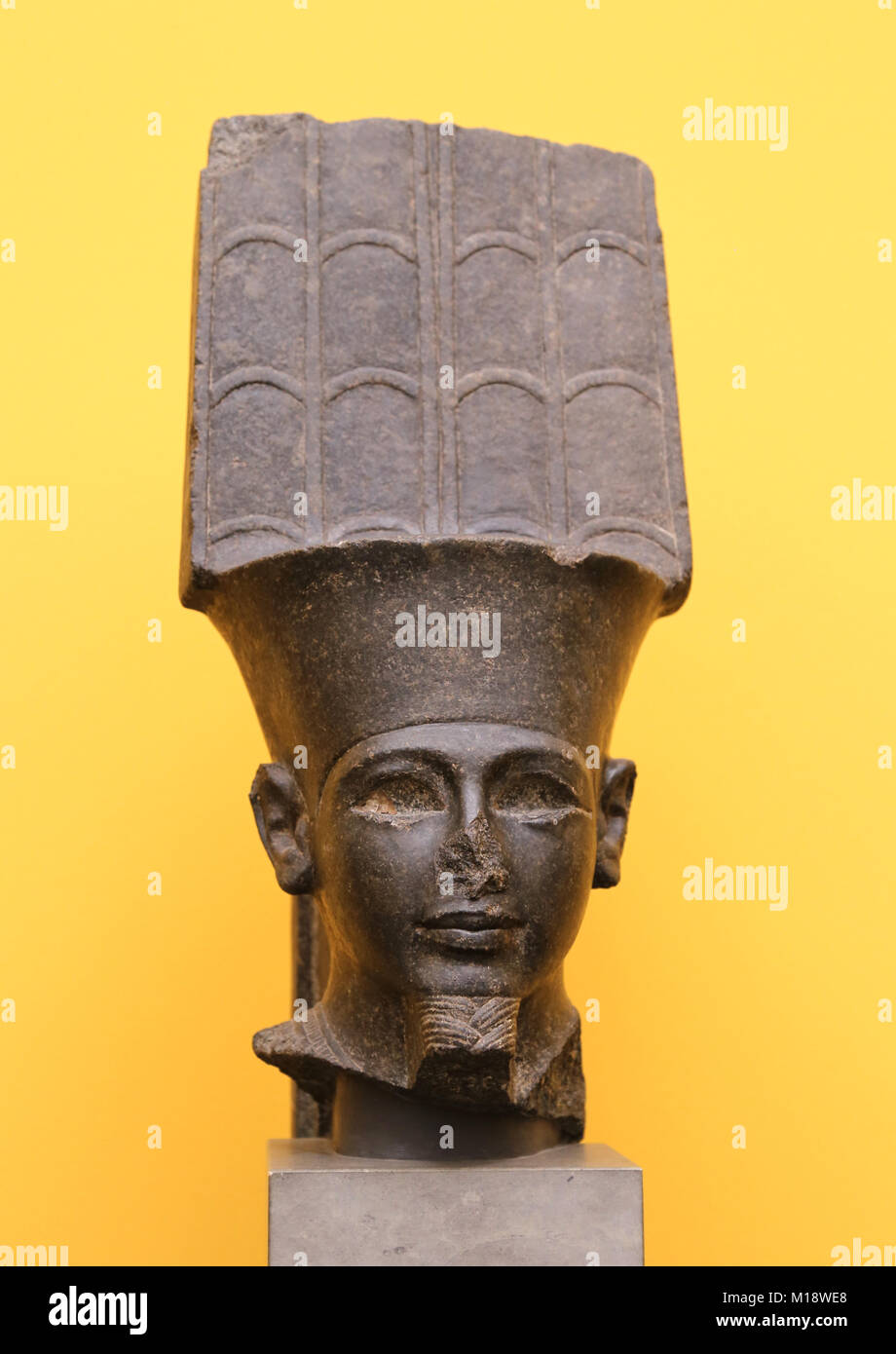 The God Amun,from Karnak, reign of Tutankhamun. C. 1346-1337 BC. Bust, diorite. Carlsberg Glyptotek. Stock Photohttps://www.alamy.com/image-license-details/?v=1https://www.alamy.com/stock-photo-the-god-amunfrom-karnak-reign-of-tutankhamun-c-1346-1337-bc-bust-diorite-172913952.html
The God Amun,from Karnak, reign of Tutankhamun. C. 1346-1337 BC. Bust, diorite. Carlsberg Glyptotek. Stock Photohttps://www.alamy.com/image-license-details/?v=1https://www.alamy.com/stock-photo-the-god-amunfrom-karnak-reign-of-tutankhamun-c-1346-1337-bc-bust-diorite-172913952.htmlRMM18WE8–The God Amun,from Karnak, reign of Tutankhamun. C. 1346-1337 BC. Bust, diorite. Carlsberg Glyptotek.
 Egyptian block statue of Teti. 18th Dynasty (approx. 1450 BC), probably from Karnak. Teti shown seated on a matt with his feet and arms protruding from a leopard skin coat. Stock Photohttps://www.alamy.com/image-license-details/?v=1https://www.alamy.com/stock-photo-egyptian-block-statue-of-teti-18th-dynasty-approx-1450-bc-probably-57307455.html
Egyptian block statue of Teti. 18th Dynasty (approx. 1450 BC), probably from Karnak. Teti shown seated on a matt with his feet and arms protruding from a leopard skin coat. Stock Photohttps://www.alamy.com/image-license-details/?v=1https://www.alamy.com/stock-photo-egyptian-block-statue-of-teti-18th-dynasty-approx-1450-bc-probably-57307455.htmlRMD96G6R–Egyptian block statue of Teti. 18th Dynasty (approx. 1450 BC), probably from Karnak. Teti shown seated on a matt with his feet and arms protruding from a leopard skin coat.
 Ariessphingenallee with pylon from Karnak Temple, Karnak near Luxor, Upper Egypt, Egypt Stock Photohttps://www.alamy.com/image-license-details/?v=1https://www.alamy.com/ariessphingenallee-with-pylon-from-karnak-temple-karnak-near-luxor-upper-egypt-egypt-image273715567.html
Ariessphingenallee with pylon from Karnak Temple, Karnak near Luxor, Upper Egypt, Egypt Stock Photohttps://www.alamy.com/image-license-details/?v=1https://www.alamy.com/ariessphingenallee-with-pylon-from-karnak-temple-karnak-near-luxor-upper-egypt-egypt-image273715567.htmlRMWW8PYY–Ariessphingenallee with pylon from Karnak Temple, Karnak near Luxor, Upper Egypt, Egypt
 Statue of an arm from Karnak, British Museum, Victorian period Stock Photohttps://www.alamy.com/image-license-details/?v=1https://www.alamy.com/statue-of-an-arm-from-karnak-british-museum-victorian-period-image454585738.html
Statue of an arm from Karnak, British Museum, Victorian period Stock Photohttps://www.alamy.com/image-license-details/?v=1https://www.alamy.com/statue-of-an-arm-from-karnak-british-museum-victorian-period-image454585738.htmlRF2HBG4MX–Statue of an arm from Karnak, British Museum, Victorian period
 Egypt, Luxor, statues from Karnak temple Stock Photohttps://www.alamy.com/image-license-details/?v=1https://www.alamy.com/egypt-luxor-statues-from-karnak-temple-image6824438.html
Egypt, Luxor, statues from Karnak temple Stock Photohttps://www.alamy.com/image-license-details/?v=1https://www.alamy.com/egypt-luxor-statues-from-karnak-temple-image6824438.htmlRMA802R7–Egypt, Luxor, statues from Karnak temple
 Italy, Rome. Lateran Obelisk, from Karnak. Located in the square across from the Archbasilica of St. John Lateran. Backlighting. Stock Photohttps://www.alamy.com/image-license-details/?v=1https://www.alamy.com/stock-image-italy-rome-lateran-obelisk-from-karnak-located-in-the-square-across-160117862.html
Italy, Rome. Lateran Obelisk, from Karnak. Located in the square across from the Archbasilica of St. John Lateran. Backlighting. Stock Photohttps://www.alamy.com/image-license-details/?v=1https://www.alamy.com/stock-image-italy-rome-lateran-obelisk-from-karnak-located-in-the-square-across-160117862.htmlRMK8DYY2–Italy, Rome. Lateran Obelisk, from Karnak. Located in the square across from the Archbasilica of St. John Lateran. Backlighting.
 Goddess Sekhmet 18th dynasty from Karnak Stock Photohttps://www.alamy.com/image-license-details/?v=1https://www.alamy.com/stock-photo-goddess-sekhmet-18th-dynasty-from-karnak-128677725.html
Goddess Sekhmet 18th dynasty from Karnak Stock Photohttps://www.alamy.com/image-license-details/?v=1https://www.alamy.com/stock-photo-goddess-sekhmet-18th-dynasty-from-karnak-128677725.htmlRMHD9NN1–Goddess Sekhmet 18th dynasty from Karnak
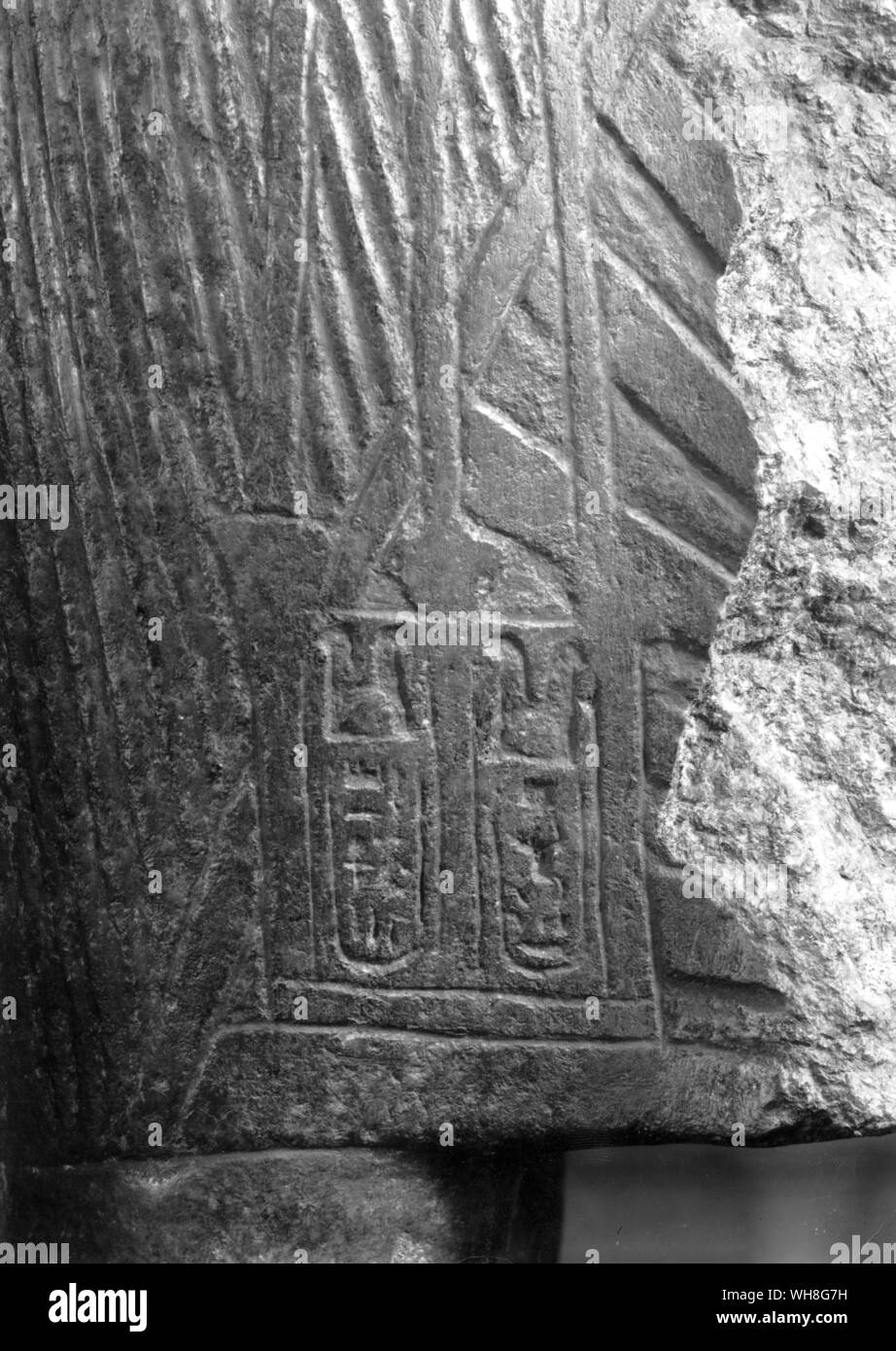 The names of Tutankhamen which have survived on the memorial statue from Karnak. Tutankhamen by Christiane Desroches Noblecourt, page 287.. Stock Photohttps://www.alamy.com/image-license-details/?v=1https://www.alamy.com/the-names-of-tutankhamen-which-have-survived-on-the-memorial-statue-from-karnak-tutankhamen-by-christiane-desroches-noblecourt-page-287-image268793045.html
The names of Tutankhamen which have survived on the memorial statue from Karnak. Tutankhamen by Christiane Desroches Noblecourt, page 287.. Stock Photohttps://www.alamy.com/image-license-details/?v=1https://www.alamy.com/the-names-of-tutankhamen-which-have-survived-on-the-memorial-statue-from-karnak-tutankhamen-by-christiane-desroches-noblecourt-page-287-image268793045.htmlRMWH8G7H–The names of Tutankhamen which have survived on the memorial statue from Karnak. Tutankhamen by Christiane Desroches Noblecourt, page 287..
 Mentuhotep, polychromed stoneware statue of Syriac style, it comes from Karnak. Stock Photohttps://www.alamy.com/image-license-details/?v=1https://www.alamy.com/mentuhotep-polychromed-stoneware-statue-of-syriac-style-it-comes-from-karnak-image212468096.html
Mentuhotep, polychromed stoneware statue of Syriac style, it comes from Karnak. Stock Photohttps://www.alamy.com/image-license-details/?v=1https://www.alamy.com/mentuhotep-polychromed-stoneware-statue-of-syriac-style-it-comes-from-karnak-image212468096.htmlRMP9JN68–Mentuhotep, polychromed stoneware statue of Syriac style, it comes from Karnak.
 Egypt, Cairo, Egyptian Museum, votive stela with 2 rams of Amon, sandstone, from Karnak. Stock Photohttps://www.alamy.com/image-license-details/?v=1https://www.alamy.com/egypt-cairo-egyptian-museum-votive-stela-with-2-rams-of-amon-sandstone-from-karnak-image368135966.html
Egypt, Cairo, Egyptian Museum, votive stela with 2 rams of Amon, sandstone, from Karnak. Stock Photohttps://www.alamy.com/image-license-details/?v=1https://www.alamy.com/egypt-cairo-egyptian-museum-votive-stela-with-2-rams-of-amon-sandstone-from-karnak-image368135966.htmlRM2CAX152–Egypt, Cairo, Egyptian Museum, votive stela with 2 rams of Amon, sandstone, from Karnak.
 Karnak, Egypt from the air Stock Photohttps://www.alamy.com/image-license-details/?v=1https://www.alamy.com/karnak-egypt-from-the-air-image504869850.html
Karnak, Egypt from the air Stock Photohttps://www.alamy.com/image-license-details/?v=1https://www.alamy.com/karnak-egypt-from-the-air-image504869850.htmlRM2M9APJ2–Karnak, Egypt from the air
 RUINS AT KARNAK - from 'Cassell's Illustrated Universal History' - 1882 Stock Photohttps://www.alamy.com/image-license-details/?v=1https://www.alamy.com/stock-photo-ruins-at-karnak-from-cassells-illustrated-universal-history-1882-122200141.html
RUINS AT KARNAK - from 'Cassell's Illustrated Universal History' - 1882 Stock Photohttps://www.alamy.com/image-license-details/?v=1https://www.alamy.com/stock-photo-ruins-at-karnak-from-cassells-illustrated-universal-history-1882-122200141.htmlRMH2PKEN–RUINS AT KARNAK - from 'Cassell's Illustrated Universal History' - 1882
 Gold statuette of Amun from karnak. Egypt Stock Photohttps://www.alamy.com/image-license-details/?v=1https://www.alamy.com/stock-photo-gold-statuette-of-amun-from-karnak-egypt-17843054.html
Gold statuette of Amun from karnak. Egypt Stock Photohttps://www.alamy.com/image-license-details/?v=1https://www.alamy.com/stock-photo-gold-statuette-of-amun-from-karnak-egypt-17843054.htmlRMB10PYX–Gold statuette of Amun from karnak. Egypt
 Luxor museum, Block statue of Nespeka Shuty(Vizier), a judge and priest of Amun and Maat, from Karnak temple, Luxor, Egypt, North Africa, Africa Stock Photohttps://www.alamy.com/image-license-details/?v=1https://www.alamy.com/luxor-museum-block-statue-of-nespeka-shutyvizier-a-judge-and-priest-of-amun-and-maat-from-karnak-temple-luxor-egypt-north-africa-africa-image618280092.html
Luxor museum, Block statue of Nespeka Shuty(Vizier), a judge and priest of Amun and Maat, from Karnak temple, Luxor, Egypt, North Africa, Africa Stock Photohttps://www.alamy.com/image-license-details/?v=1https://www.alamy.com/luxor-museum-block-statue-of-nespeka-shutyvizier-a-judge-and-priest-of-amun-and-maat-from-karnak-temple-luxor-egypt-north-africa-africa-image618280092.htmlRM2XWW2FT–Luxor museum, Block statue of Nespeka Shuty(Vizier), a judge and priest of Amun and Maat, from Karnak temple, Luxor, Egypt, North Africa, Africa
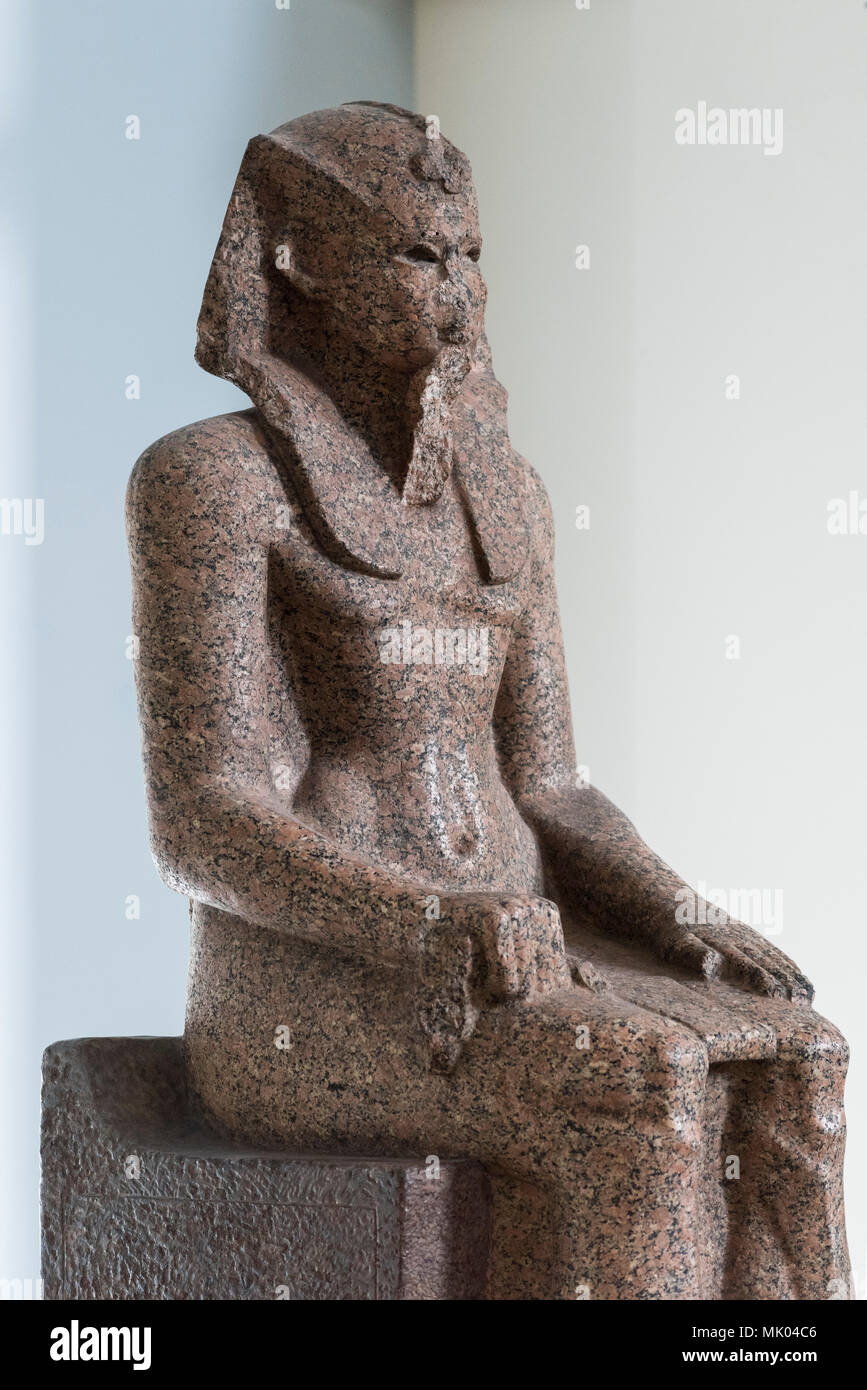 London. England. British Museum. Statue of Egyptian Pharaoh Sobekemsaf I wearing a Nemes, from Karnak (Thebes), Egypt. 17th Dynasty, about 1600 BC, Se Stock Photohttps://www.alamy.com/image-license-details/?v=1https://www.alamy.com/london-england-british-museum-statue-of-egyptian-pharaoh-sobekemsaf-i-wearing-a-nemes-from-karnak-thebes-egypt-17th-dynasty-about-1600-bc-se-image183785622.html
London. England. British Museum. Statue of Egyptian Pharaoh Sobekemsaf I wearing a Nemes, from Karnak (Thebes), Egypt. 17th Dynasty, about 1600 BC, Se Stock Photohttps://www.alamy.com/image-license-details/?v=1https://www.alamy.com/london-england-british-museum-statue-of-egyptian-pharaoh-sobekemsaf-i-wearing-a-nemes-from-karnak-thebes-egypt-17th-dynasty-about-1600-bc-se-image183785622.htmlRMMK04C6–London. England. British Museum. Statue of Egyptian Pharaoh Sobekemsaf I wearing a Nemes, from Karnak (Thebes), Egypt. 17th Dynasty, about 1600 BC, Se
 Italy, Rome. Lateran Obelisk, from Karnak. Located in the square across from the Archbasilica of St. John Lateran. Backlighting. Stock Photohttps://www.alamy.com/image-license-details/?v=1https://www.alamy.com/italy-rome-lateran-obelisk-from-karnak-located-in-the-square-across-from-the-archbasilica-of-st-john-lateran-backlighting-image209565492.html
Italy, Rome. Lateran Obelisk, from Karnak. Located in the square across from the Archbasilica of St. John Lateran. Backlighting. Stock Photohttps://www.alamy.com/image-license-details/?v=1https://www.alamy.com/italy-rome-lateran-obelisk-from-karnak-located-in-the-square-across-from-the-archbasilica-of-st-john-lateran-backlighting-image209565492.htmlRMP4XEWT–Italy, Rome. Lateran Obelisk, from Karnak. Located in the square across from the Archbasilica of St. John Lateran. Backlighting.
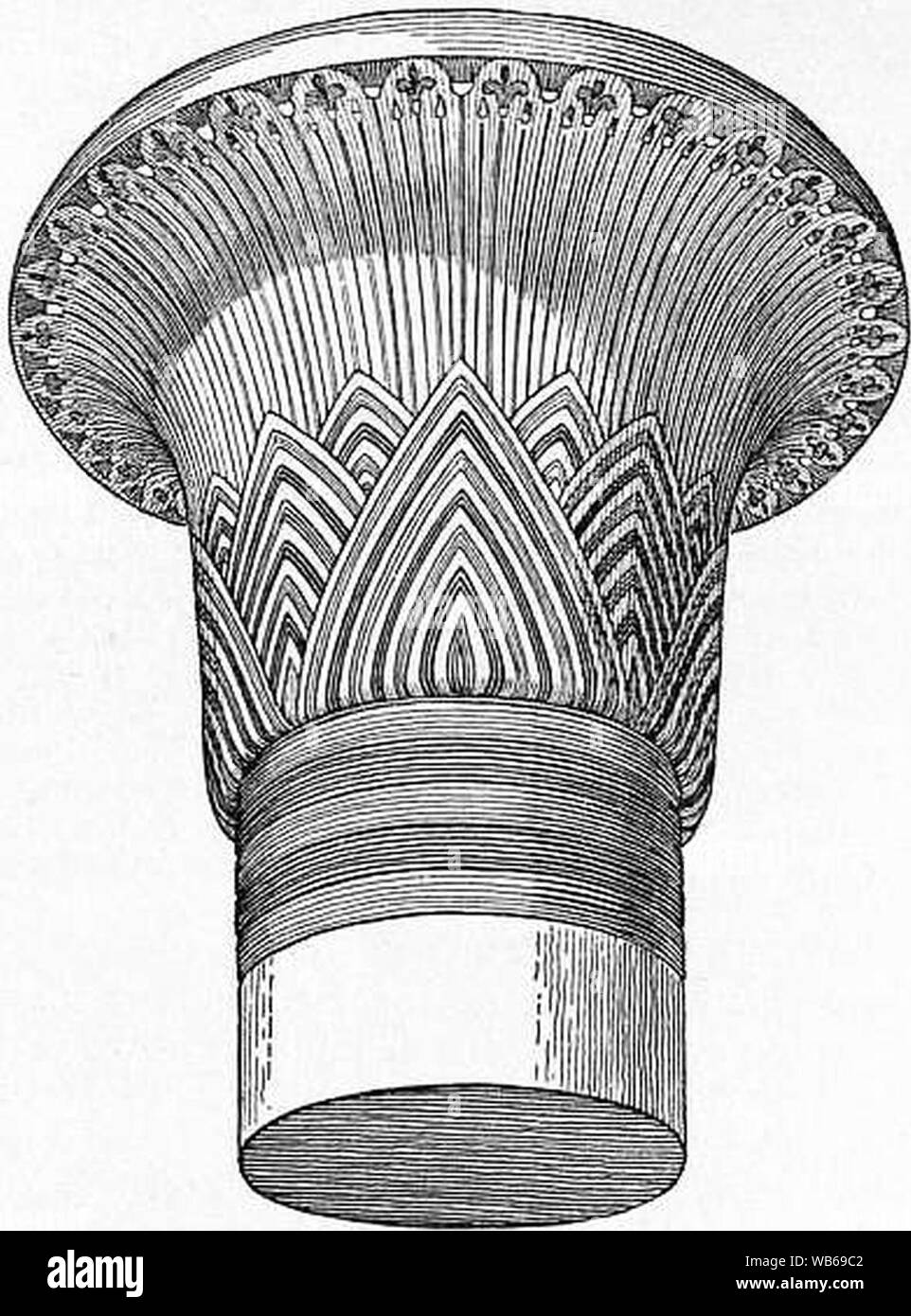 EB1911 Capital Fig. 2 Papyrus Capital from Karnak. Stock Photohttps://www.alamy.com/image-license-details/?v=1https://www.alamy.com/eb1911-capital-fig-2-papyrus-capital-from-karnak-image265055842.html
EB1911 Capital Fig. 2 Papyrus Capital from Karnak. Stock Photohttps://www.alamy.com/image-license-details/?v=1https://www.alamy.com/eb1911-capital-fig-2-papyrus-capital-from-karnak-image265055842.htmlRMWB69C2–EB1911 Capital Fig. 2 Papyrus Capital from Karnak.
 Etching by Ralph Chesley Ott, scene from Karnak, Egypt Title: Etching of Karnak by Ralph Chesley Ott . circa 1900. Ott, Ralph Chesley 1870-1931 Stock Photohttps://www.alamy.com/image-license-details/?v=1https://www.alamy.com/etching-by-ralph-chesley-ott-scene-from-karnak-egypt-title-etching-of-karnak-by-ralph-chesley-ott-circa-1900-ott-ralph-chesley-1870-1931-image178681072.html
Etching by Ralph Chesley Ott, scene from Karnak, Egypt Title: Etching of Karnak by Ralph Chesley Ott . circa 1900. Ott, Ralph Chesley 1870-1931 Stock Photohttps://www.alamy.com/image-license-details/?v=1https://www.alamy.com/etching-by-ralph-chesley-ott-scene-from-karnak-egypt-title-etching-of-karnak-by-ralph-chesley-ott-circa-1900-ott-ralph-chesley-1870-1931-image178681072.htmlRMMAKHET–Etching by Ralph Chesley Ott, scene from Karnak, Egypt Title: Etching of Karnak by Ralph Chesley Ott . circa 1900. Ott, Ralph Chesley 1870-1931
 Statue of the goddess lioness Sekhmet, from Karnak (temple of Mut), XVIII dynasty Stock Photohttps://www.alamy.com/image-license-details/?v=1https://www.alamy.com/statue-of-the-goddess-lioness-sekhmet-from-karnak-temple-of-mut-xviii-dynasty-image612011710.html
Statue of the goddess lioness Sekhmet, from Karnak (temple of Mut), XVIII dynasty Stock Photohttps://www.alamy.com/image-license-details/?v=1https://www.alamy.com/statue-of-the-goddess-lioness-sekhmet-from-karnak-temple-of-mut-xviii-dynasty-image612011710.htmlRF2XFKF52–Statue of the goddess lioness Sekhmet, from Karnak (temple of Mut), XVIII dynasty
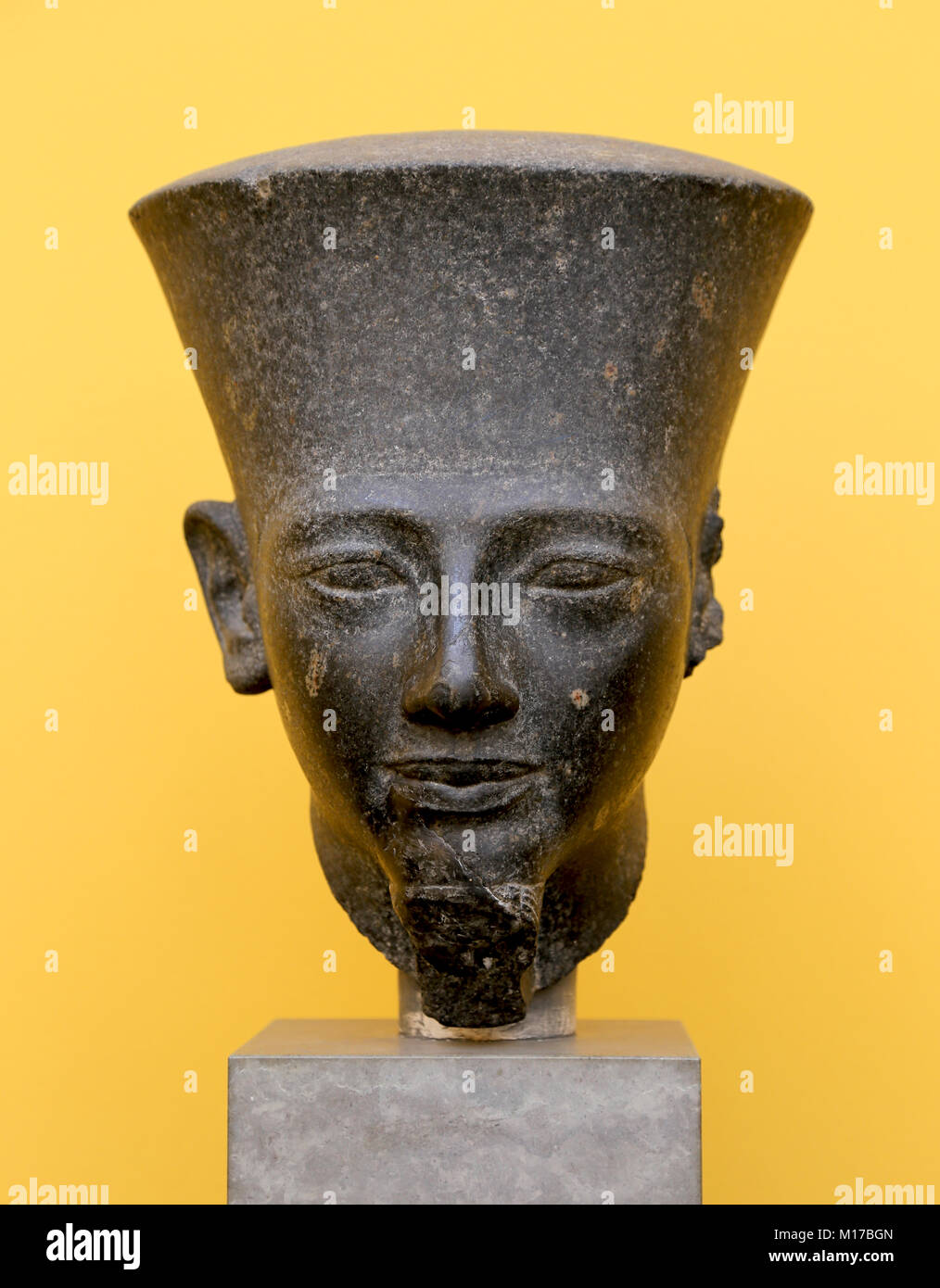 The God Amun,from Karnak, reign of Horemheb. C. 1332-1305 BC. Bust, diorite. Carlsberg Glyptotek. Denmark. Stock Photohttps://www.alamy.com/image-license-details/?v=1https://www.alamy.com/stock-photo-the-god-amunfrom-karnak-reign-of-horemheb-c-1332-1305-bc-bust-diorite-172881093.html
The God Amun,from Karnak, reign of Horemheb. C. 1332-1305 BC. Bust, diorite. Carlsberg Glyptotek. Denmark. Stock Photohttps://www.alamy.com/image-license-details/?v=1https://www.alamy.com/stock-photo-the-god-amunfrom-karnak-reign-of-horemheb-c-1332-1305-bc-bust-diorite-172881093.htmlRMM17BGN–The God Amun,from Karnak, reign of Horemheb. C. 1332-1305 BC. Bust, diorite. Carlsberg Glyptotek. Denmark.
 Egyptian block statue of Teti. 18th Dynasty (approx. 1450 BC), probably from Karnak. Teti shown seated on a matt with his feet and arms protruding from a leopard skin coat. Stock Photohttps://www.alamy.com/image-license-details/?v=1https://www.alamy.com/stock-photo-egyptian-block-statue-of-teti-18th-dynasty-approx-1450-bc-probably-57307461.html
Egyptian block statue of Teti. 18th Dynasty (approx. 1450 BC), probably from Karnak. Teti shown seated on a matt with his feet and arms protruding from a leopard skin coat. Stock Photohttps://www.alamy.com/image-license-details/?v=1https://www.alamy.com/stock-photo-egyptian-block-statue-of-teti-18th-dynasty-approx-1450-bc-probably-57307461.htmlRMD96G71–Egyptian block statue of Teti. 18th Dynasty (approx. 1450 BC), probably from Karnak. Teti shown seated on a matt with his feet and arms protruding from a leopard skin coat.
 Detail from Karnak temple Stock Photohttps://www.alamy.com/image-license-details/?v=1https://www.alamy.com/stock-photo-detail-from-karnak-temple-10757975.html
Detail from Karnak temple Stock Photohttps://www.alamy.com/image-license-details/?v=1https://www.alamy.com/stock-photo-detail-from-karnak-temple-10757975.htmlRMA3E4CT–Detail from Karnak temple
 Statue of an arm from Karnak, British Museum, Victorian period Stock Photohttps://www.alamy.com/image-license-details/?v=1https://www.alamy.com/statue-of-an-arm-from-karnak-british-museum-victorian-period-image454585722.html
Statue of an arm from Karnak, British Museum, Victorian period Stock Photohttps://www.alamy.com/image-license-details/?v=1https://www.alamy.com/statue-of-an-arm-from-karnak-british-museum-victorian-period-image454585722.htmlRF2HBG4MA–Statue of an arm from Karnak, British Museum, Victorian period
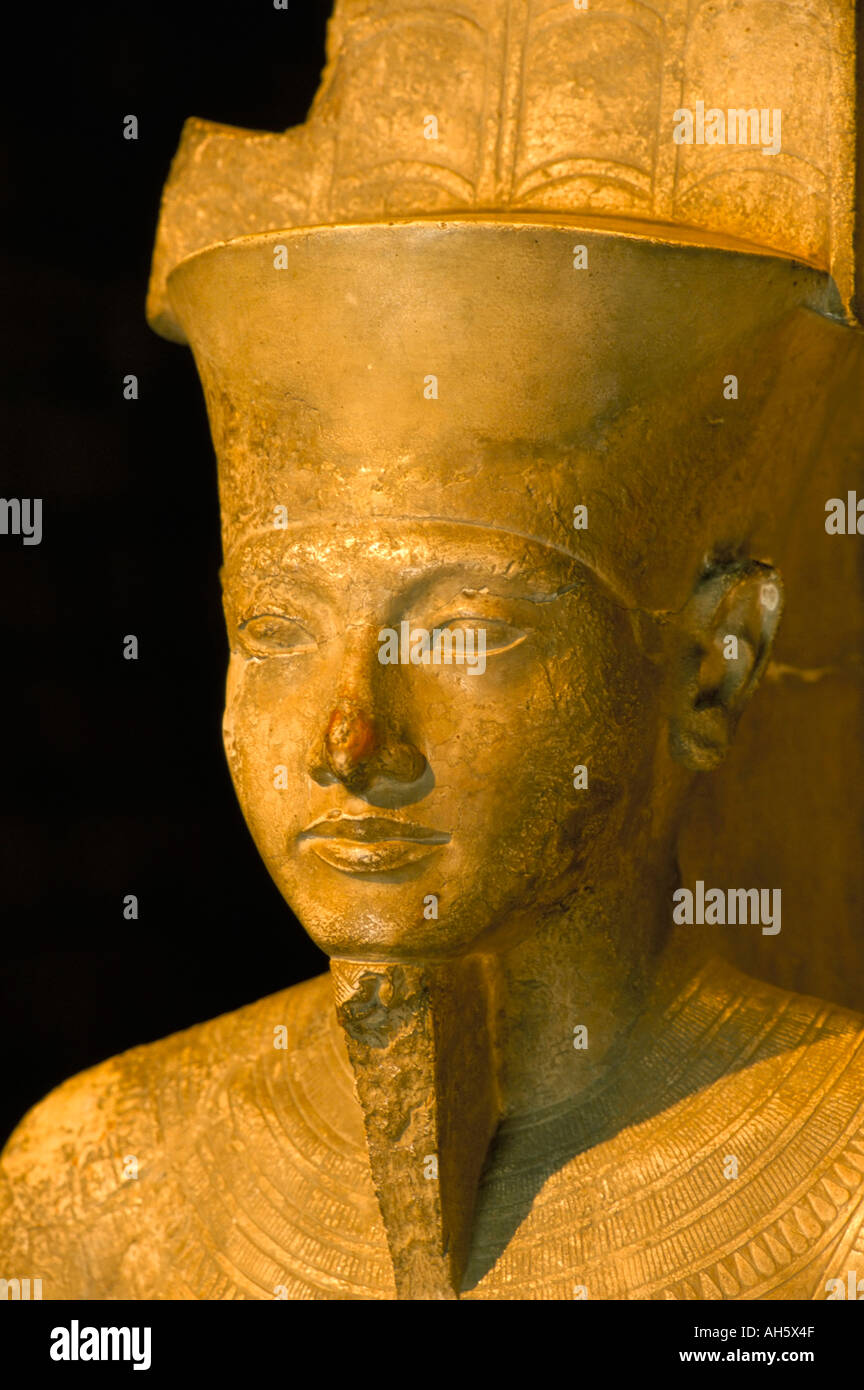 The god Amun from Karnak Luxor Museum Luxor Egypt North Africa Africa Stock Photohttps://www.alamy.com/image-license-details/?v=1https://www.alamy.com/the-god-amun-from-karnak-luxor-museum-luxor-egypt-north-africa-africa-image4691534.html
The god Amun from Karnak Luxor Museum Luxor Egypt North Africa Africa Stock Photohttps://www.alamy.com/image-license-details/?v=1https://www.alamy.com/the-god-amun-from-karnak-luxor-museum-luxor-egypt-north-africa-africa-image4691534.htmlRMAH5X4F–The god Amun from Karnak Luxor Museum Luxor Egypt North Africa Africa
 Relief of a pharaoh Akhenaten or Nefertiti. Sandstone. Probably from Karnak, Egypt. Amarna Period. Ny Carlsberg Glyptotek. Stock Photohttps://www.alamy.com/image-license-details/?v=1https://www.alamy.com/stock-photo-relief-of-a-pharaoh-akhenaten-or-nefertiti-sandstone-probably-from-50645782.html
Relief of a pharaoh Akhenaten or Nefertiti. Sandstone. Probably from Karnak, Egypt. Amarna Period. Ny Carlsberg Glyptotek. Stock Photohttps://www.alamy.com/image-license-details/?v=1https://www.alamy.com/stock-photo-relief-of-a-pharaoh-akhenaten-or-nefertiti-sandstone-probably-from-50645782.htmlRMCXB35X–Relief of a pharaoh Akhenaten or Nefertiti. Sandstone. Probably from Karnak, Egypt. Amarna Period. Ny Carlsberg Glyptotek.
 Goddess Sekhmet 18th dynasty from Karnak Stock Photohttps://www.alamy.com/image-license-details/?v=1https://www.alamy.com/stock-photo-goddess-sekhmet-18th-dynasty-from-karnak-128677770.html
Goddess Sekhmet 18th dynasty from Karnak Stock Photohttps://www.alamy.com/image-license-details/?v=1https://www.alamy.com/stock-photo-goddess-sekhmet-18th-dynasty-from-karnak-128677770.htmlRMHD9NPJ–Goddess Sekhmet 18th dynasty from Karnak
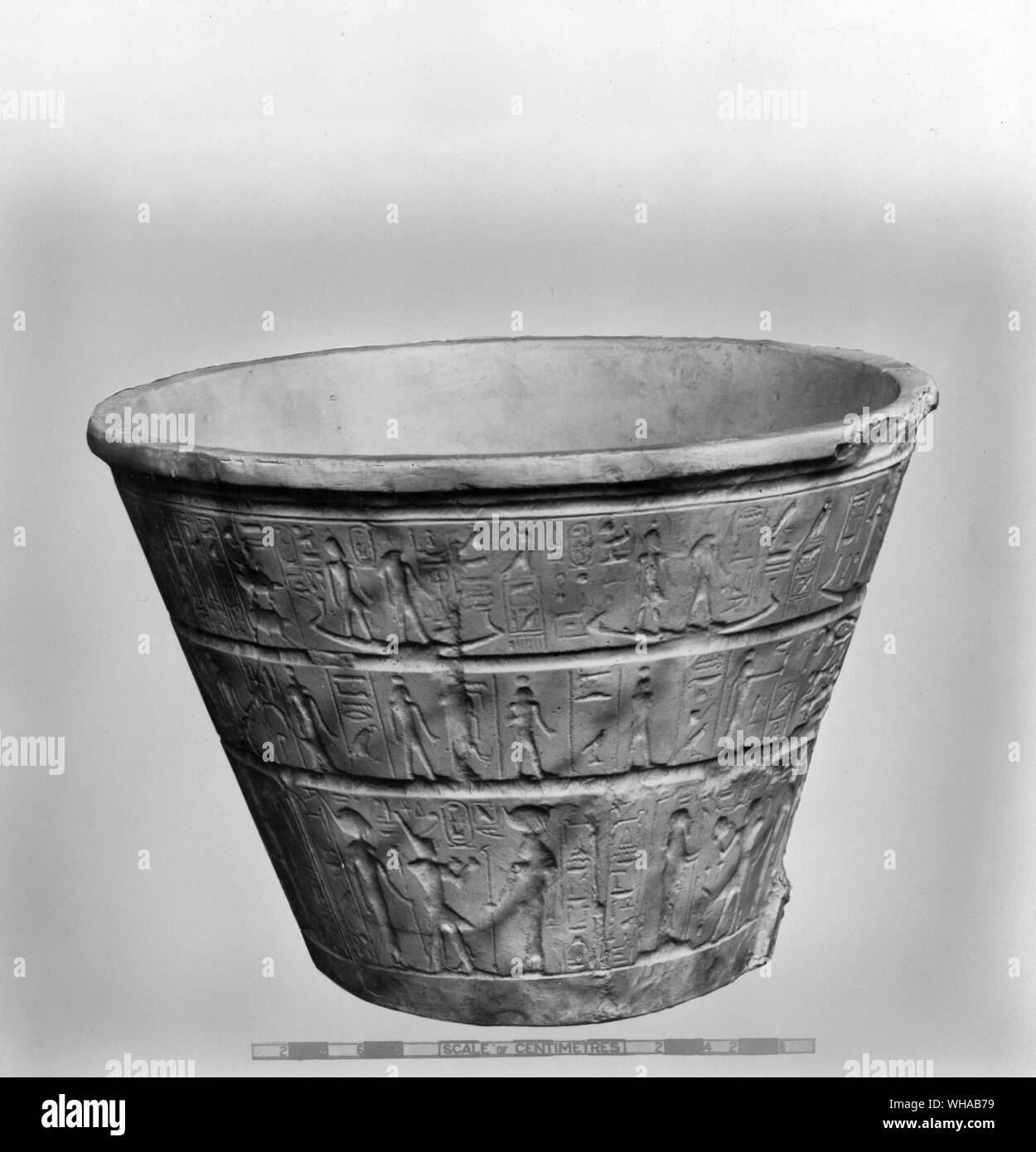 Cast of Egyptian water clock from Karnak Temple 1415-1380 BC Stock Photohttps://www.alamy.com/image-license-details/?v=1https://www.alamy.com/cast-of-egyptian-water-clock-from-karnak-temple-1415-1380-bc-image268833021.html
Cast of Egyptian water clock from Karnak Temple 1415-1380 BC Stock Photohttps://www.alamy.com/image-license-details/?v=1https://www.alamy.com/cast-of-egyptian-water-clock-from-karnak-temple-1415-1380-bc-image268833021.htmlRMWHAB79–Cast of Egyptian water clock from Karnak Temple 1415-1380 BC
 Statue of Amenhotep IV, made in stoneware with polychromed remains, it comes from Karnak. Stock Photohttps://www.alamy.com/image-license-details/?v=1https://www.alamy.com/statue-of-amenhotep-iv-made-in-stoneware-with-polychromed-remains-it-comes-from-karnak-image212468037.html
Statue of Amenhotep IV, made in stoneware with polychromed remains, it comes from Karnak. Stock Photohttps://www.alamy.com/image-license-details/?v=1https://www.alamy.com/statue-of-amenhotep-iv-made-in-stoneware-with-polychromed-remains-it-comes-from-karnak-image212468037.htmlRMP9JN45–Statue of Amenhotep IV, made in stoneware with polychromed remains, it comes from Karnak.
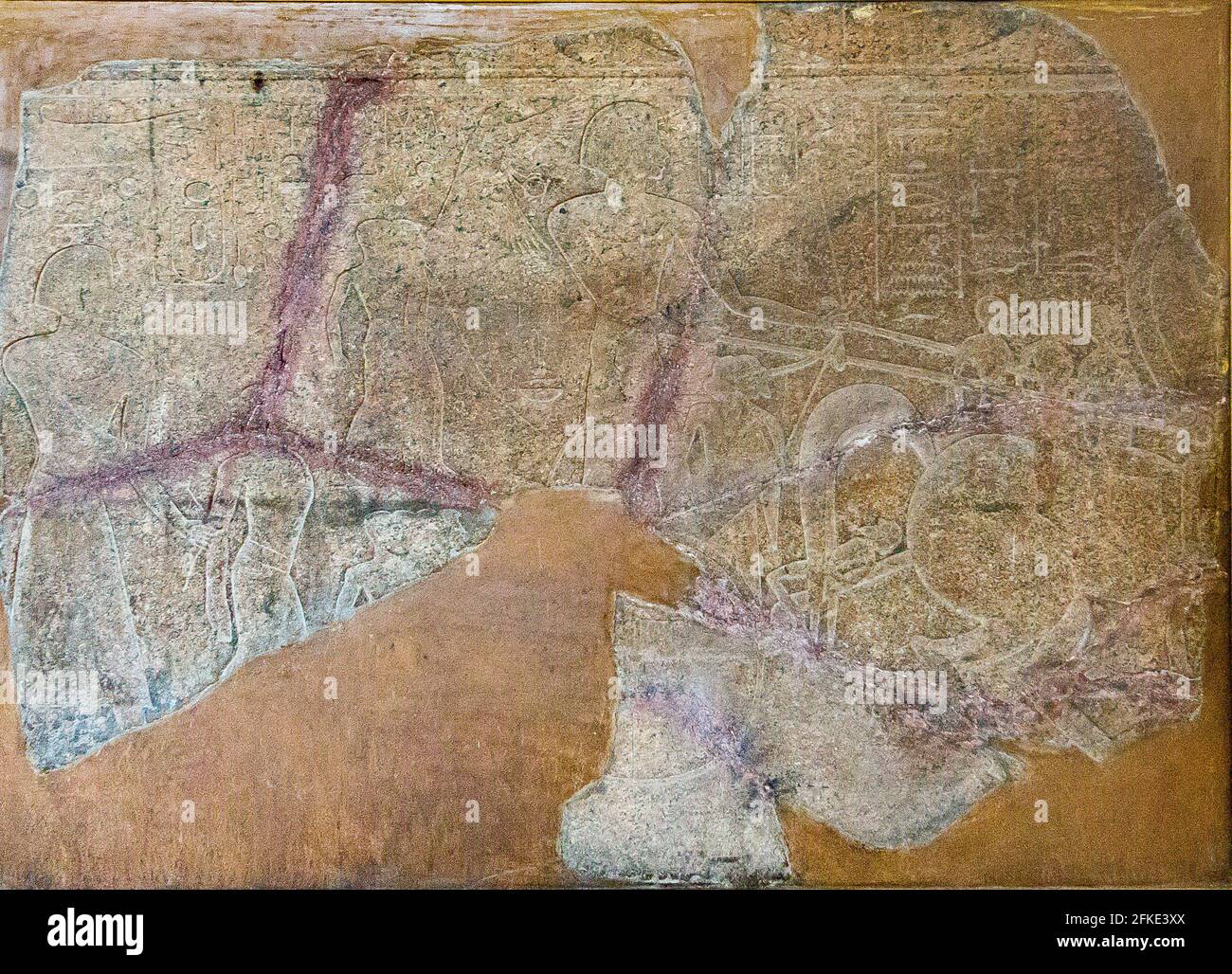 Cairo, Egyptian Museum, relief from Karnak temple : King Amenhotep II presents ennemies, and drives his chariot. Stock Photohttps://www.alamy.com/image-license-details/?v=1https://www.alamy.com/cairo-egyptian-museum-relief-from-karnak-temple-king-amenhotep-ii-presents-ennemies-and-drives-his-chariot-image425037730.html
Cairo, Egyptian Museum, relief from Karnak temple : King Amenhotep II presents ennemies, and drives his chariot. Stock Photohttps://www.alamy.com/image-license-details/?v=1https://www.alamy.com/cairo-egyptian-museum-relief-from-karnak-temple-king-amenhotep-ii-presents-ennemies-and-drives-his-chariot-image425037730.htmlRM2FKE3XX–Cairo, Egyptian Museum, relief from Karnak temple : King Amenhotep II presents ennemies, and drives his chariot.
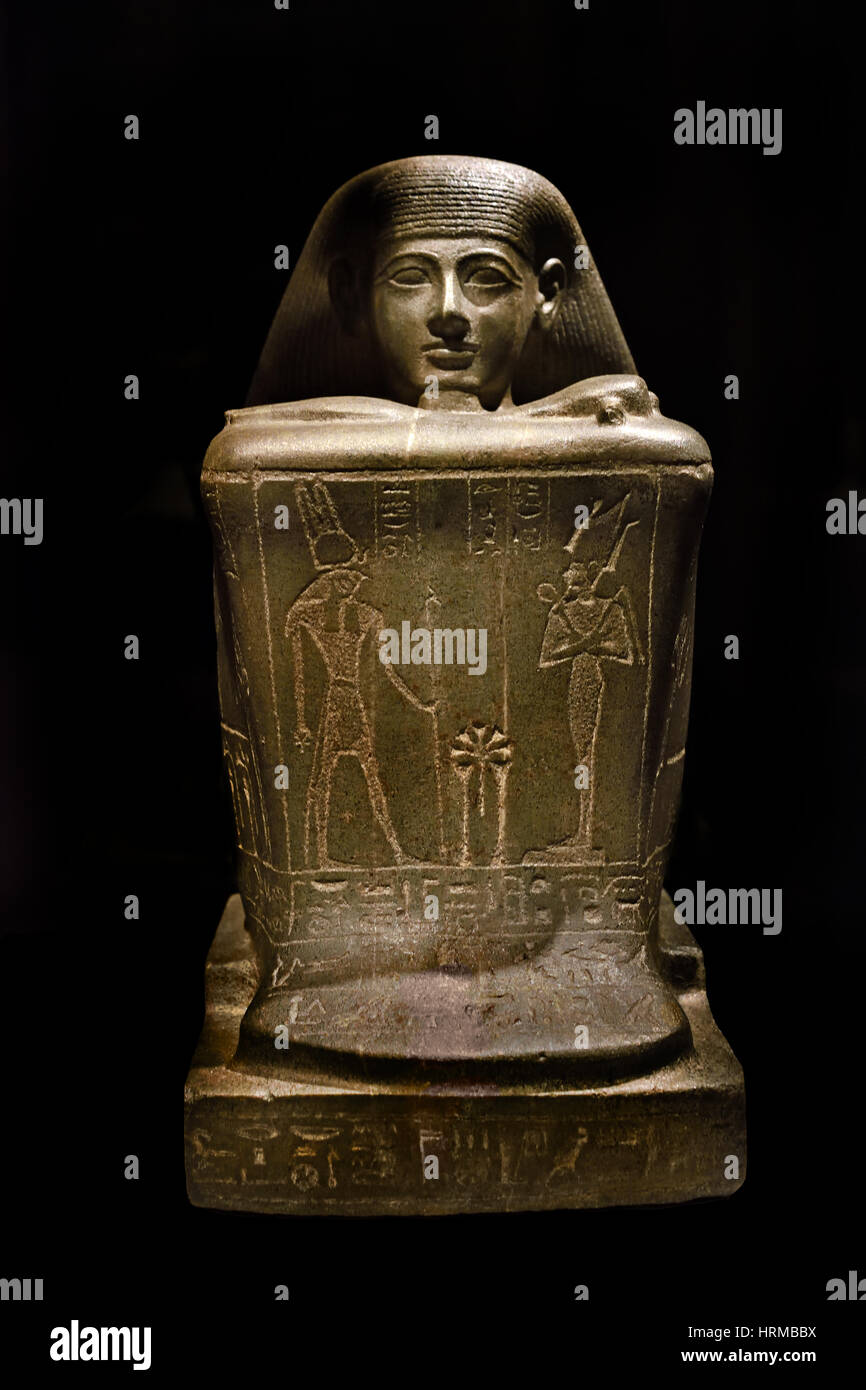 The cube figure of Amun priest Hor comes from Karnak and was created around 775 BC (23rd dynasty). (block statue of Amun priest Hor) pharaoh with the crown of Upper and Lower Egypt is depicted, as well as the phantom-headed god Horus, who revenged the murder of his father Osiris and became a heir to the throne. Stock Photohttps://www.alamy.com/image-license-details/?v=1https://www.alamy.com/stock-photo-the-cube-figure-of-amun-priest-hor-comes-from-karnak-and-was-created-135057662.html
The cube figure of Amun priest Hor comes from Karnak and was created around 775 BC (23rd dynasty). (block statue of Amun priest Hor) pharaoh with the crown of Upper and Lower Egypt is depicted, as well as the phantom-headed god Horus, who revenged the murder of his father Osiris and became a heir to the throne. Stock Photohttps://www.alamy.com/image-license-details/?v=1https://www.alamy.com/stock-photo-the-cube-figure-of-amun-priest-hor-comes-from-karnak-and-was-created-135057662.htmlRMHRMBBX–The cube figure of Amun priest Hor comes from Karnak and was created around 775 BC (23rd dynasty). (block statue of Amun priest Hor) pharaoh with the crown of Upper and Lower Egypt is depicted, as well as the phantom-headed god Horus, who revenged the murder of his father Osiris and became a heir to the throne.
 EB1911 Capital Fig. 1 Lotus Capital from Karnak Stock Photohttps://www.alamy.com/image-license-details/?v=1https://www.alamy.com/eb1911-capital-fig-1-lotus-capital-from-karnak-image159197585.html
EB1911 Capital Fig. 1 Lotus Capital from Karnak Stock Photohttps://www.alamy.com/image-license-details/?v=1https://www.alamy.com/eb1911-capital-fig-1-lotus-capital-from-karnak-image159197585.htmlRMK70241–EB1911 Capital Fig. 1 Lotus Capital from Karnak
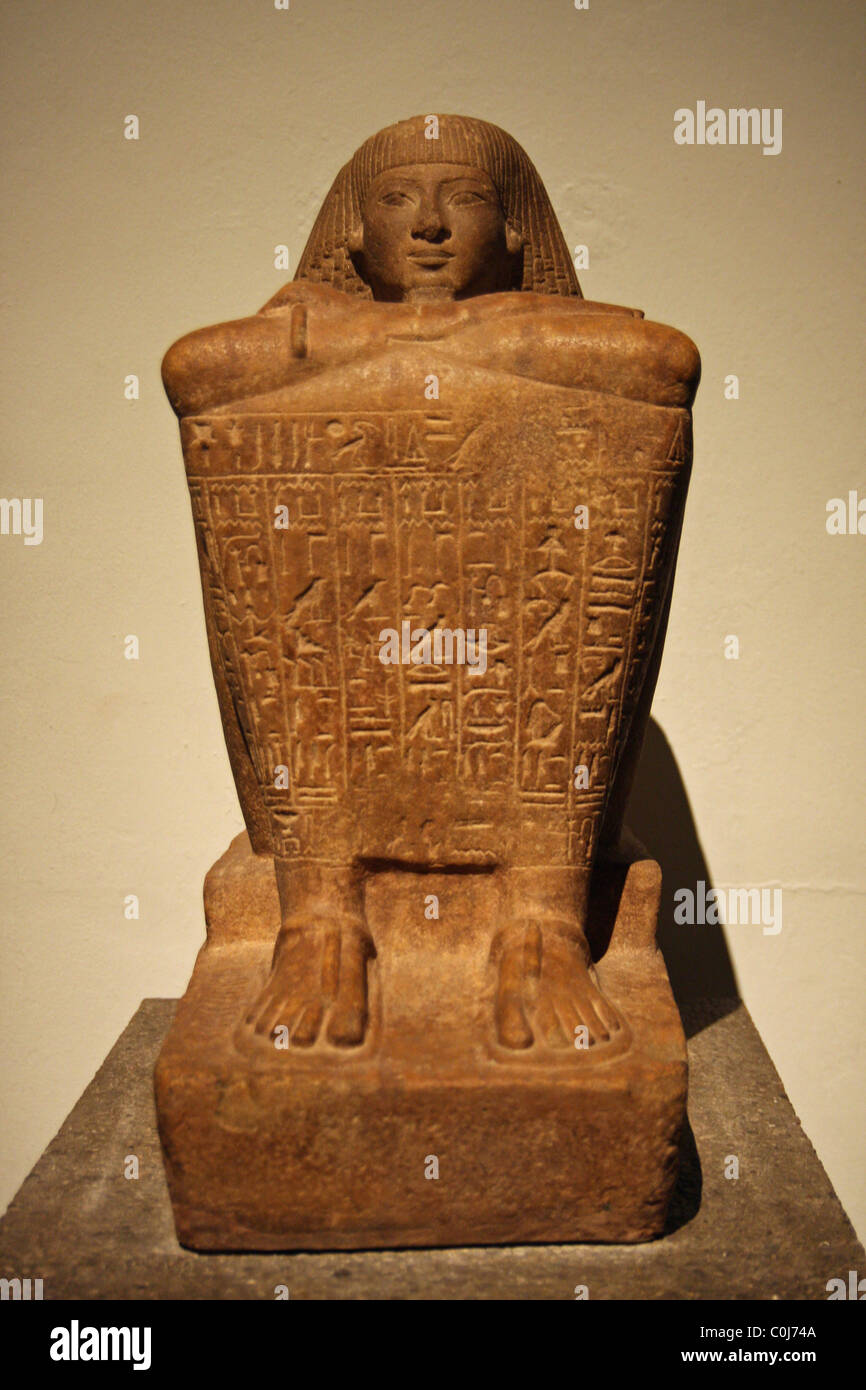 Block statue of Teti at the British Museum. Eighteenth dynasty about 1450 BC. Probably from Karnak in Egypt. Stock Photohttps://www.alamy.com/image-license-details/?v=1https://www.alamy.com/stock-photo-block-statue-of-teti-at-the-british-museum-eighteenth-dynasty-about-34821482.html
Block statue of Teti at the British Museum. Eighteenth dynasty about 1450 BC. Probably from Karnak in Egypt. Stock Photohttps://www.alamy.com/image-license-details/?v=1https://www.alamy.com/stock-photo-block-statue-of-teti-at-the-british-museum-eighteenth-dynasty-about-34821482.htmlRMC0J74A–Block statue of Teti at the British Museum. Eighteenth dynasty about 1450 BC. Probably from Karnak in Egypt.
 Apr. 04, 2012 - Young Egyptologists: King Thothmes III of the XIIIth Dynasty can still command attention and facinate. Young visitors to the Museum examine with scholarly thoroughness his likeness which came from Karnak. Stock Photohttps://www.alamy.com/image-license-details/?v=1https://www.alamy.com/apr-04-2012-young-egyptologists-king-thothmes-iii-of-the-xiiith-dynasty-image69546619.html
Apr. 04, 2012 - Young Egyptologists: King Thothmes III of the XIIIth Dynasty can still command attention and facinate. Young visitors to the Museum examine with scholarly thoroughness his likeness which came from Karnak. Stock Photohttps://www.alamy.com/image-license-details/?v=1https://www.alamy.com/apr-04-2012-young-egyptologists-king-thothmes-iii-of-the-xiiith-dynasty-image69546619.htmlRME143BR–Apr. 04, 2012 - Young Egyptologists: King Thothmes III of the XIIIth Dynasty can still command attention and facinate. Young visitors to the Museum examine with scholarly thoroughness his likeness which came from Karnak.
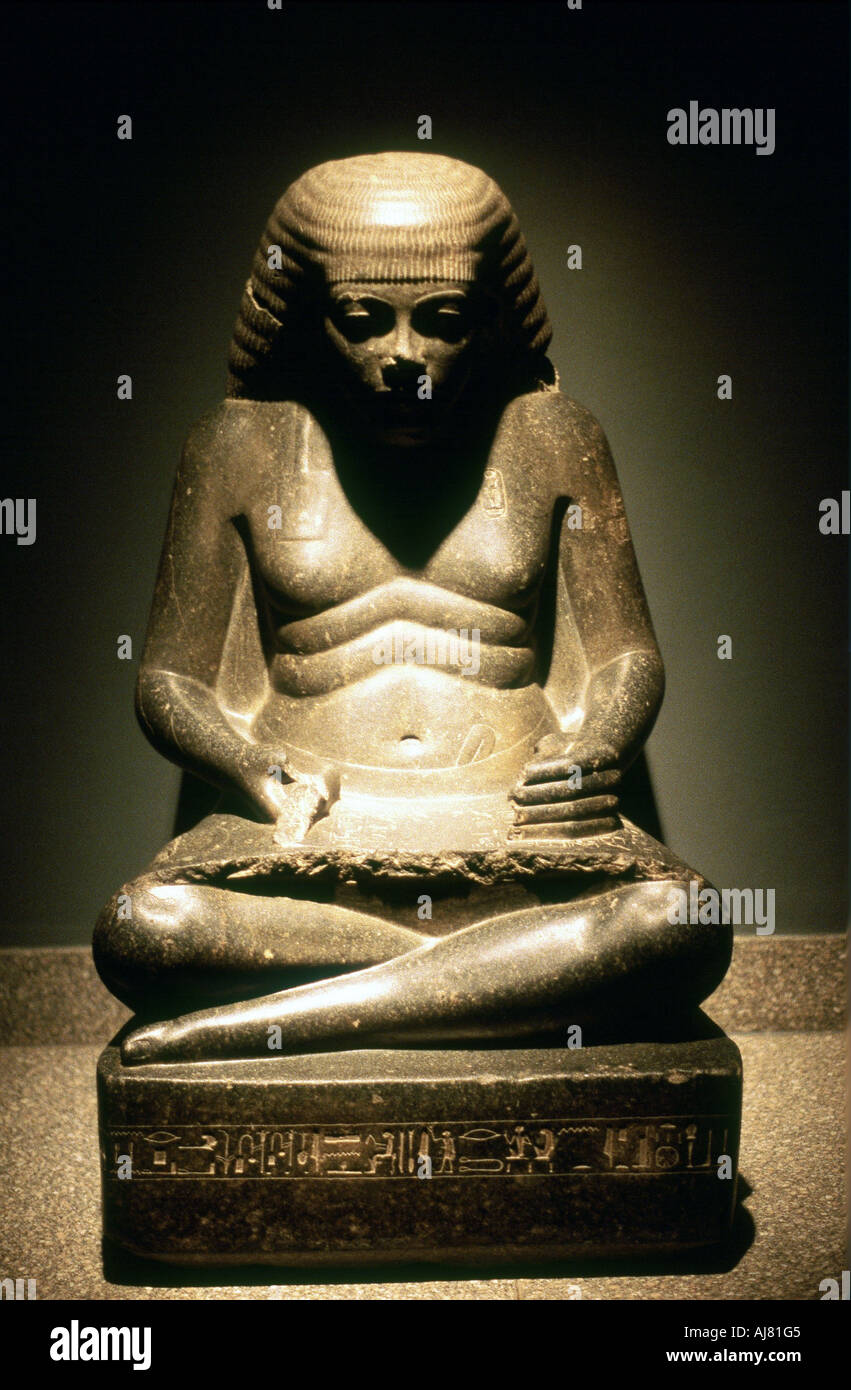 Granite statue of a seated Ancient Egyptian scribe, from Karnak, 17/18th dynasty, c1500 BC. Artist: Unknown Stock Photohttps://www.alamy.com/image-license-details/?v=1https://www.alamy.com/granite-statue-of-a-seated-ancient-egyptian-scribe-from-karnak-1718th-image8372420.html
Granite statue of a seated Ancient Egyptian scribe, from Karnak, 17/18th dynasty, c1500 BC. Artist: Unknown Stock Photohttps://www.alamy.com/image-license-details/?v=1https://www.alamy.com/granite-statue-of-a-seated-ancient-egyptian-scribe-from-karnak-1718th-image8372420.htmlRMAJ81G5–Granite statue of a seated Ancient Egyptian scribe, from Karnak, 17/18th dynasty, c1500 BC. Artist: Unknown
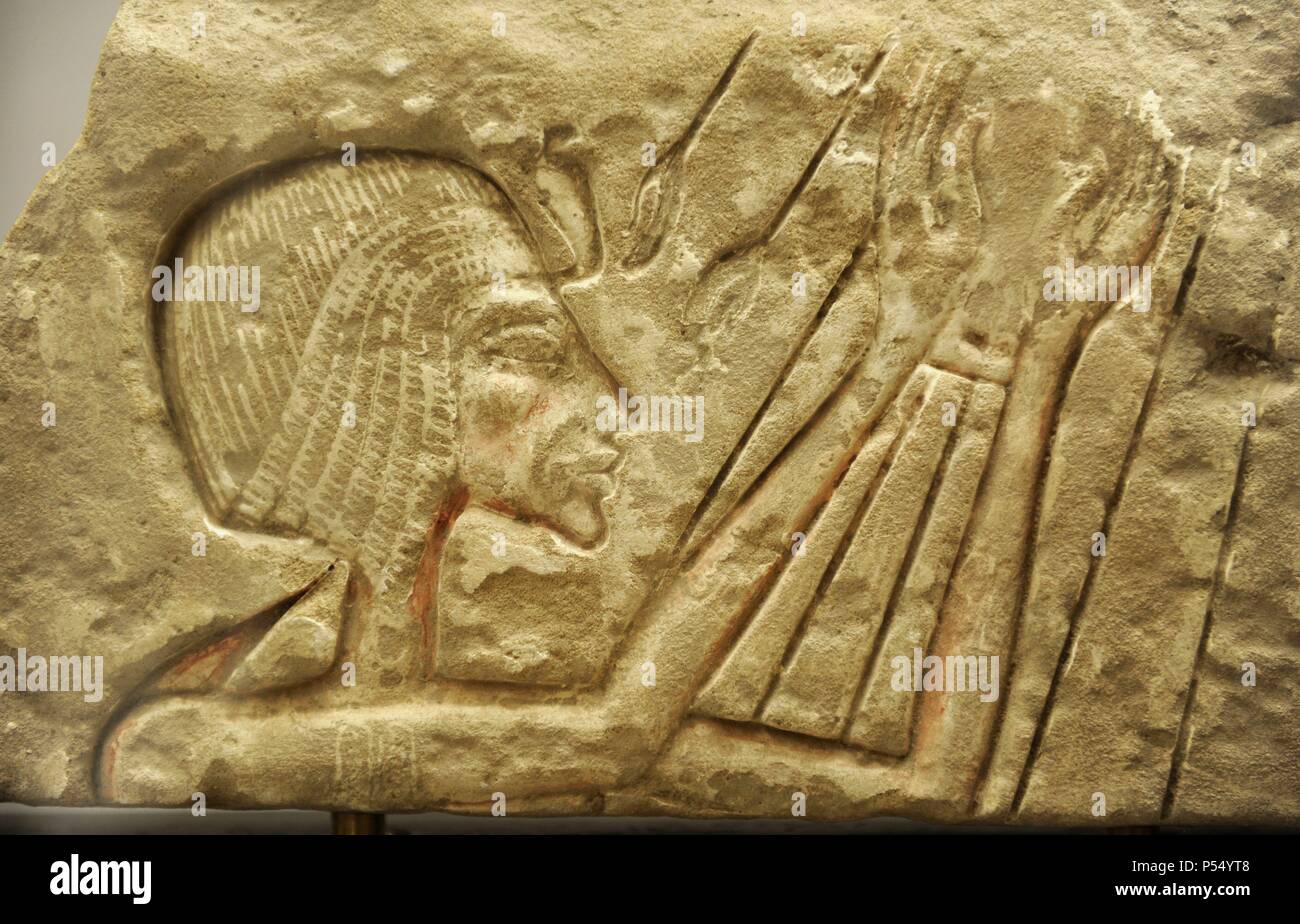 Relief of a pharaoh Akhenaten or Nefertiti. Sandstone. Probably from Karnak, Egypt. Amarna Period. Ny Carlsberg Glyptotek. Copenhagen. Denmark. Stock Photohttps://www.alamy.com/image-license-details/?v=1https://www.alamy.com/relief-of-a-pharaoh-akhenaten-or-nefertiti-sandstone-probably-from-karnak-egypt-amarna-period-ny-carlsberg-glyptotek-copenhagen-denmark-image209707352.html
Relief of a pharaoh Akhenaten or Nefertiti. Sandstone. Probably from Karnak, Egypt. Amarna Period. Ny Carlsberg Glyptotek. Copenhagen. Denmark. Stock Photohttps://www.alamy.com/image-license-details/?v=1https://www.alamy.com/relief-of-a-pharaoh-akhenaten-or-nefertiti-sandstone-probably-from-karnak-egypt-amarna-period-ny-carlsberg-glyptotek-copenhagen-denmark-image209707352.htmlRMP54YT8–Relief of a pharaoh Akhenaten or Nefertiti. Sandstone. Probably from Karnak, Egypt. Amarna Period. Ny Carlsberg Glyptotek. Copenhagen. Denmark.
 Head of a statue of Amenhotep III from Karnak. British Museum, Bloomsbury, London, England, UK. Stock Photohttps://www.alamy.com/image-license-details/?v=1https://www.alamy.com/head-of-a-statue-of-amenhotep-iii-from-karnak-british-museum-bloomsbury-london-england-uk-image217318363.html
Head of a statue of Amenhotep III from Karnak. British Museum, Bloomsbury, London, England, UK. Stock Photohttps://www.alamy.com/image-license-details/?v=1https://www.alamy.com/head-of-a-statue-of-amenhotep-iii-from-karnak-british-museum-bloomsbury-london-england-uk-image217318363.htmlRMPHFKP3–Head of a statue of Amenhotep III from Karnak. British Museum, Bloomsbury, London, England, UK.
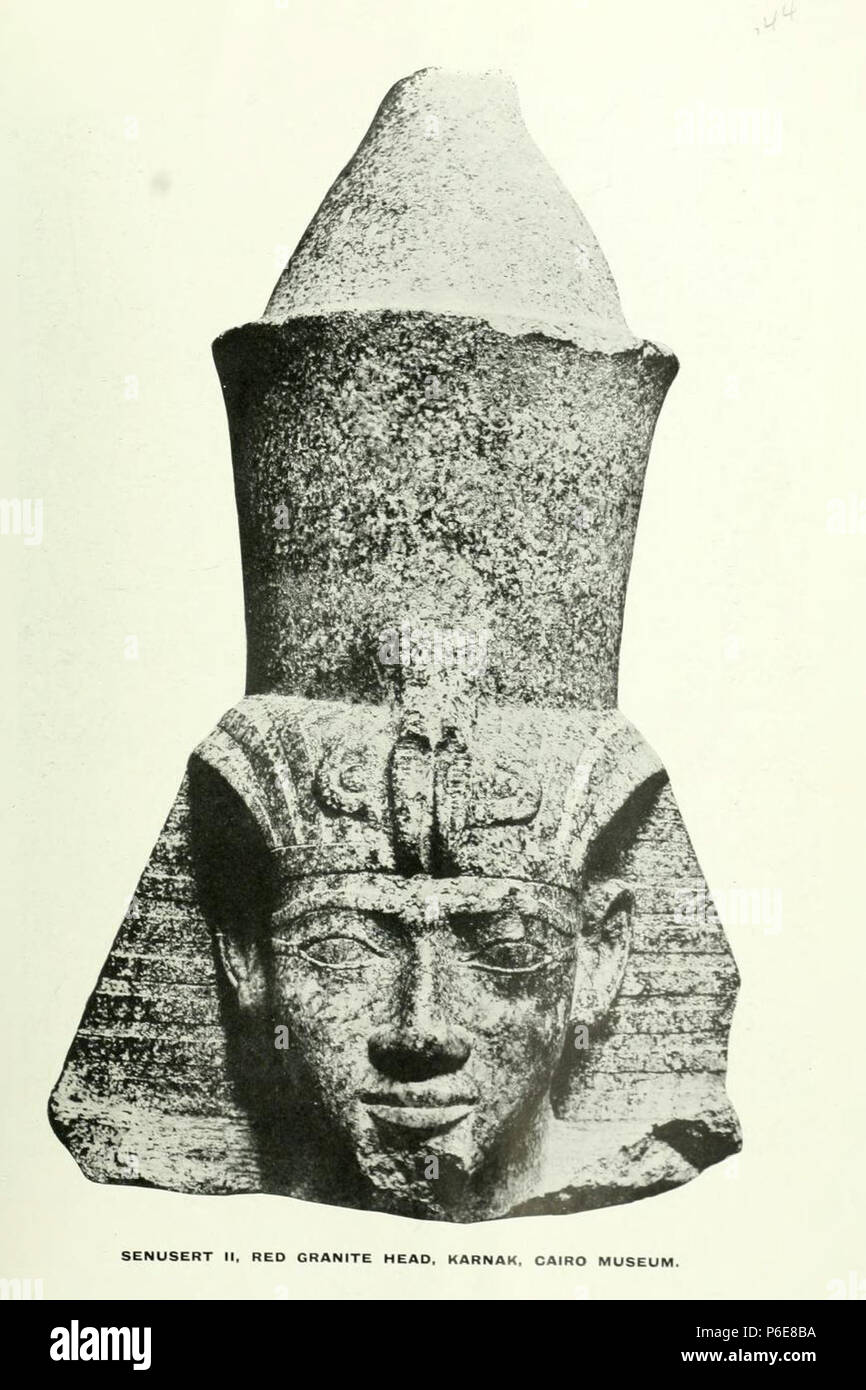 English: Head from a statue of pharaoh Senusret II. Red Granite, from Karnak, 12th dynasty, Middle Kingdom, now at the Cairo Museum. 12 May 2014, 12:34:39 75 Statue Senusret II Petrie Stock Photohttps://www.alamy.com/image-license-details/?v=1https://www.alamy.com/english-head-from-a-statue-of-pharaoh-senusret-ii-red-granite-from-karnak-12th-dynasty-middle-kingdom-now-at-the-cairo-museum-12-may-2014-123439-75-statue-senusret-ii-petrie-image210526270.html
English: Head from a statue of pharaoh Senusret II. Red Granite, from Karnak, 12th dynasty, Middle Kingdom, now at the Cairo Museum. 12 May 2014, 12:34:39 75 Statue Senusret II Petrie Stock Photohttps://www.alamy.com/image-license-details/?v=1https://www.alamy.com/english-head-from-a-statue-of-pharaoh-senusret-ii-red-granite-from-karnak-12th-dynasty-middle-kingdom-now-at-the-cairo-museum-12-may-2014-123439-75-statue-senusret-ii-petrie-image210526270.htmlRMP6E8BA–English: Head from a statue of pharaoh Senusret II. Red Granite, from Karnak, 12th dynasty, Middle Kingdom, now at the Cairo Museum. 12 May 2014, 12:34:39 75 Statue Senusret II Petrie
 Hieroglyph of Falcon of Horus from Karnak Temple Luxor, Egypt Stock Photohttps://www.alamy.com/image-license-details/?v=1https://www.alamy.com/stock-photo-hieroglyph-of-falcon-of-horus-from-karnak-temple-luxor-egypt-79498557.html
Hieroglyph of Falcon of Horus from Karnak Temple Luxor, Egypt Stock Photohttps://www.alamy.com/image-license-details/?v=1https://www.alamy.com/stock-photo-hieroglyph-of-falcon-of-horus-from-karnak-temple-luxor-egypt-79498557.htmlRFEH9D65–Hieroglyph of Falcon of Horus from Karnak Temple Luxor, Egypt
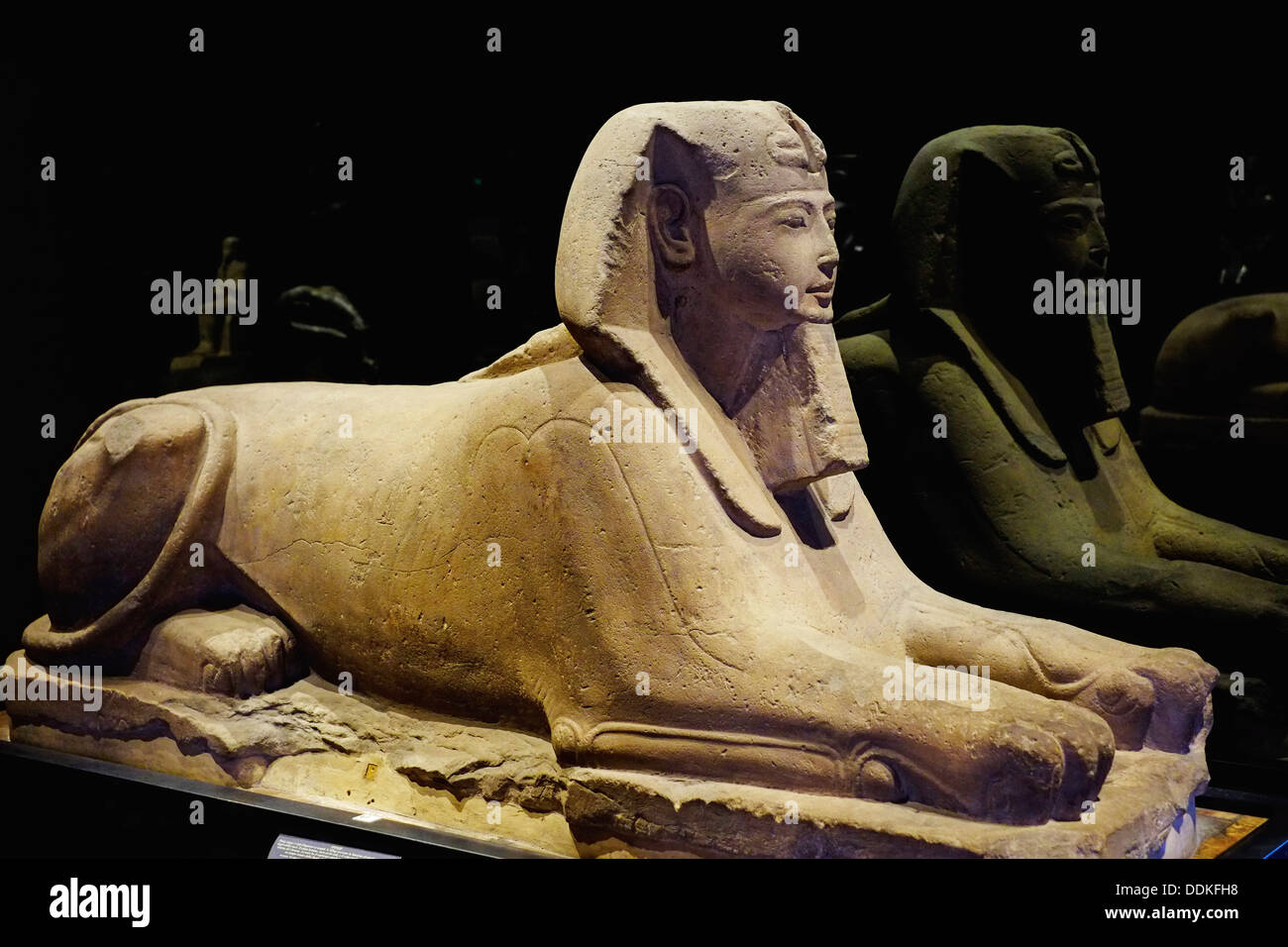 Italy, Piedmont, Turin, Egyptian museum, Sphinx statue from Karnak Stock Photohttps://www.alamy.com/image-license-details/?v=1https://www.alamy.com/italy-piedmont-turin-egyptian-museum-sphinx-statue-from-karnak-image60050964.html
Italy, Piedmont, Turin, Egyptian museum, Sphinx statue from Karnak Stock Photohttps://www.alamy.com/image-license-details/?v=1https://www.alamy.com/italy-piedmont-turin-egyptian-museum-sphinx-statue-from-karnak-image60050964.htmlRMDDKFH8–Italy, Piedmont, Turin, Egyptian museum, Sphinx statue from Karnak
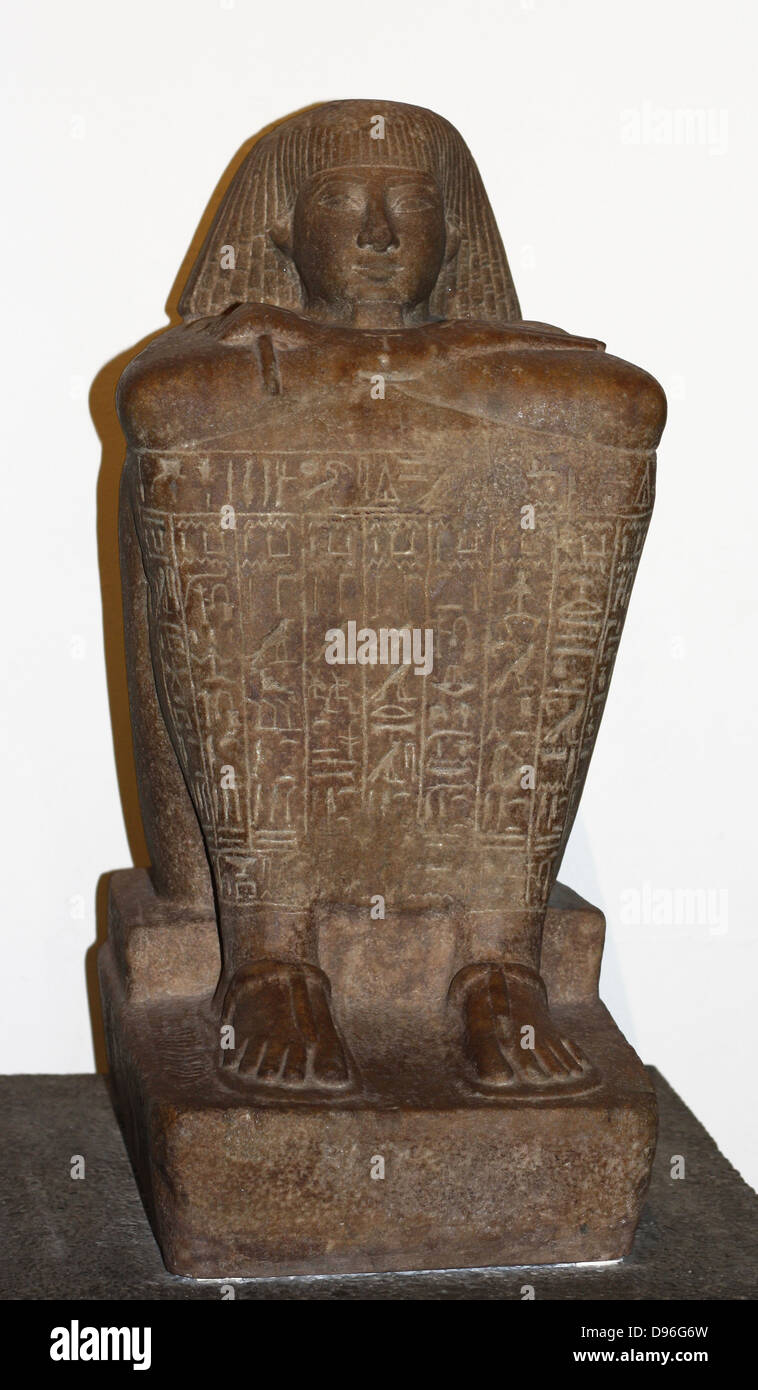 Egyptian block statue of Teti. 18th Dynasty (approx. 1450 BC), probably from Karnak. Teti shown seated on a matt with his feet and arms protruding from a leopard skin coat. Stock Photohttps://www.alamy.com/image-license-details/?v=1https://www.alamy.com/stock-photo-egyptian-block-statue-of-teti-18th-dynasty-approx-1450-bc-probably-57307457.html
Egyptian block statue of Teti. 18th Dynasty (approx. 1450 BC), probably from Karnak. Teti shown seated on a matt with his feet and arms protruding from a leopard skin coat. Stock Photohttps://www.alamy.com/image-license-details/?v=1https://www.alamy.com/stock-photo-egyptian-block-statue-of-teti-18th-dynasty-approx-1450-bc-probably-57307457.htmlRMD96G6W–Egyptian block statue of Teti. 18th Dynasty (approx. 1450 BC), probably from Karnak. Teti shown seated on a matt with his feet and arms protruding from a leopard skin coat.
 Block from Karnak Temple Stock Photohttps://www.alamy.com/image-license-details/?v=1https://www.alamy.com/stock-photo-block-from-karnak-temple-10757942.html
Block from Karnak Temple Stock Photohttps://www.alamy.com/image-license-details/?v=1https://www.alamy.com/stock-photo-block-from-karnak-temple-10757942.htmlRMA3E49Y–Block from Karnak Temple
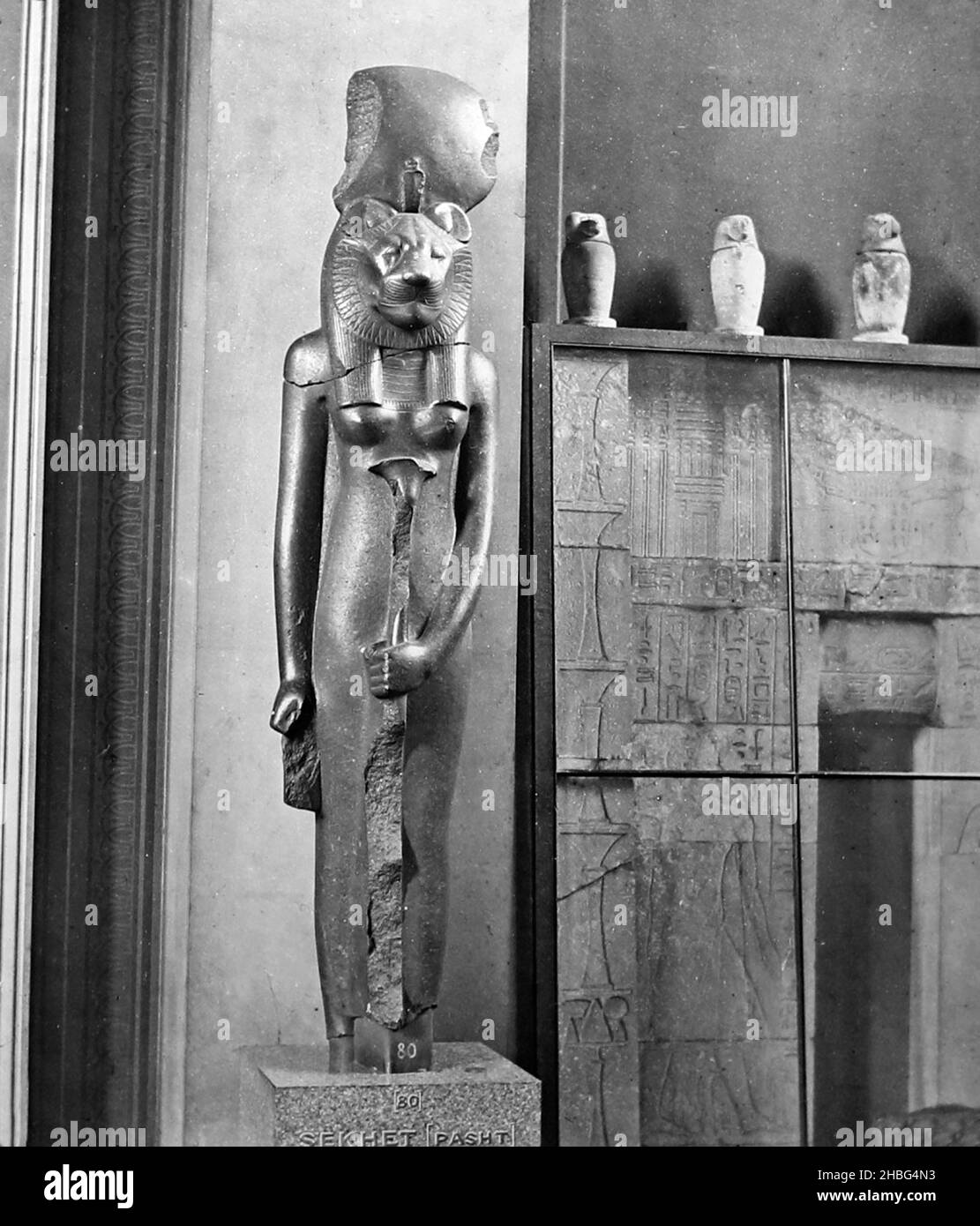 Statue from Karnak, British Museum, Victorian period Stock Photohttps://www.alamy.com/image-license-details/?v=1https://www.alamy.com/statue-from-karnak-british-museum-victorian-period-image454585743.html
Statue from Karnak, British Museum, Victorian period Stock Photohttps://www.alamy.com/image-license-details/?v=1https://www.alamy.com/statue-from-karnak-british-museum-victorian-period-image454585743.htmlRF2HBG4N3–Statue from Karnak, British Museum, Victorian period
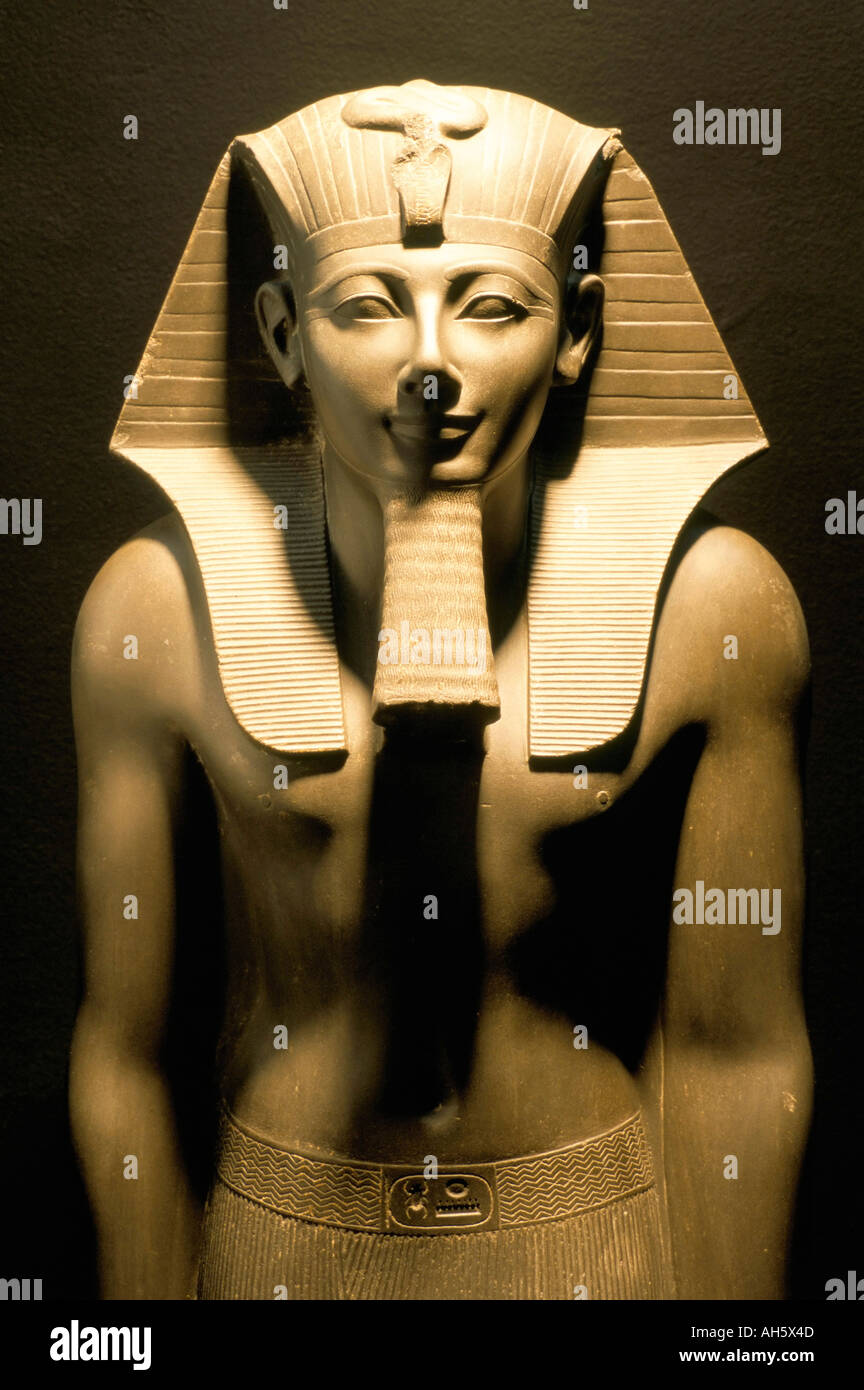 Statue of the pharaoh Tuthmosis III from Karnak Luxor Museum Luxor Egypt North Africa Africa Stock Photohttps://www.alamy.com/image-license-details/?v=1https://www.alamy.com/statue-of-the-pharaoh-tuthmosis-iii-from-karnak-luxor-museum-luxor-image4691532.html
Statue of the pharaoh Tuthmosis III from Karnak Luxor Museum Luxor Egypt North Africa Africa Stock Photohttps://www.alamy.com/image-license-details/?v=1https://www.alamy.com/statue-of-the-pharaoh-tuthmosis-iii-from-karnak-luxor-museum-luxor-image4691532.htmlRMAH5X4D–Statue of the pharaoh Tuthmosis III from Karnak Luxor Museum Luxor Egypt North Africa Africa
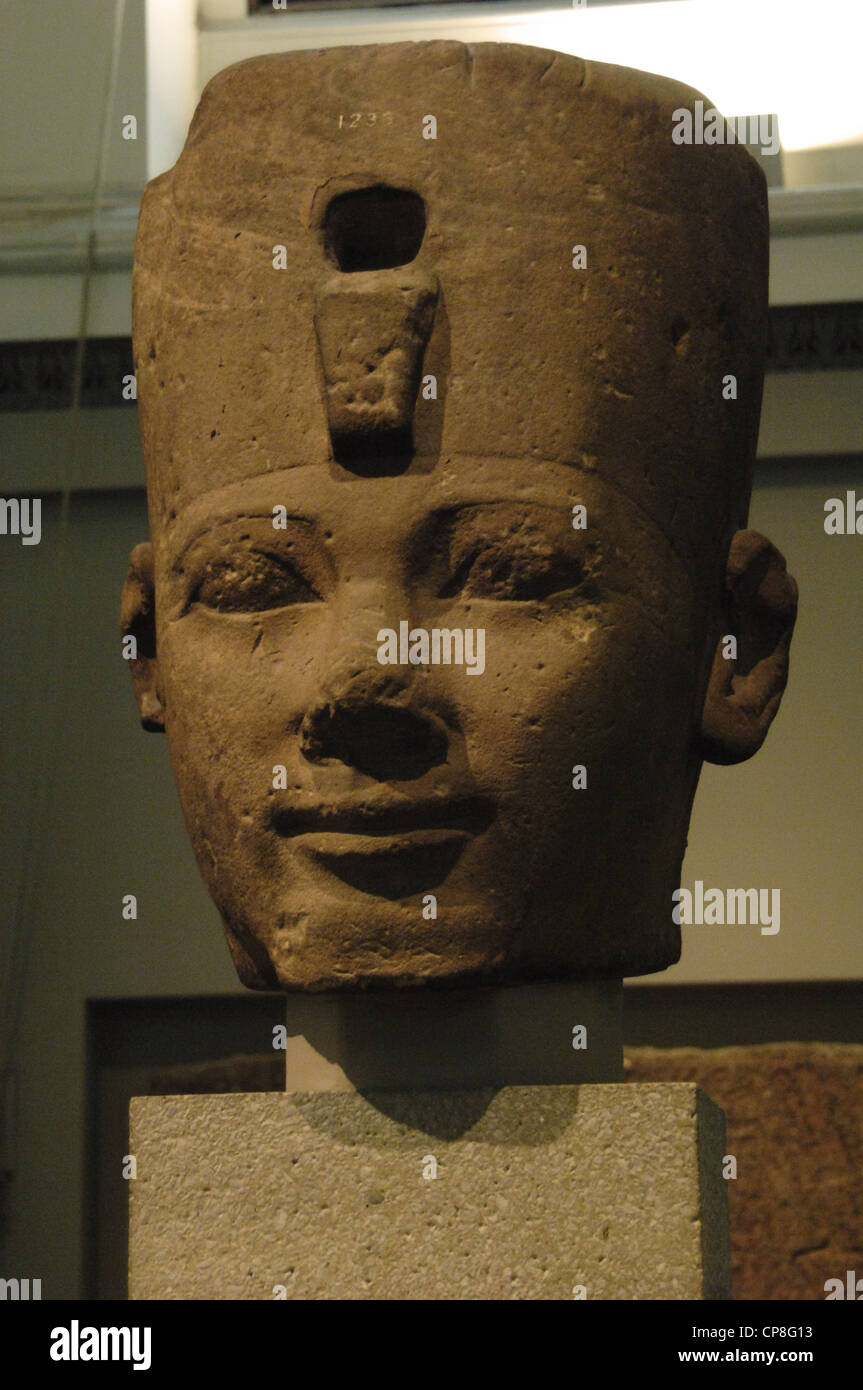 Colossal sandstone head of an Egyptian pharaoh, probably Thutmose I. Around 1500 BC. 18th Dynasty. New Kingdom. From Karnak. Stock Photohttps://www.alamy.com/image-license-details/?v=1https://www.alamy.com/stock-photo-colossal-sandstone-head-of-an-egyptian-pharaoh-probably-thutmose-i-48131359.html
Colossal sandstone head of an Egyptian pharaoh, probably Thutmose I. Around 1500 BC. 18th Dynasty. New Kingdom. From Karnak. Stock Photohttps://www.alamy.com/image-license-details/?v=1https://www.alamy.com/stock-photo-colossal-sandstone-head-of-an-egyptian-pharaoh-probably-thutmose-i-48131359.htmlRMCP8G13–Colossal sandstone head of an Egyptian pharaoh, probably Thutmose I. Around 1500 BC. 18th Dynasty. New Kingdom. From Karnak.
 Luxor museum, Head of king Akhenaten(Amenhotep IV), from Karnak temple, Luxor, Egypt, North Africa, Africa Stock Photohttps://www.alamy.com/image-license-details/?v=1https://www.alamy.com/luxor-museum-head-of-king-akhenatenamenhotep-iv-from-karnak-temple-luxor-egypt-north-africa-africa-image618280262.html
Luxor museum, Head of king Akhenaten(Amenhotep IV), from Karnak temple, Luxor, Egypt, North Africa, Africa Stock Photohttps://www.alamy.com/image-license-details/?v=1https://www.alamy.com/luxor-museum-head-of-king-akhenatenamenhotep-iv-from-karnak-temple-luxor-egypt-north-africa-africa-image618280262.htmlRM2XWW2NX–Luxor museum, Head of king Akhenaten(Amenhotep IV), from Karnak temple, Luxor, Egypt, North Africa, Africa
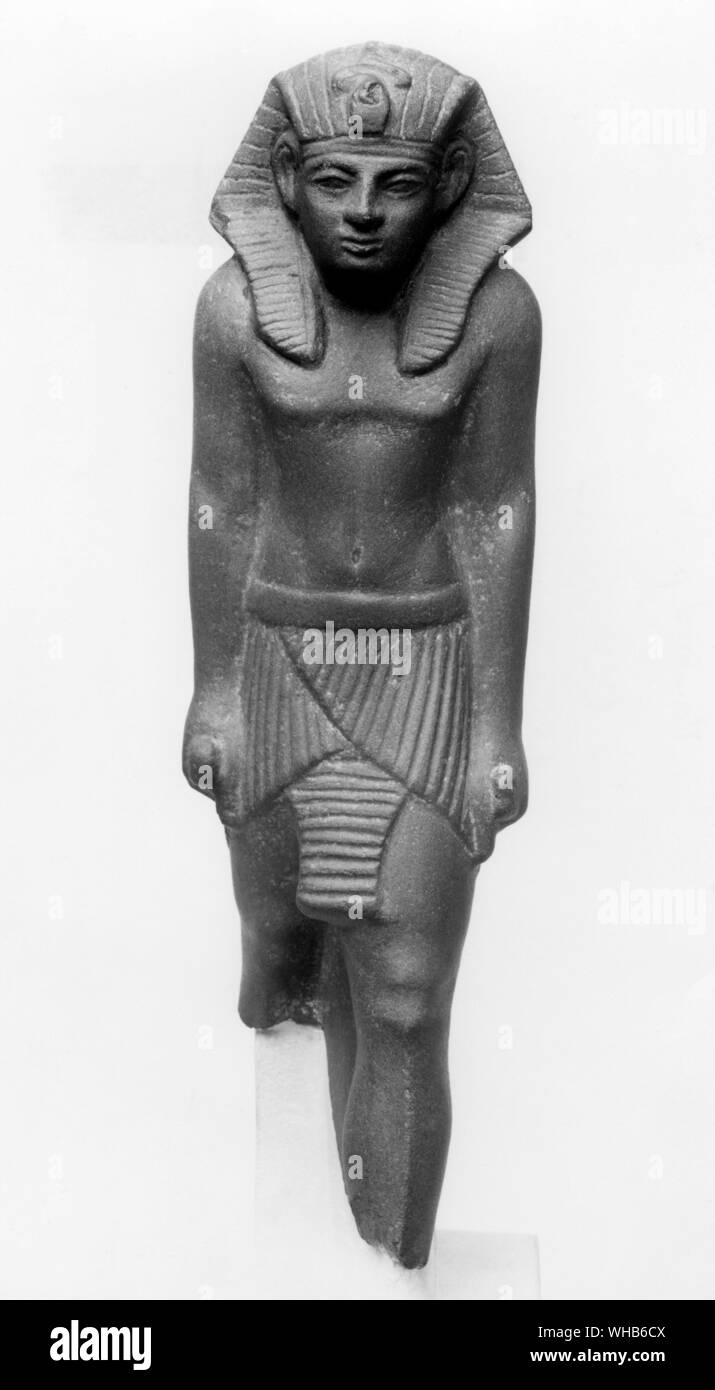 Schist statuette of Meriankhra Mentuhotpe from Karnak XIII dynasty 1700 BC - second intermediate period.. Stock Photohttps://www.alamy.com/image-license-details/?v=1https://www.alamy.com/schist-statuette-of-meriankhra-mentuhotpe-from-karnak-xiii-dynasty-1700-bc-second-intermediate-period-image268851210.html
Schist statuette of Meriankhra Mentuhotpe from Karnak XIII dynasty 1700 BC - second intermediate period.. Stock Photohttps://www.alamy.com/image-license-details/?v=1https://www.alamy.com/schist-statuette-of-meriankhra-mentuhotpe-from-karnak-xiii-dynasty-1700-bc-second-intermediate-period-image268851210.htmlRMWHB6CX–Schist statuette of Meriankhra Mentuhotpe from Karnak XIII dynasty 1700 BC - second intermediate period..
 Relief of the god Amun hugging Ramses II, made in stoneware, fragment from Karnak. Stock Photohttps://www.alamy.com/image-license-details/?v=1https://www.alamy.com/relief-of-the-god-amun-hugging-ramses-ii-made-in-stoneware-fragment-from-karnak-image212468036.html
Relief of the god Amun hugging Ramses II, made in stoneware, fragment from Karnak. Stock Photohttps://www.alamy.com/image-license-details/?v=1https://www.alamy.com/relief-of-the-god-amun-hugging-ramses-ii-made-in-stoneware-fragment-from-karnak-image212468036.htmlRMP9JN44–Relief of the god Amun hugging Ramses II, made in stoneware, fragment from Karnak.
 Cairo, Egyptian Museum, relief from Karnak temple : King Amenhotep II presents ennemies to god Amun, and kills some of them. Stock Photohttps://www.alamy.com/image-license-details/?v=1https://www.alamy.com/cairo-egyptian-museum-relief-from-karnak-temple-king-amenhotep-ii-presents-ennemies-to-god-amun-and-kills-some-of-them-image425037685.html
Cairo, Egyptian Museum, relief from Karnak temple : King Amenhotep II presents ennemies to god Amun, and kills some of them. Stock Photohttps://www.alamy.com/image-license-details/?v=1https://www.alamy.com/cairo-egyptian-museum-relief-from-karnak-temple-king-amenhotep-ii-presents-ennemies-to-god-amun-and-kills-some-of-them-image425037685.htmlRM2FKE3W9–Cairo, Egyptian Museum, relief from Karnak temple : King Amenhotep II presents ennemies to god Amun, and kills some of them.
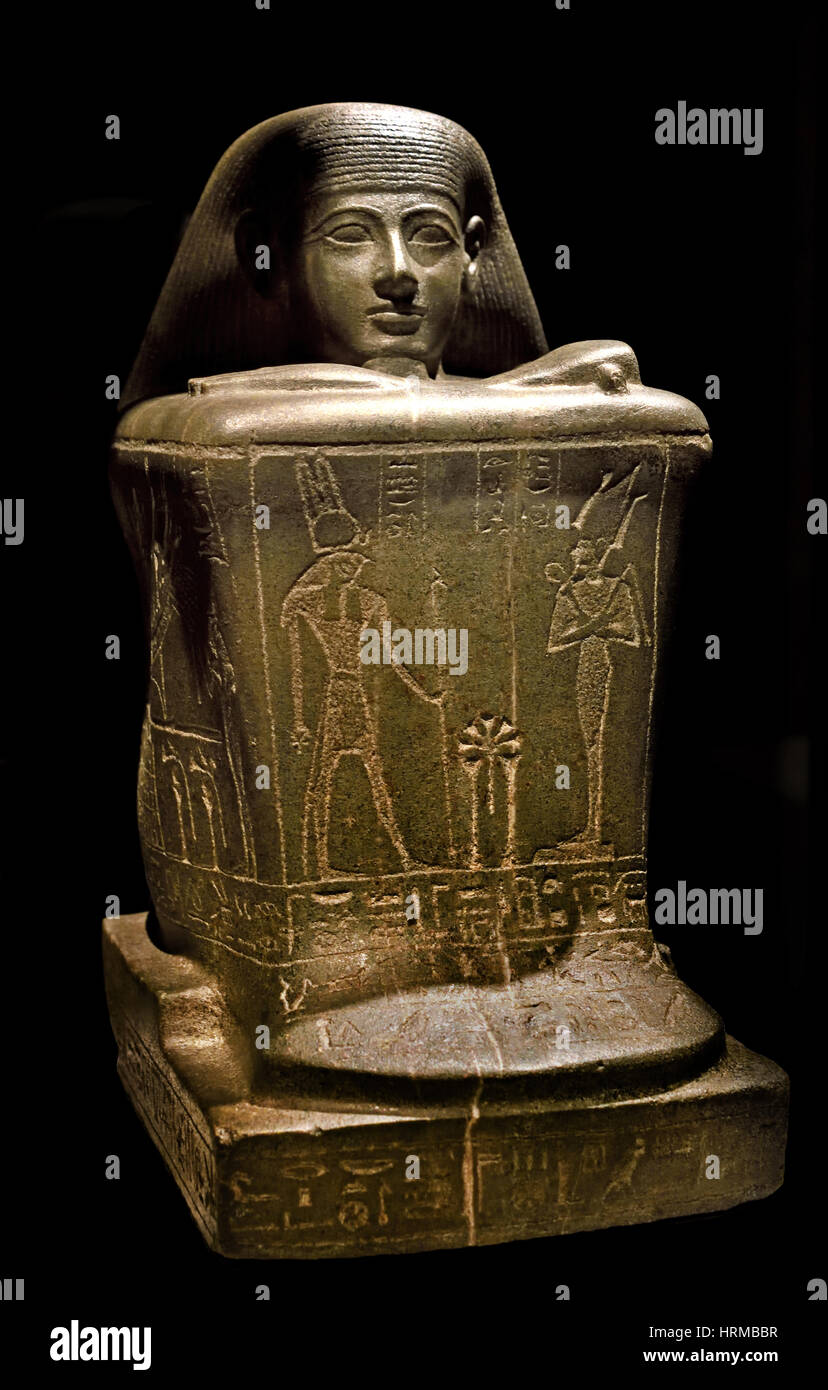 The cube figure of Amun priest Hor comes from Karnak and was created around 775 BC (23rd dynasty). (block statue of Amun priest Hor) pharaoh with the crown of Upper and Lower Egypt is depicted, as well as the phantom-headed god Horus, who revenged the murder of his father Osiris and became a heir to the throne. Stock Photohttps://www.alamy.com/image-license-details/?v=1https://www.alamy.com/stock-photo-the-cube-figure-of-amun-priest-hor-comes-from-karnak-and-was-created-135057659.html
The cube figure of Amun priest Hor comes from Karnak and was created around 775 BC (23rd dynasty). (block statue of Amun priest Hor) pharaoh with the crown of Upper and Lower Egypt is depicted, as well as the phantom-headed god Horus, who revenged the murder of his father Osiris and became a heir to the throne. Stock Photohttps://www.alamy.com/image-license-details/?v=1https://www.alamy.com/stock-photo-the-cube-figure-of-amun-priest-hor-comes-from-karnak-and-was-created-135057659.htmlRMHRMBBR–The cube figure of Amun priest Hor comes from Karnak and was created around 775 BC (23rd dynasty). (block statue of Amun priest Hor) pharaoh with the crown of Upper and Lower Egypt is depicted, as well as the phantom-headed god Horus, who revenged the murder of his father Osiris and became a heir to the throne.
 EB1911 Capital Fig. 2 Papyrus Capital from Karnak Stock Photohttps://www.alamy.com/image-license-details/?v=1https://www.alamy.com/eb1911-capital-fig-2-papyrus-capital-from-karnak-image159197586.html
EB1911 Capital Fig. 2 Papyrus Capital from Karnak Stock Photohttps://www.alamy.com/image-license-details/?v=1https://www.alamy.com/eb1911-capital-fig-2-papyrus-capital-from-karnak-image159197586.htmlRMK70242–EB1911 Capital Fig. 2 Papyrus Capital from Karnak
 Egyptian hieroglyphics from Karnak Temple. Antique Thebes. Luxor, Egypt Stock Photohttps://www.alamy.com/image-license-details/?v=1https://www.alamy.com/egyptian-hieroglyphics-from-karnak-temple-antique-thebes-luxor-egypt-image460622021.html
Egyptian hieroglyphics from Karnak Temple. Antique Thebes. Luxor, Egypt Stock Photohttps://www.alamy.com/image-license-details/?v=1https://www.alamy.com/egyptian-hieroglyphics-from-karnak-temple-antique-thebes-luxor-egypt-image460622021.htmlRM2HNB42D–Egyptian hieroglyphics from Karnak Temple. Antique Thebes. Luxor, Egypt
 Tutankhamun Avenue of Sphinxes from Karnak 10th pylon to Mut Temple, Luxor Stock Photohttps://www.alamy.com/image-license-details/?v=1https://www.alamy.com/tutankhamun-avenue-of-sphinxes-from-karnak-10th-pylon-to-mut-temple-luxor-image465646570.html
Tutankhamun Avenue of Sphinxes from Karnak 10th pylon to Mut Temple, Luxor Stock Photohttps://www.alamy.com/image-license-details/?v=1https://www.alamy.com/tutankhamun-avenue-of-sphinxes-from-karnak-10th-pylon-to-mut-temple-luxor-image465646570.htmlRM2J1G0XJ–Tutankhamun Avenue of Sphinxes from Karnak 10th pylon to Mut Temple, Luxor
![Capital from Karnak, Egypt, (1928). 'Spreading papyrus cluster capital...From the middle aisle of the great columned hall of the great Temple of Amun at Karnak; bears the cartouche of Rameses II...1292-1225 B.C.' After Prisse d'Avennes. Plate IV, fig 8, from "An Encyclopaedia of Colour Decoration from the Earliest Times to the Middle of the XIXth Century" with explanatory text by Helmuth Bossert. [Ernst Wasmuth Ltd., Berlin, 1928] Stock Photo Capital from Karnak, Egypt, (1928). 'Spreading papyrus cluster capital...From the middle aisle of the great columned hall of the great Temple of Amun at Karnak; bears the cartouche of Rameses II...1292-1225 B.C.' After Prisse d'Avennes. Plate IV, fig 8, from "An Encyclopaedia of Colour Decoration from the Earliest Times to the Middle of the XIXth Century" with explanatory text by Helmuth Bossert. [Ernst Wasmuth Ltd., Berlin, 1928] Stock Photo](https://c8.alamy.com/comp/2A4207J/capital-from-karnak-egypt-1928-spreading-papyrus-cluster-capitalfrom-the-middle-aisle-of-the-great-columned-hall-of-the-great-temple-of-amun-at-karnak-bears-the-cartouche-of-rameses-ii1292-1225-bc-after-prisse-davennes-plate-iv-fig-8-from-quotan-encyclopaedia-of-colour-decoration-from-the-earliest-times-to-the-middle-of-the-xixth-centuryquot-with-explanatory-text-by-helmuth-bossert-ernst-wasmuth-ltd-berlin-1928-2A4207J.jpg) Capital from Karnak, Egypt, (1928). 'Spreading papyrus cluster capital...From the middle aisle of the great columned hall of the great Temple of Amun at Karnak; bears the cartouche of Rameses II...1292-1225 B.C.' After Prisse d'Avennes. Plate IV, fig 8, from "An Encyclopaedia of Colour Decoration from the Earliest Times to the Middle of the XIXth Century" with explanatory text by Helmuth Bossert. [Ernst Wasmuth Ltd., Berlin, 1928] Stock Photohttps://www.alamy.com/image-license-details/?v=1https://www.alamy.com/capital-from-karnak-egypt-1928-spreading-papyrus-cluster-capitalfrom-the-middle-aisle-of-the-great-columned-hall-of-the-great-temple-of-amun-at-karnak-bears-the-cartouche-of-rameses-ii1292-1225-bc-after-prisse-davennes-plate-iv-fig-8-from-quotan-encyclopaedia-of-colour-decoration-from-the-earliest-times-to-the-middle-of-the-xixth-centuryquot-with-explanatory-text-by-helmuth-bossert-ernst-wasmuth-ltd-berlin-1928-image329499734.html
Capital from Karnak, Egypt, (1928). 'Spreading papyrus cluster capital...From the middle aisle of the great columned hall of the great Temple of Amun at Karnak; bears the cartouche of Rameses II...1292-1225 B.C.' After Prisse d'Avennes. Plate IV, fig 8, from "An Encyclopaedia of Colour Decoration from the Earliest Times to the Middle of the XIXth Century" with explanatory text by Helmuth Bossert. [Ernst Wasmuth Ltd., Berlin, 1928] Stock Photohttps://www.alamy.com/image-license-details/?v=1https://www.alamy.com/capital-from-karnak-egypt-1928-spreading-papyrus-cluster-capitalfrom-the-middle-aisle-of-the-great-columned-hall-of-the-great-temple-of-amun-at-karnak-bears-the-cartouche-of-rameses-ii1292-1225-bc-after-prisse-davennes-plate-iv-fig-8-from-quotan-encyclopaedia-of-colour-decoration-from-the-earliest-times-to-the-middle-of-the-xixth-centuryquot-with-explanatory-text-by-helmuth-bossert-ernst-wasmuth-ltd-berlin-1928-image329499734.htmlRM2A4207J–Capital from Karnak, Egypt, (1928). 'Spreading papyrus cluster capital...From the middle aisle of the great columned hall of the great Temple of Amun at Karnak; bears the cartouche of Rameses II...1292-1225 B.C.' After Prisse d'Avennes. Plate IV, fig 8, from "An Encyclopaedia of Colour Decoration from the Earliest Times to the Middle of the XIXth Century" with explanatory text by Helmuth Bossert. [Ernst Wasmuth Ltd., Berlin, 1928]
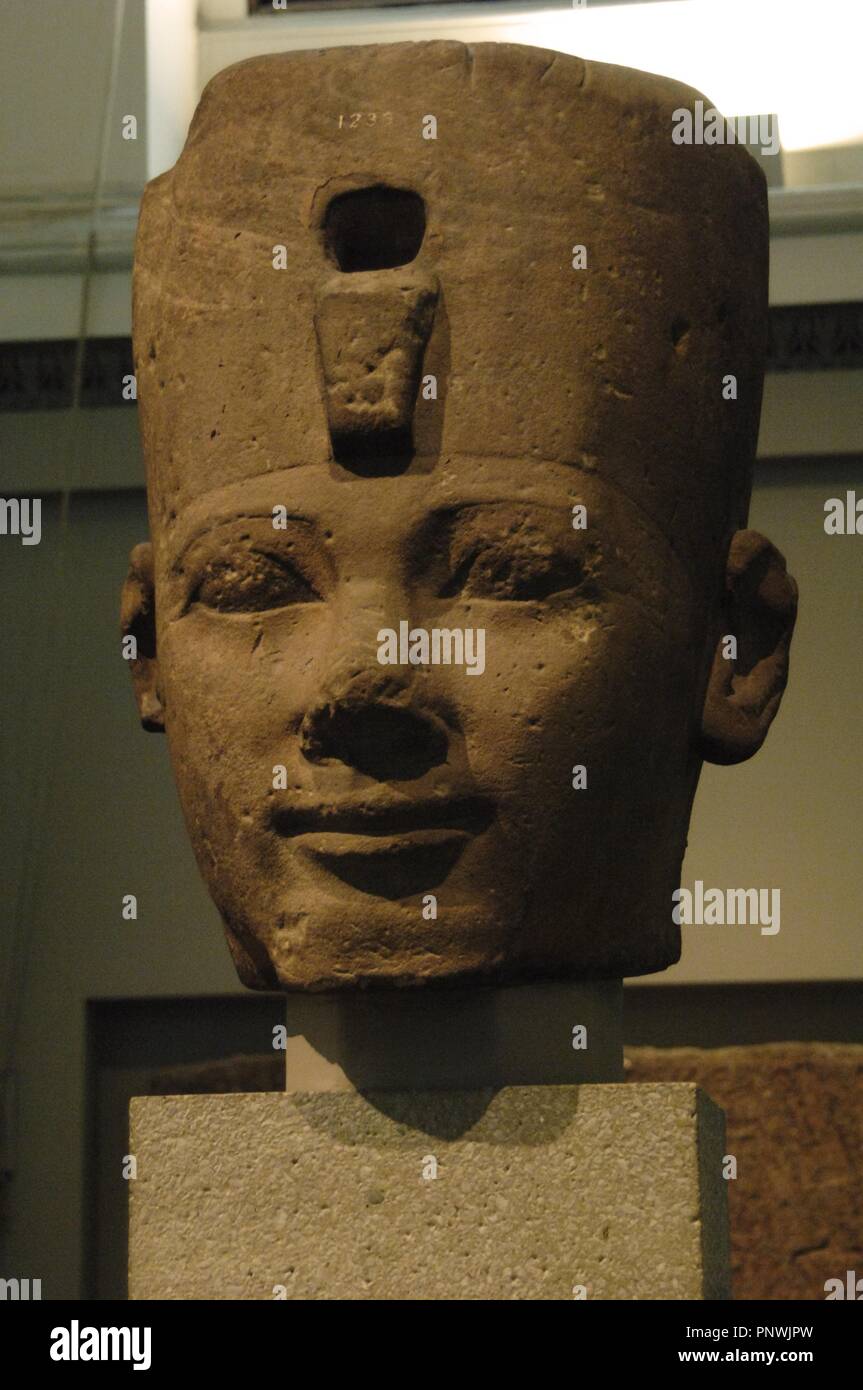 Colossal sandstone head of an egyptian pharaoh, probably Thutmose I. Around 1500 BC. 18th Dynasty. New Kingdom. From Karnak,Thebes. British Museum. London. United Kingdom. Stock Photohttps://www.alamy.com/image-license-details/?v=1https://www.alamy.com/colossal-sandstone-head-of-an-egyptian-pharaoh-probably-thutmose-i-around-1500-bc-18th-dynasty-new-kingdom-from-karnakthebes-british-museum-london-united-kingdom-image219995745.html
Colossal sandstone head of an egyptian pharaoh, probably Thutmose I. Around 1500 BC. 18th Dynasty. New Kingdom. From Karnak,Thebes. British Museum. London. United Kingdom. Stock Photohttps://www.alamy.com/image-license-details/?v=1https://www.alamy.com/colossal-sandstone-head-of-an-egyptian-pharaoh-probably-thutmose-i-around-1500-bc-18th-dynasty-new-kingdom-from-karnakthebes-british-museum-london-united-kingdom-image219995745.htmlRMPNWJPW–Colossal sandstone head of an egyptian pharaoh, probably Thutmose I. Around 1500 BC. 18th Dynasty. New Kingdom. From Karnak,Thebes. British Museum. London. United Kingdom.
 Head of a statue of Amenhotep III from Karnak. British Museum, Bloomsbury, London, England, UK. Stock Photohttps://www.alamy.com/image-license-details/?v=1https://www.alamy.com/head-of-a-statue-of-amenhotep-iii-from-karnak-british-museum-bloomsbury-london-england-uk-image217318395.html
Head of a statue of Amenhotep III from Karnak. British Museum, Bloomsbury, London, England, UK. Stock Photohttps://www.alamy.com/image-license-details/?v=1https://www.alamy.com/head-of-a-statue-of-amenhotep-iii-from-karnak-british-museum-bloomsbury-london-england-uk-image217318395.htmlRMPHFKR7–Head of a statue of Amenhotep III from Karnak. British Museum, Bloomsbury, London, England, UK.
 Louqsor, Egypt, Africa Village on the Karnak road, Animal, Habitat, Architecture, Nature, Environment, Human beings, Real animal, Palm tree, Palm grove, Road, Rural architecture, Dwelling, Vegetation, botany, Man, Egypt, Louksor, Road from Karnak, Louxor, 11/01/1914 - 11/01/1914, Léon, Auguste, photographer, 1914 - Egypte - Auguste Léon - (January-February), Autochrome, photo, Glass, Autochrome, photo, Positive, Horizontal, Size 9 x 12 cm Stock Photohttps://www.alamy.com/image-license-details/?v=1https://www.alamy.com/louqsor-egypt-africa-village-on-the-karnak-road-animal-habitat-architecture-nature-environment-human-beings-real-animal-palm-tree-palm-grove-road-rural-architecture-dwelling-vegetation-botany-man-egypt-louksor-road-from-karnak-louxor-11011914-11011914-lon-auguste-photographer-1914-egypte-auguste-lon-january-february-autochrome-photo-glass-autochrome-photo-positive-horizontal-size-9-x-12-cm-image576142490.html
Louqsor, Egypt, Africa Village on the Karnak road, Animal, Habitat, Architecture, Nature, Environment, Human beings, Real animal, Palm tree, Palm grove, Road, Rural architecture, Dwelling, Vegetation, botany, Man, Egypt, Louksor, Road from Karnak, Louxor, 11/01/1914 - 11/01/1914, Léon, Auguste, photographer, 1914 - Egypte - Auguste Léon - (January-February), Autochrome, photo, Glass, Autochrome, photo, Positive, Horizontal, Size 9 x 12 cm Stock Photohttps://www.alamy.com/image-license-details/?v=1https://www.alamy.com/louqsor-egypt-africa-village-on-the-karnak-road-animal-habitat-architecture-nature-environment-human-beings-real-animal-palm-tree-palm-grove-road-rural-architecture-dwelling-vegetation-botany-man-egypt-louksor-road-from-karnak-louxor-11011914-11011914-lon-auguste-photographer-1914-egypte-auguste-lon-january-february-autochrome-photo-glass-autochrome-photo-positive-horizontal-size-9-x-12-cm-image576142490.htmlRM2TD9FHE–Louqsor, Egypt, Africa Village on the Karnak road, Animal, Habitat, Architecture, Nature, Environment, Human beings, Real animal, Palm tree, Palm grove, Road, Rural architecture, Dwelling, Vegetation, botany, Man, Egypt, Louksor, Road from Karnak, Louxor, 11/01/1914 - 11/01/1914, Léon, Auguste, photographer, 1914 - Egypte - Auguste Léon - (January-February), Autochrome, photo, Glass, Autochrome, photo, Positive, Horizontal, Size 9 x 12 cm
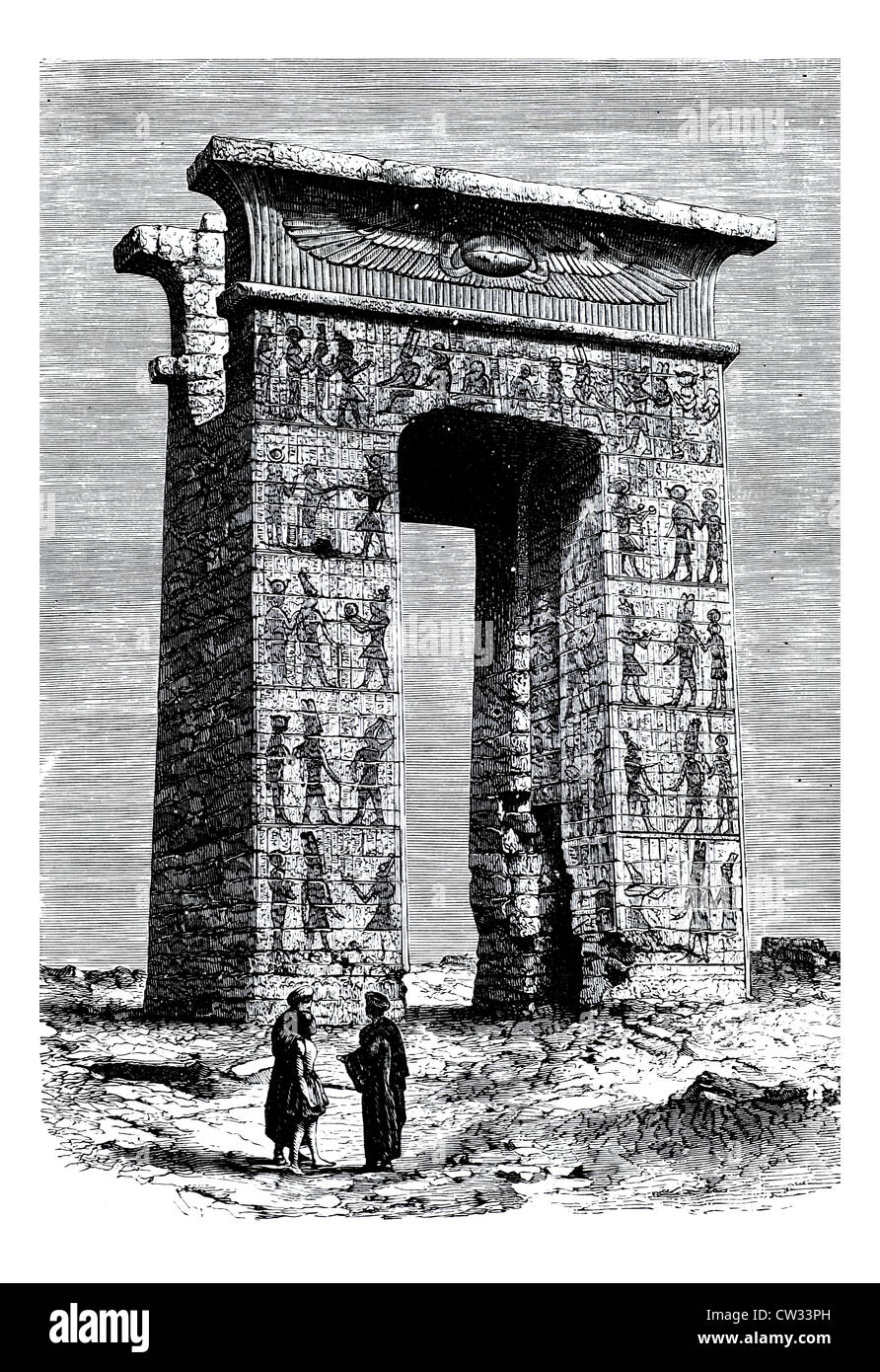 Temple ruins of Karnak Stock Photohttps://www.alamy.com/image-license-details/?v=1https://www.alamy.com/stock-photo-temple-ruins-of-karnak-49855977.html
Temple ruins of Karnak Stock Photohttps://www.alamy.com/image-license-details/?v=1https://www.alamy.com/stock-photo-temple-ruins-of-karnak-49855977.htmlRMCW33PH–Temple ruins of Karnak
 Italy, Piedmont, Turin, Egyptian museum, Sphinx statue from Karnak Stock Photohttps://www.alamy.com/image-license-details/?v=1https://www.alamy.com/italy-piedmont-turin-egyptian-museum-sphinx-statue-from-karnak-image60050908.html
Italy, Piedmont, Turin, Egyptian museum, Sphinx statue from Karnak Stock Photohttps://www.alamy.com/image-license-details/?v=1https://www.alamy.com/italy-piedmont-turin-egyptian-museum-sphinx-statue-from-karnak-image60050908.htmlRMDDKFF8–Italy, Piedmont, Turin, Egyptian museum, Sphinx statue from Karnak
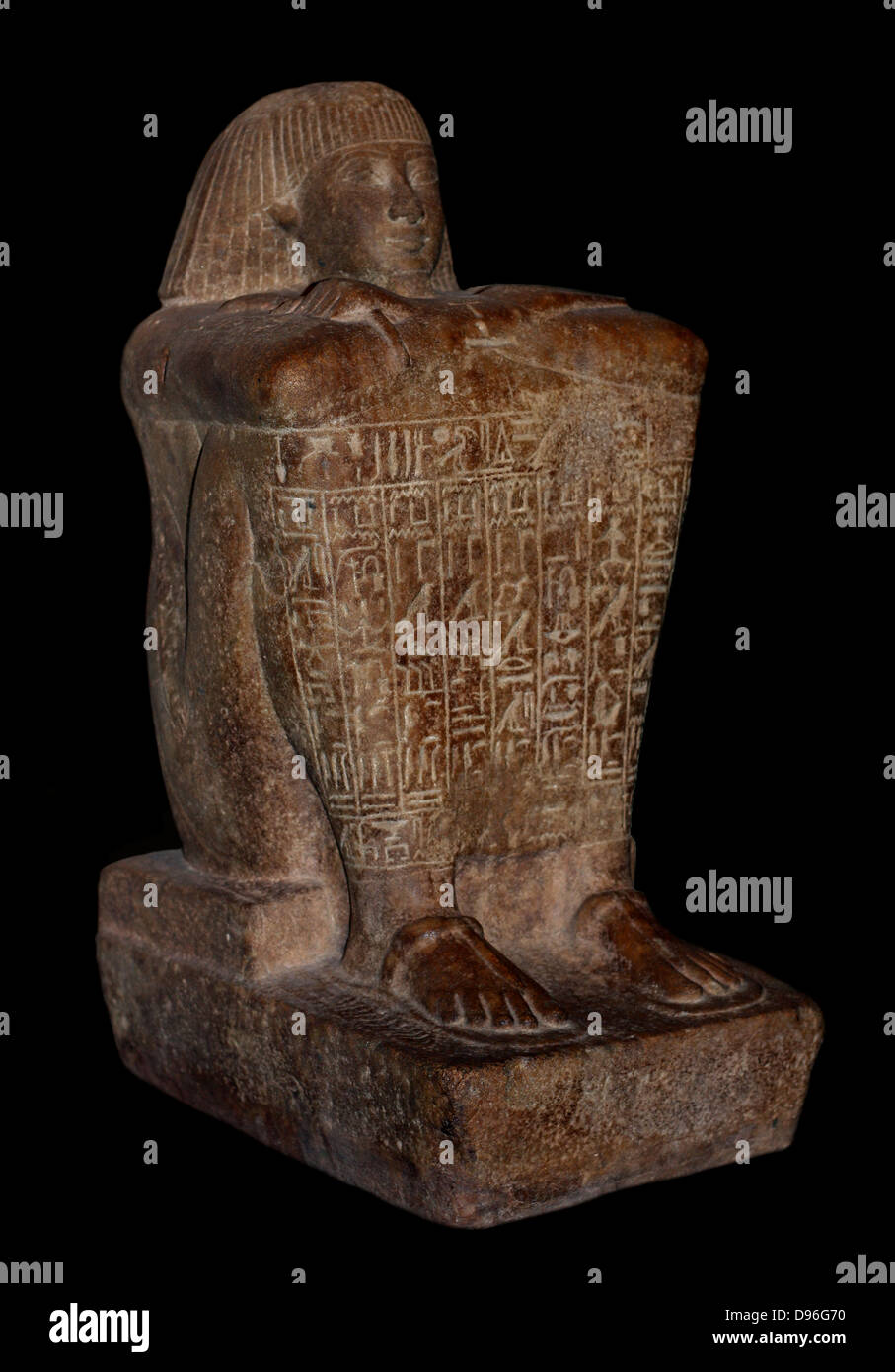 Egyptian block statue of Teti. 18th Dynasty (approx. 1450 BC), probably from Karnak. Teti shown seated on a matt with his feet and arms protruding from a leopard skin coat. Stock Photohttps://www.alamy.com/image-license-details/?v=1https://www.alamy.com/stock-photo-egyptian-block-statue-of-teti-18th-dynasty-approx-1450-bc-probably-57307460.html
Egyptian block statue of Teti. 18th Dynasty (approx. 1450 BC), probably from Karnak. Teti shown seated on a matt with his feet and arms protruding from a leopard skin coat. Stock Photohttps://www.alamy.com/image-license-details/?v=1https://www.alamy.com/stock-photo-egyptian-block-statue-of-teti-18th-dynasty-approx-1450-bc-probably-57307460.htmlRMD96G70–Egyptian block statue of Teti. 18th Dynasty (approx. 1450 BC), probably from Karnak. Teti shown seated on a matt with his feet and arms protruding from a leopard skin coat.
 Head of Sesostris III in red granite from Karnak, Luxor Museum, Luxor, Egypt Stock Photohttps://www.alamy.com/image-license-details/?v=1https://www.alamy.com/stock-photo-head-of-sesostris-iii-in-red-granite-from-karnak-luxor-museum-luxor-11361263.html
Head of Sesostris III in red granite from Karnak, Luxor Museum, Luxor, Egypt Stock Photohttps://www.alamy.com/image-license-details/?v=1https://www.alamy.com/stock-photo-head-of-sesostris-iii-in-red-granite-from-karnak-luxor-museum-luxor-11361263.htmlRMA5P7XT–Head of Sesostris III in red granite from Karnak, Luxor Museum, Luxor, Egypt
 Statue from Karnak, British Museum, Victorian period Stock Photohttps://www.alamy.com/image-license-details/?v=1https://www.alamy.com/statue-from-karnak-british-museum-victorian-period-image454585741.html
Statue from Karnak, British Museum, Victorian period Stock Photohttps://www.alamy.com/image-license-details/?v=1https://www.alamy.com/statue-from-karnak-british-museum-victorian-period-image454585741.htmlRF2HBG4N1–Statue from Karnak, British Museum, Victorian period
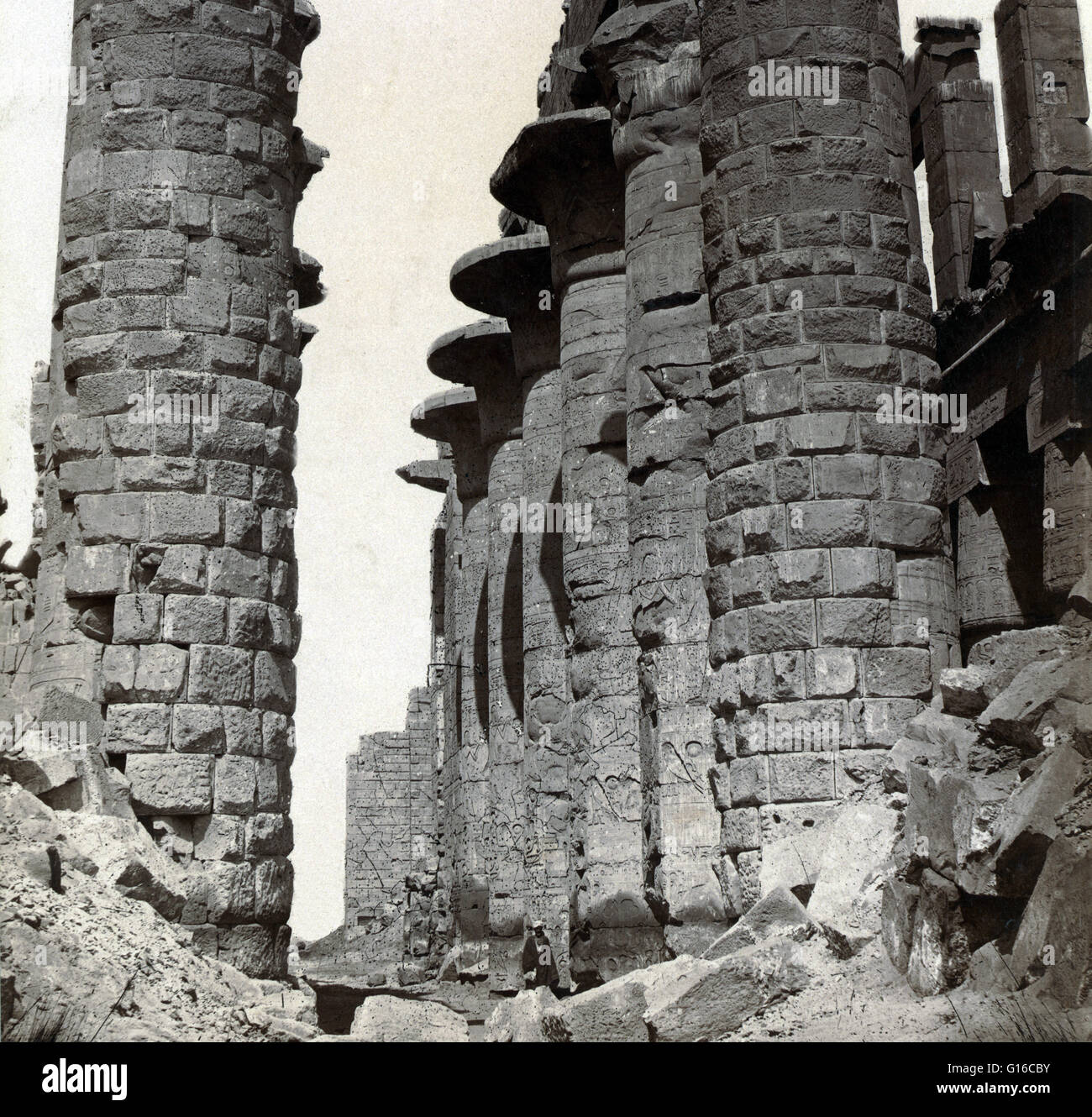 Colonnade constructed in hypostyle from the south, Thebes, photographed by Maison Bonfils, circa 1867-1885. The Great Hypostyle Hall of Karnak, located within the Karnak temple complex, in the Precinct of Amon-Re, is one of the most visited monuments of A Stock Photohttps://www.alamy.com/image-license-details/?v=1https://www.alamy.com/stock-photo-colonnade-constructed-in-hypostyle-from-the-south-thebes-photographed-104018319.html
Colonnade constructed in hypostyle from the south, Thebes, photographed by Maison Bonfils, circa 1867-1885. The Great Hypostyle Hall of Karnak, located within the Karnak temple complex, in the Precinct of Amon-Re, is one of the most visited monuments of A Stock Photohttps://www.alamy.com/image-license-details/?v=1https://www.alamy.com/stock-photo-colonnade-constructed-in-hypostyle-from-the-south-thebes-photographed-104018319.htmlRMG16CBY–Colonnade constructed in hypostyle from the south, Thebes, photographed by Maison Bonfils, circa 1867-1885. The Great Hypostyle Hall of Karnak, located within the Karnak temple complex, in the Precinct of Amon-Re, is one of the most visited monuments of A
 Luxor Museum Egypt Amun from Karnak XVIII Dynasty Ptolemaic Ruler Cult Stock Photohttps://www.alamy.com/image-license-details/?v=1https://www.alamy.com/stock-photo-luxor-museum-egypt-amun-from-karnak-xviii-dynasty-ptolemaic-ruler-10697036.html
Luxor Museum Egypt Amun from Karnak XVIII Dynasty Ptolemaic Ruler Cult Stock Photohttps://www.alamy.com/image-license-details/?v=1https://www.alamy.com/stock-photo-luxor-museum-egypt-amun-from-karnak-xviii-dynasty-ptolemaic-ruler-10697036.htmlRMA37K2N–Luxor Museum Egypt Amun from Karnak XVIII Dynasty Ptolemaic Ruler Cult
 Luxor museum, Head of king Akhenaten(Amenhotep IV), from Karnak temple, Luxor, Egypt, North Africa, Africa Stock Photohttps://www.alamy.com/image-license-details/?v=1https://www.alamy.com/luxor-museum-head-of-king-akhenatenamenhotep-iv-from-karnak-temple-luxor-egypt-north-africa-africa-image618280204.html
Luxor museum, Head of king Akhenaten(Amenhotep IV), from Karnak temple, Luxor, Egypt, North Africa, Africa Stock Photohttps://www.alamy.com/image-license-details/?v=1https://www.alamy.com/luxor-museum-head-of-king-akhenatenamenhotep-iv-from-karnak-temple-luxor-egypt-north-africa-africa-image618280204.htmlRM2XWW2KT–Luxor museum, Head of king Akhenaten(Amenhotep IV), from Karnak temple, Luxor, Egypt, North Africa, Africa
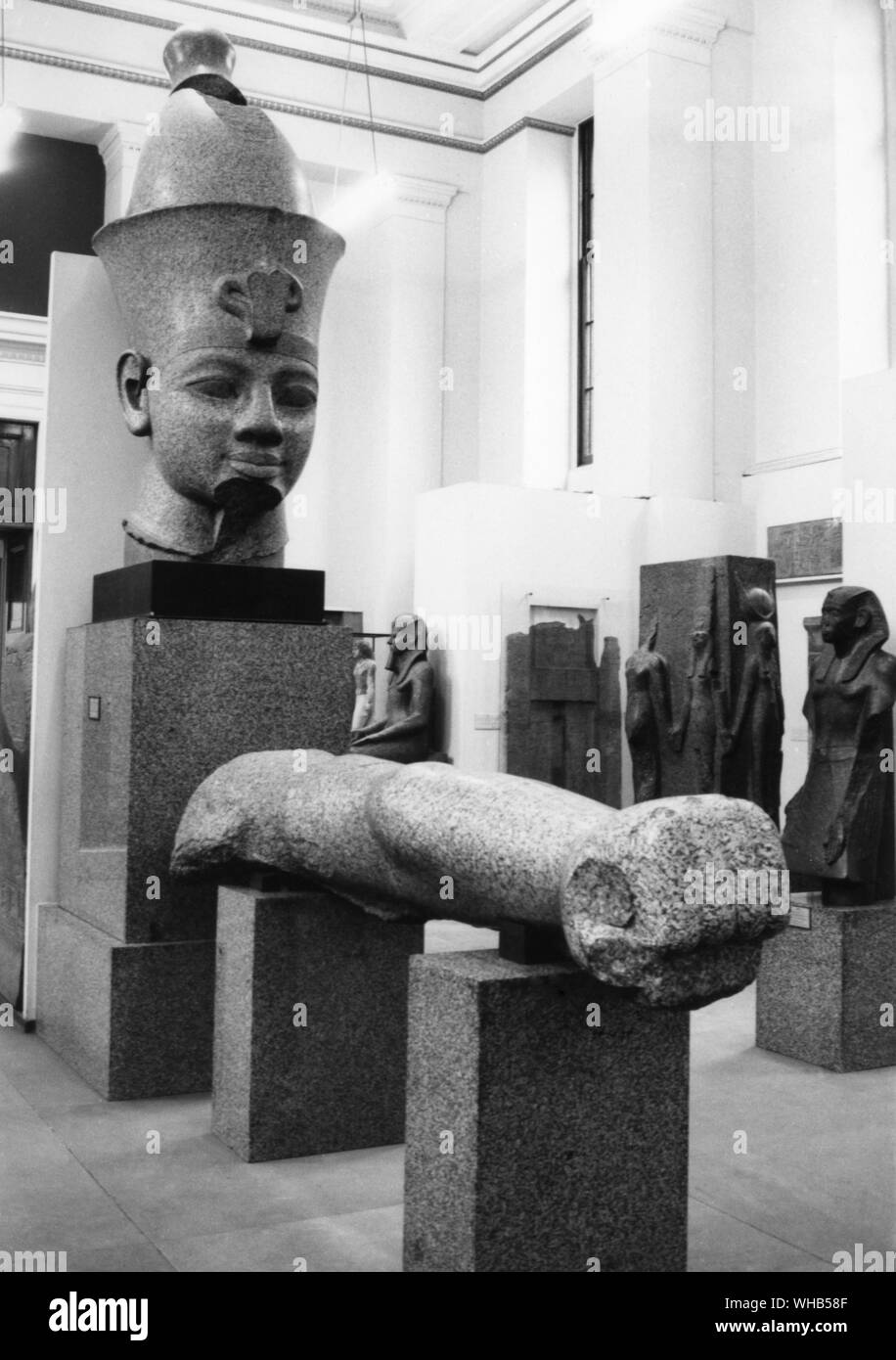 Head and arm in red granite of a colossal statue of Tuthensis III from Karnak - British Museum - Thutmose III (sometimes read as Thutmosis or Tuthmosis III and meaning Thoth is Born) was the sixth Pharaoh of the Eighteenth Dynasty. During the first 22 years of Thutmose's reign he was co-regent with his stepmother, Hatshepsut. While she is shown first on surviving monuments, both were assigned the usual royal names and insignia and neither is given any obvious seniority over the other. After her death and his subsequent gain of power over his kingdom, he created the largest empire Egypt had Stock Photohttps://www.alamy.com/image-license-details/?v=1https://www.alamy.com/head-and-arm-in-red-granite-of-a-colossal-statue-of-tuthensis-iii-from-karnak-british-museum-thutmose-iii-sometimes-read-as-thutmosis-or-tuthmosis-iii-and-meaning-thoth-is-born-was-the-sixth-pharaoh-of-the-eighteenth-dynasty-during-the-first-22-years-of-thutmoses-reign-he-was-co-regent-with-his-stepmother-hatshepsut-while-she-is-shown-first-on-surviving-monuments-both-were-assigned-the-usual-royal-names-and-insignia-and-neither-is-given-any-obvious-seniority-over-the-other-after-her-death-and-his-subsequent-gain-of-power-over-his-kingdom-he-created-the-largest-empire-egypt-had-image268850303.html
Head and arm in red granite of a colossal statue of Tuthensis III from Karnak - British Museum - Thutmose III (sometimes read as Thutmosis or Tuthmosis III and meaning Thoth is Born) was the sixth Pharaoh of the Eighteenth Dynasty. During the first 22 years of Thutmose's reign he was co-regent with his stepmother, Hatshepsut. While she is shown first on surviving monuments, both were assigned the usual royal names and insignia and neither is given any obvious seniority over the other. After her death and his subsequent gain of power over his kingdom, he created the largest empire Egypt had Stock Photohttps://www.alamy.com/image-license-details/?v=1https://www.alamy.com/head-and-arm-in-red-granite-of-a-colossal-statue-of-tuthensis-iii-from-karnak-british-museum-thutmose-iii-sometimes-read-as-thutmosis-or-tuthmosis-iii-and-meaning-thoth-is-born-was-the-sixth-pharaoh-of-the-eighteenth-dynasty-during-the-first-22-years-of-thutmoses-reign-he-was-co-regent-with-his-stepmother-hatshepsut-while-she-is-shown-first-on-surviving-monuments-both-were-assigned-the-usual-royal-names-and-insignia-and-neither-is-given-any-obvious-seniority-over-the-other-after-her-death-and-his-subsequent-gain-of-power-over-his-kingdom-he-created-the-largest-empire-egypt-had-image268850303.htmlRMWHB58F–Head and arm in red granite of a colossal statue of Tuthensis III from Karnak - British Museum - Thutmose III (sometimes read as Thutmosis or Tuthmosis III and meaning Thoth is Born) was the sixth Pharaoh of the Eighteenth Dynasty. During the first 22 years of Thutmose's reign he was co-regent with his stepmother, Hatshepsut. While she is shown first on surviving monuments, both were assigned the usual royal names and insignia and neither is given any obvious seniority over the other. After her death and his subsequent gain of power over his kingdom, he created the largest empire Egypt had
 Statue de Nebamon from Karnak on display at the Alexandria National Museum, Alexandria, Al Iskandariyah, Egypt Stock Photohttps://www.alamy.com/image-license-details/?v=1https://www.alamy.com/stock-photo-statue-de-nebamon-from-karnak-on-display-at-the-alexandria-national-29919484.html
Statue de Nebamon from Karnak on display at the Alexandria National Museum, Alexandria, Al Iskandariyah, Egypt Stock Photohttps://www.alamy.com/image-license-details/?v=1https://www.alamy.com/stock-photo-statue-de-nebamon-from-karnak-on-display-at-the-alexandria-national-29919484.htmlRMBMJXH0–Statue de Nebamon from Karnak on display at the Alexandria National Museum, Alexandria, Al Iskandariyah, Egypt
 Egypt, Alexandria, Bibliotheca Alexandrina, Archeological Museum, block statue of Khonsu, a priest of god Monthu. Granit, New Kingdom, from Karnak. Stock Photohttps://www.alamy.com/image-license-details/?v=1https://www.alamy.com/egypt-alexandria-bibliotheca-alexandrina-archeological-museum-block-statue-of-khonsu-a-priest-of-god-monthu-granit-new-kingdom-from-karnak-image339073196.html
Egypt, Alexandria, Bibliotheca Alexandrina, Archeological Museum, block statue of Khonsu, a priest of god Monthu. Granit, New Kingdom, from Karnak. Stock Photohttps://www.alamy.com/image-license-details/?v=1https://www.alamy.com/egypt-alexandria-bibliotheca-alexandrina-archeological-museum-block-statue-of-khonsu-a-priest-of-god-monthu-granit-new-kingdom-from-karnak-image339073196.htmlRM2AKJ390–Egypt, Alexandria, Bibliotheca Alexandrina, Archeological Museum, block statue of Khonsu, a priest of god Monthu. Granit, New Kingdom, from Karnak.
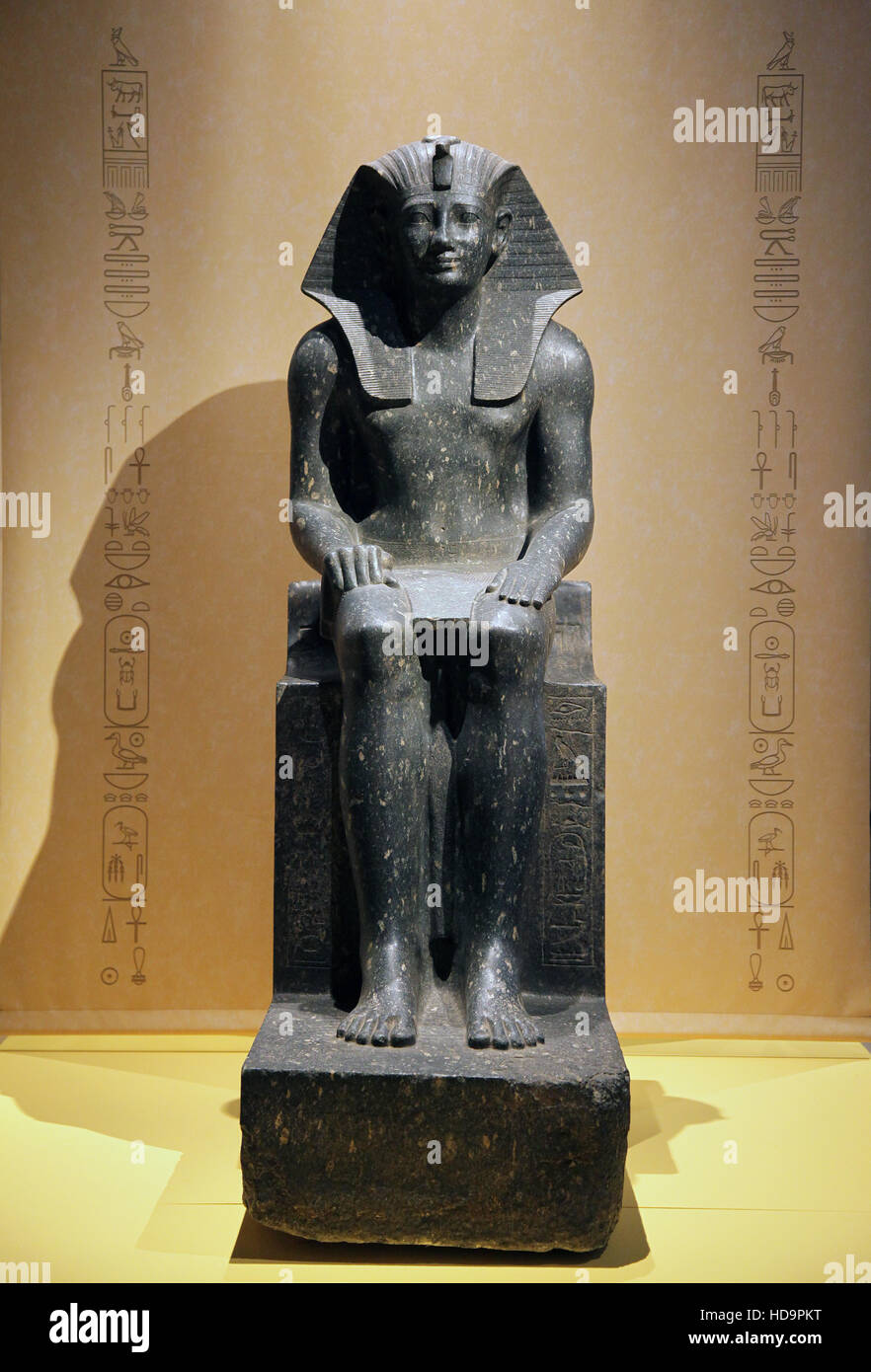 Thutmose I.18 th dynasty from karnak 1493-1483 bc Stock Photohttps://www.alamy.com/image-license-details/?v=1https://www.alamy.com/stock-photo-thutmose-i18-th-dynasty-from-karnak-1493-1483-bc-128678476.html
Thutmose I.18 th dynasty from karnak 1493-1483 bc Stock Photohttps://www.alamy.com/image-license-details/?v=1https://www.alamy.com/stock-photo-thutmose-i18-th-dynasty-from-karnak-1493-1483-bc-128678476.htmlRMHD9PKT–Thutmose I.18 th dynasty from karnak 1493-1483 bc
 Panoramic view of a Karnak temple from south Stock Photohttps://www.alamy.com/image-license-details/?v=1https://www.alamy.com/panoramic-view-of-a-karnak-temple-from-south-image66800351.html
Panoramic view of a Karnak temple from south Stock Photohttps://www.alamy.com/image-license-details/?v=1https://www.alamy.com/panoramic-view-of-a-karnak-temple-from-south-image66800351.htmlRMDTK0ER–Panoramic view of a Karnak temple from south
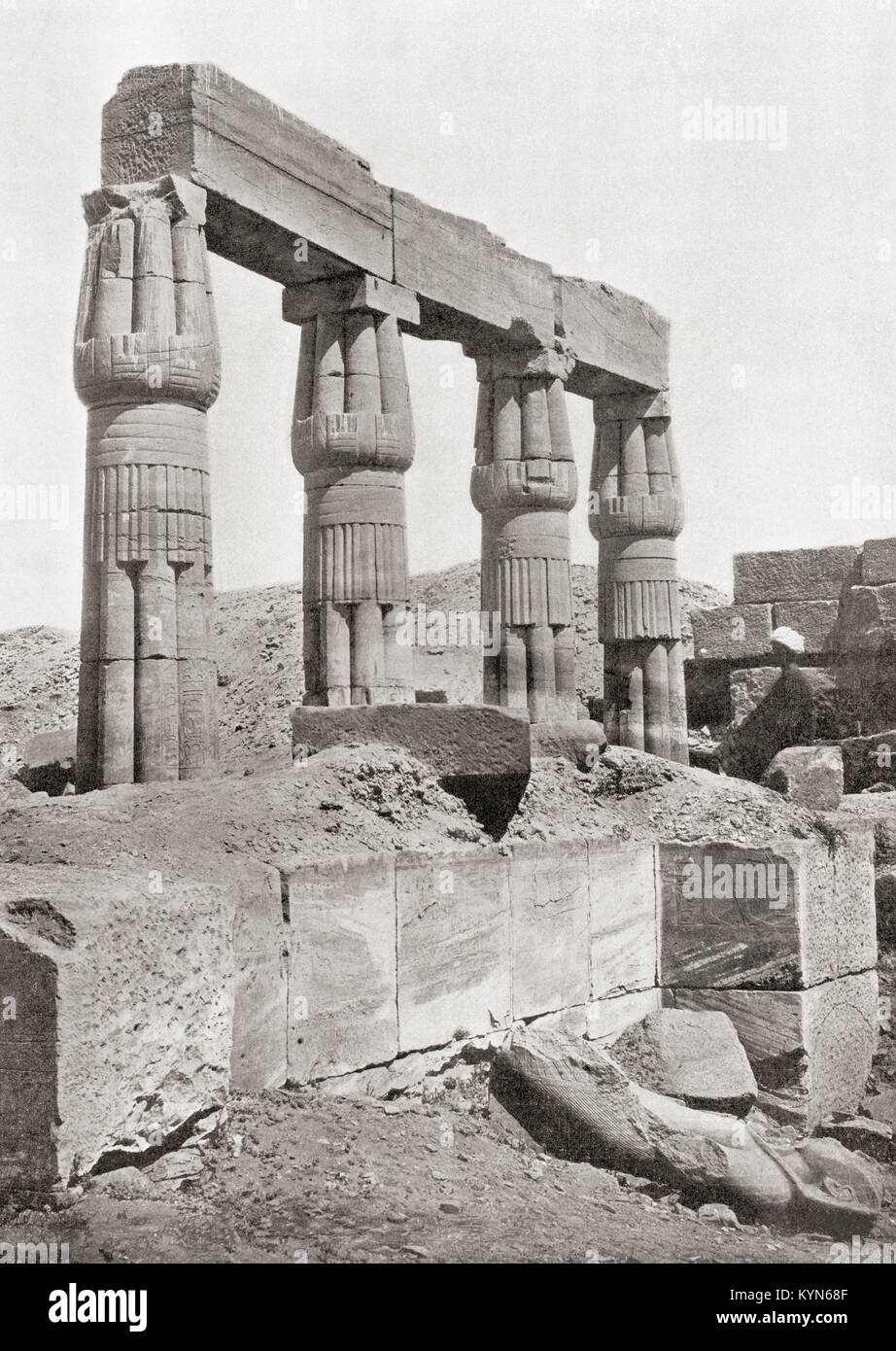 Columns in the Temple of Thutmose III aka Thutmosis, Tuthmosis III or Thothmes, Karnak, Egypt. From The Wonders of the World, published c.1920. Stock Photohttps://www.alamy.com/image-license-details/?v=1https://www.alamy.com/stock-photo-columns-in-the-temple-of-thutmose-iii-aka-thutmosis-tuthmosis-iii-171954959.html
Columns in the Temple of Thutmose III aka Thutmosis, Tuthmosis III or Thothmes, Karnak, Egypt. From The Wonders of the World, published c.1920. Stock Photohttps://www.alamy.com/image-license-details/?v=1https://www.alamy.com/stock-photo-columns-in-the-temple-of-thutmose-iii-aka-thutmosis-tuthmosis-iii-171954959.htmlRMKYN68F–Columns in the Temple of Thutmose III aka Thutmosis, Tuthmosis III or Thothmes, Karnak, Egypt. From The Wonders of the World, published c.1920.
 The coptic church of St. Mary overlooks the ancient avenue of the sphinxes road which is lined with sphinx statues leading from Karnak to luxor, Egypt. Stock Photohttps://www.alamy.com/image-license-details/?v=1https://www.alamy.com/the-coptic-church-of-st-mary-overlooks-the-ancient-avenue-of-the-sphinxes-road-which-is-lined-with-sphinx-statues-leading-from-karnak-to-luxor-egypt-image456111171.html
The coptic church of St. Mary overlooks the ancient avenue of the sphinxes road which is lined with sphinx statues leading from Karnak to luxor, Egypt. Stock Photohttps://www.alamy.com/image-license-details/?v=1https://www.alamy.com/the-coptic-church-of-st-mary-overlooks-the-ancient-avenue-of-the-sphinxes-road-which-is-lined-with-sphinx-statues-leading-from-karnak-to-luxor-egypt-image456111171.htmlRM2HE1JCK–The coptic church of St. Mary overlooks the ancient avenue of the sphinxes road which is lined with sphinx statues leading from Karnak to luxor, Egypt.
![Column from Karnak, Egypt, (1928). 'Papyrus composite column with bud capital...from the "promenoir"..in Karnak...the eastern part of the great Temple of Amun, the so-called Festive Temple of Tethmosis III...1501-1448 B.C.'. After Prisse D'Avennes. Plate III, fig 5, from "An Encyclopaedia of Colour Decoration from the Earliest Times to the Middle of the XIXth Century" with explanatory text by Helmuth Bossert. [Ernst Wasmuth Ltd., Berlin, 1928] Stock Photo Column from Karnak, Egypt, (1928). 'Papyrus composite column with bud capital...from the "promenoir"..in Karnak...the eastern part of the great Temple of Amun, the so-called Festive Temple of Tethmosis III...1501-1448 B.C.'. After Prisse D'Avennes. Plate III, fig 5, from "An Encyclopaedia of Colour Decoration from the Earliest Times to the Middle of the XIXth Century" with explanatory text by Helmuth Bossert. [Ernst Wasmuth Ltd., Berlin, 1928] Stock Photo](https://c8.alamy.com/comp/2A420EJ/column-from-karnak-egypt-1928-papyrus-composite-column-with-bud-capitalfrom-the-quotpromenoirquotin-karnakthe-eastern-part-of-the-great-temple-of-amun-the-so-called-festive-temple-of-tethmosis-iii1501-1448-bc-after-prisse-davennes-plate-iii-fig-5-from-quotan-encyclopaedia-of-colour-decoration-from-the-earliest-times-to-the-middle-of-the-xixth-centuryquot-with-explanatory-text-by-helmuth-bossert-ernst-wasmuth-ltd-berlin-1928-2A420EJ.jpg) Column from Karnak, Egypt, (1928). 'Papyrus composite column with bud capital...from the "promenoir"..in Karnak...the eastern part of the great Temple of Amun, the so-called Festive Temple of Tethmosis III...1501-1448 B.C.'. After Prisse D'Avennes. Plate III, fig 5, from "An Encyclopaedia of Colour Decoration from the Earliest Times to the Middle of the XIXth Century" with explanatory text by Helmuth Bossert. [Ernst Wasmuth Ltd., Berlin, 1928] Stock Photohttps://www.alamy.com/image-license-details/?v=1https://www.alamy.com/column-from-karnak-egypt-1928-papyrus-composite-column-with-bud-capitalfrom-the-quotpromenoirquotin-karnakthe-eastern-part-of-the-great-temple-of-amun-the-so-called-festive-temple-of-tethmosis-iii1501-1448-bc-after-prisse-davennes-plate-iii-fig-5-from-quotan-encyclopaedia-of-colour-decoration-from-the-earliest-times-to-the-middle-of-the-xixth-centuryquot-with-explanatory-text-by-helmuth-bossert-ernst-wasmuth-ltd-berlin-1928-image329499930.html
Column from Karnak, Egypt, (1928). 'Papyrus composite column with bud capital...from the "promenoir"..in Karnak...the eastern part of the great Temple of Amun, the so-called Festive Temple of Tethmosis III...1501-1448 B.C.'. After Prisse D'Avennes. Plate III, fig 5, from "An Encyclopaedia of Colour Decoration from the Earliest Times to the Middle of the XIXth Century" with explanatory text by Helmuth Bossert. [Ernst Wasmuth Ltd., Berlin, 1928] Stock Photohttps://www.alamy.com/image-license-details/?v=1https://www.alamy.com/column-from-karnak-egypt-1928-papyrus-composite-column-with-bud-capitalfrom-the-quotpromenoirquotin-karnakthe-eastern-part-of-the-great-temple-of-amun-the-so-called-festive-temple-of-tethmosis-iii1501-1448-bc-after-prisse-davennes-plate-iii-fig-5-from-quotan-encyclopaedia-of-colour-decoration-from-the-earliest-times-to-the-middle-of-the-xixth-centuryquot-with-explanatory-text-by-helmuth-bossert-ernst-wasmuth-ltd-berlin-1928-image329499930.htmlRM2A420EJ–Column from Karnak, Egypt, (1928). 'Papyrus composite column with bud capital...from the "promenoir"..in Karnak...the eastern part of the great Temple of Amun, the so-called Festive Temple of Tethmosis III...1501-1448 B.C.'. After Prisse D'Avennes. Plate III, fig 5, from "An Encyclopaedia of Colour Decoration from the Earliest Times to the Middle of the XIXth Century" with explanatory text by Helmuth Bossert. [Ernst Wasmuth Ltd., Berlin, 1928]
 Karnak. Taking out water from excavations Stock Photohttps://www.alamy.com/image-license-details/?v=1https://www.alamy.com/stock-photo-karnak-taking-out-water-from-excavations-36025181.html
Karnak. Taking out water from excavations Stock Photohttps://www.alamy.com/image-license-details/?v=1https://www.alamy.com/stock-photo-karnak-taking-out-water-from-excavations-36025181.htmlRMC2H2DH–Karnak. Taking out water from excavations
 Statue of Roy - high priest of Amun-Ra in Thebes. British Museum, Bloomsbury, London, England, UK. 19th Dynasty, c1220-1200BC from Karnak, Temple of M Stock Photohttps://www.alamy.com/image-license-details/?v=1https://www.alamy.com/statue-of-roy-high-priest-of-amun-ra-in-thebes-british-museum-bloomsbury-london-england-uk-19th-dynasty-c1220-1200bc-from-karnak-temple-of-m-image220885246.html
Statue of Roy - high priest of Amun-Ra in Thebes. British Museum, Bloomsbury, London, England, UK. 19th Dynasty, c1220-1200BC from Karnak, Temple of M Stock Photohttps://www.alamy.com/image-license-details/?v=1https://www.alamy.com/statue-of-roy-high-priest-of-amun-ra-in-thebes-british-museum-bloomsbury-london-england-uk-19th-dynasty-c1220-1200bc-from-karnak-temple-of-m-image220885246.htmlRMPRA5AP–Statue of Roy - high priest of Amun-Ra in Thebes. British Museum, Bloomsbury, London, England, UK. 19th Dynasty, c1220-1200BC from Karnak, Temple of M
 Egyptian Art. The Karnak Temple Complex. Relief depicting the goddess Wadjet from Lower Egypt. New Kingdom. Egypt. Stock Photohttps://www.alamy.com/image-license-details/?v=1https://www.alamy.com/stock-photo-egyptian-art-the-karnak-temple-complex-relief-depicting-the-goddess-70009539.html
Egyptian Art. The Karnak Temple Complex. Relief depicting the goddess Wadjet from Lower Egypt. New Kingdom. Egypt. Stock Photohttps://www.alamy.com/image-license-details/?v=1https://www.alamy.com/stock-photo-egyptian-art-the-karnak-temple-complex-relief-depicting-the-goddess-70009539.htmlRME1W5TK–Egyptian Art. The Karnak Temple Complex. Relief depicting the goddess Wadjet from Lower Egypt. New Kingdom. Egypt.
 Black granite statue of King Amenemhot III (1841-1792 BC from Karnak), Luxor Museum, Luxor, Egypt Stock Photohttps://www.alamy.com/image-license-details/?v=1https://www.alamy.com/black-granite-statue-of-king-amenemhot-iii-1841-1792-bc-from-karnak-image4444853.html
Black granite statue of King Amenemhot III (1841-1792 BC from Karnak), Luxor Museum, Luxor, Egypt Stock Photohttps://www.alamy.com/image-license-details/?v=1https://www.alamy.com/black-granite-statue-of-king-amenemhot-iii-1841-1792-bc-from-karnak-image4444853.htmlRMAE9PB6–Black granite statue of King Amenemhot III (1841-1792 BC from Karnak), Luxor Museum, Luxor, Egypt
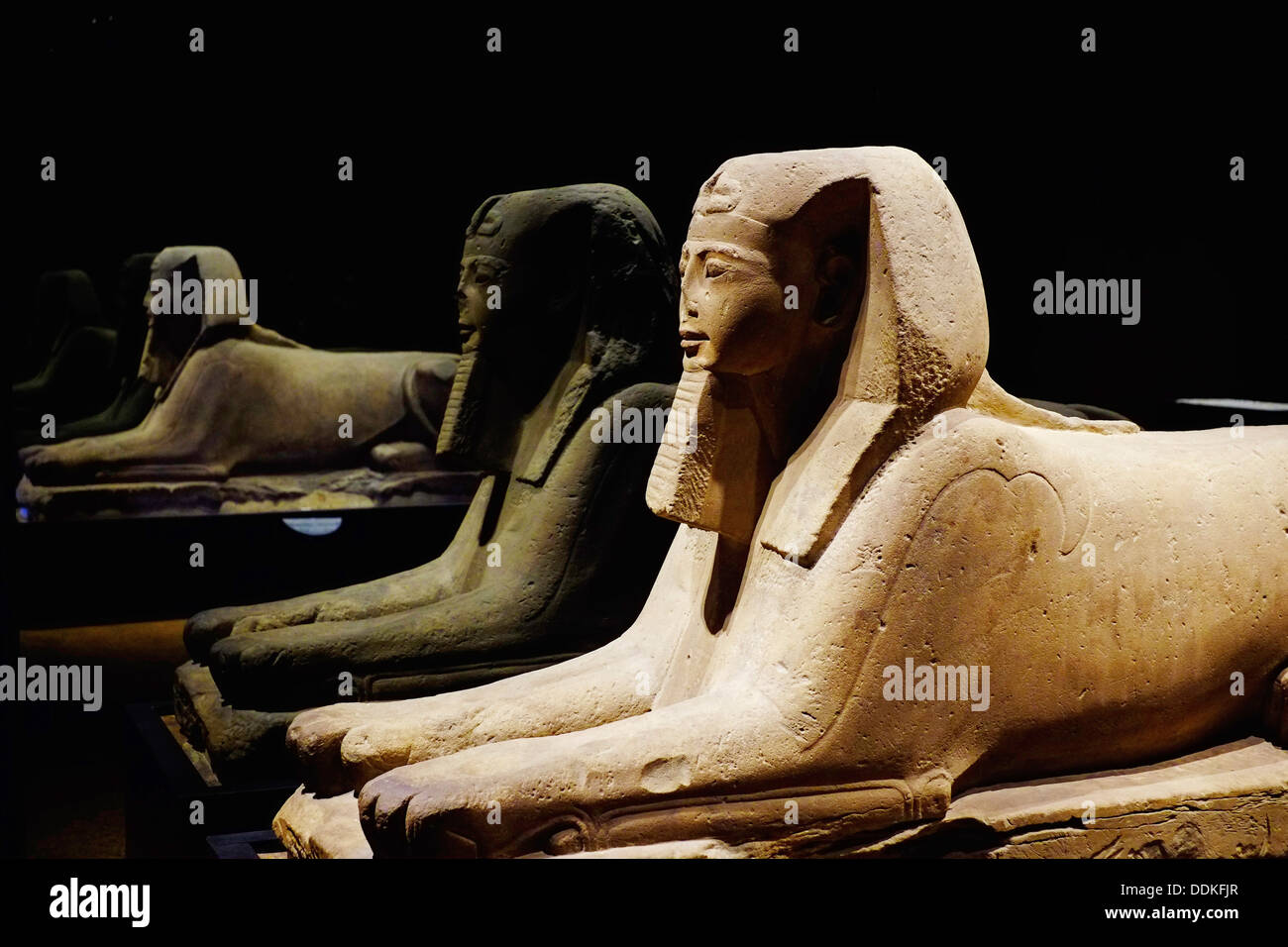 Italy, Piedmont, Turin, Egyptian museum, Sphinx statue from Karnak Stock Photohttps://www.alamy.com/image-license-details/?v=1https://www.alamy.com/italy-piedmont-turin-egyptian-museum-sphinx-statue-from-karnak-image60051007.html
Italy, Piedmont, Turin, Egyptian museum, Sphinx statue from Karnak Stock Photohttps://www.alamy.com/image-license-details/?v=1https://www.alamy.com/italy-piedmont-turin-egyptian-museum-sphinx-statue-from-karnak-image60051007.htmlRMDDKFJR–Italy, Piedmont, Turin, Egyptian museum, Sphinx statue from Karnak
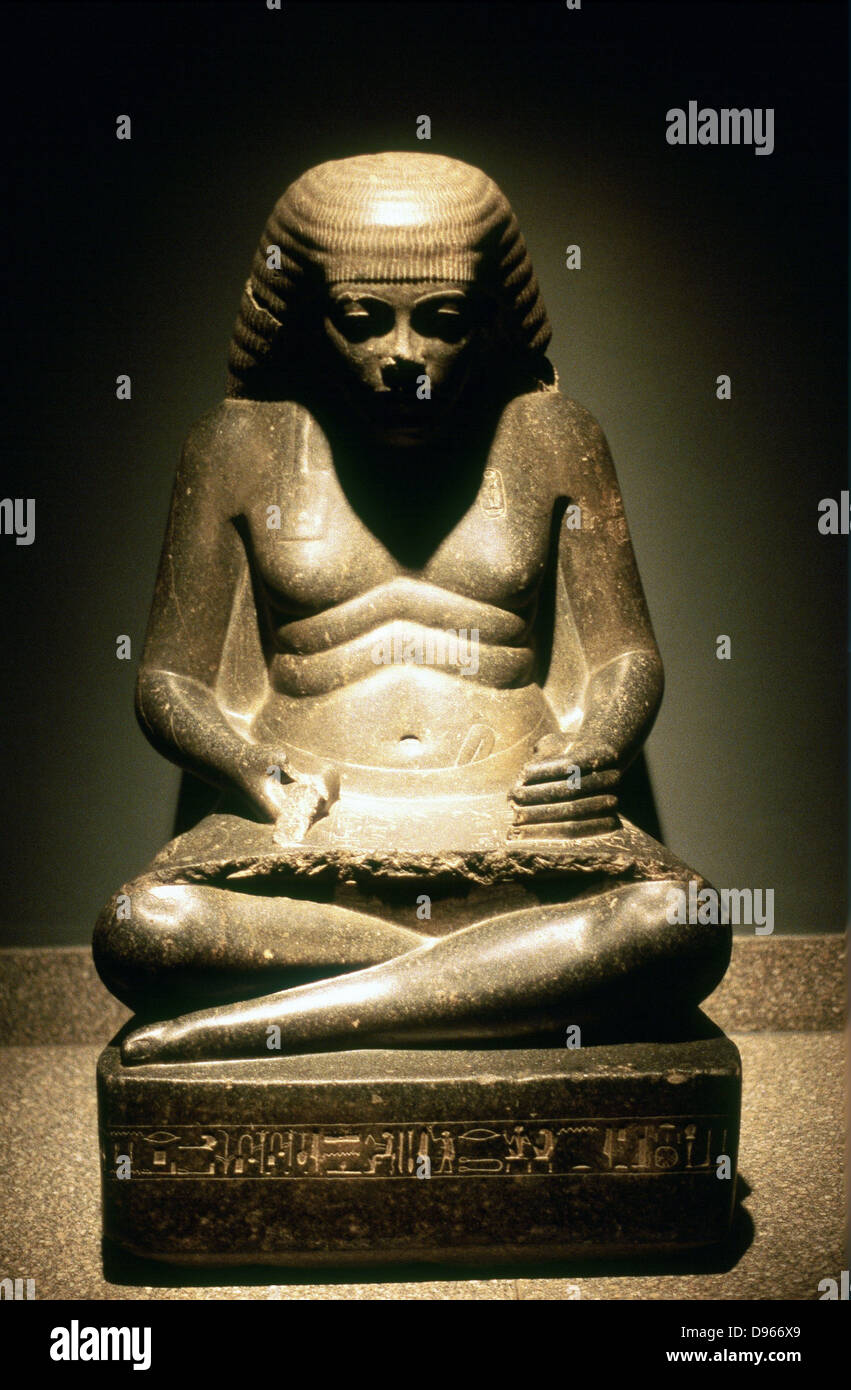 Ancient Egyptian scribe, seated. Granite statue from Karnak, 17/18th dynasty c1500 BC. Stock Photohttps://www.alamy.com/image-license-details/?v=1https://www.alamy.com/stock-photo-ancient-egyptian-scribe-seated-granite-statue-from-karnak-1718th-dynasty-57300161.html
Ancient Egyptian scribe, seated. Granite statue from Karnak, 17/18th dynasty c1500 BC. Stock Photohttps://www.alamy.com/image-license-details/?v=1https://www.alamy.com/stock-photo-ancient-egyptian-scribe-seated-granite-statue-from-karnak-1718th-dynasty-57300161.htmlRMD966X9–Ancient Egyptian scribe, seated. Granite statue from Karnak, 17/18th dynasty c1500 BC.
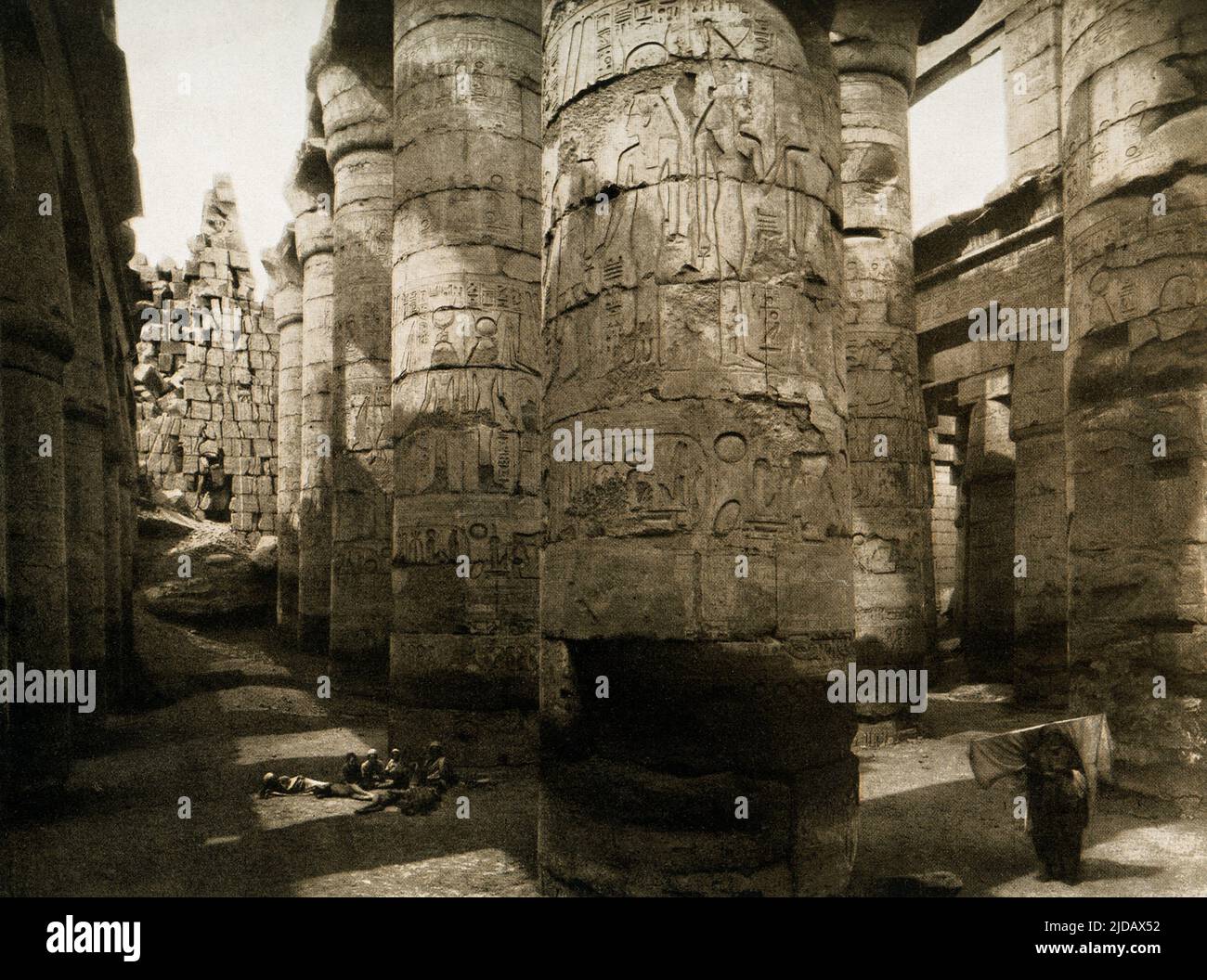 This 1910 image shows the ruins of the Hall of Columns at Karnak. The Great Hypostyle Hall Karnak is composed of 134 giant sandstone columns in the form of papyrus stalks. Twelve great columns in its central nave are 70-plus feet in height and are capped by huge open papyrus blossom capitals. The main east-west axis of the Hypostyle Hall is dominated by a double row of 12 giant columns. This image is from a photogravure in Egypt by the German archaeologists Ebers and Junghaendel. Stock Photohttps://www.alamy.com/image-license-details/?v=1https://www.alamy.com/this-1910-image-shows-the-ruins-of-the-hall-of-columns-at-karnak-the-great-hypostyle-hall-karnak-is-composed-of-134-giant-sandstone-columns-in-the-form-of-papyrus-stalks-twelve-great-columns-in-its-central-nave-are-70-plus-feet-in-height-and-are-capped-by-huge-open-papyrus-blossom-capitals-the-main-east-west-axis-of-the-hypostyle-hall-is-dominated-by-a-double-row-of-12-giant-columns-this-image-is-from-a-photogravure-in-egypt-by-the-german-archaeologists-ebers-and-junghaendel-image472910510.html
This 1910 image shows the ruins of the Hall of Columns at Karnak. The Great Hypostyle Hall Karnak is composed of 134 giant sandstone columns in the form of papyrus stalks. Twelve great columns in its central nave are 70-plus feet in height and are capped by huge open papyrus blossom capitals. The main east-west axis of the Hypostyle Hall is dominated by a double row of 12 giant columns. This image is from a photogravure in Egypt by the German archaeologists Ebers and Junghaendel. Stock Photohttps://www.alamy.com/image-license-details/?v=1https://www.alamy.com/this-1910-image-shows-the-ruins-of-the-hall-of-columns-at-karnak-the-great-hypostyle-hall-karnak-is-composed-of-134-giant-sandstone-columns-in-the-form-of-papyrus-stalks-twelve-great-columns-in-its-central-nave-are-70-plus-feet-in-height-and-are-capped-by-huge-open-papyrus-blossom-capitals-the-main-east-west-axis-of-the-hypostyle-hall-is-dominated-by-a-double-row-of-12-giant-columns-this-image-is-from-a-photogravure-in-egypt-by-the-german-archaeologists-ebers-and-junghaendel-image472910510.htmlRF2JDAX52–This 1910 image shows the ruins of the Hall of Columns at Karnak. The Great Hypostyle Hall Karnak is composed of 134 giant sandstone columns in the form of papyrus stalks. Twelve great columns in its central nave are 70-plus feet in height and are capped by huge open papyrus blossom capitals. The main east-west axis of the Hypostyle Hall is dominated by a double row of 12 giant columns. This image is from a photogravure in Egypt by the German archaeologists Ebers and Junghaendel.
 A statue from Karnak, British Museum, Victorian period Stock Photohttps://www.alamy.com/image-license-details/?v=1https://www.alamy.com/a-statue-from-karnak-british-museum-victorian-period-image454585711.html
A statue from Karnak, British Museum, Victorian period Stock Photohttps://www.alamy.com/image-license-details/?v=1https://www.alamy.com/a-statue-from-karnak-british-museum-victorian-period-image454585711.htmlRF2HBG4KY–A statue from Karnak, British Museum, Victorian period
 Obelisks and limestone slabs from temple remains, Thebes, photographed by Maison Bonfils, circa 1867-1885. The Karnak Temple Complex comprises a vast mix of decayed temples, chapels, pylons, and other buildings. Building at the complex began during the re Stock Photohttps://www.alamy.com/image-license-details/?v=1https://www.alamy.com/stock-photo-obelisks-and-limestone-slabs-from-temple-remains-thebes-photographed-104018328.html
Obelisks and limestone slabs from temple remains, Thebes, photographed by Maison Bonfils, circa 1867-1885. The Karnak Temple Complex comprises a vast mix of decayed temples, chapels, pylons, and other buildings. Building at the complex began during the re Stock Photohttps://www.alamy.com/image-license-details/?v=1https://www.alamy.com/stock-photo-obelisks-and-limestone-slabs-from-temple-remains-thebes-photographed-104018328.htmlRMG16CC8–Obelisks and limestone slabs from temple remains, Thebes, photographed by Maison Bonfils, circa 1867-1885. The Karnak Temple Complex comprises a vast mix of decayed temples, chapels, pylons, and other buildings. Building at the complex began during the re
 Luxor Museum Egypt Amun from Karnak XVIII Dynasty Ptolemaic Ruler Cult Stock Photohttps://www.alamy.com/image-license-details/?v=1https://www.alamy.com/luxor-museum-egypt-amun-from-karnak-xviii-dynasty-ptolemaic-ruler-image5663802.html
Luxor Museum Egypt Amun from Karnak XVIII Dynasty Ptolemaic Ruler Cult Stock Photohttps://www.alamy.com/image-license-details/?v=1https://www.alamy.com/luxor-museum-egypt-amun-from-karnak-xviii-dynasty-ptolemaic-ruler-image5663802.htmlRMA085RB–Luxor Museum Egypt Amun from Karnak XVIII Dynasty Ptolemaic Ruler Cult
 Luxor museum, Head of king Akhenaten(Amenhotep IV), from Karnak temple, Luxor, Egypt, North Africa, Africa Stock Photohttps://www.alamy.com/image-license-details/?v=1https://www.alamy.com/luxor-museum-head-of-king-akhenatenamenhotep-iv-from-karnak-temple-luxor-egypt-north-africa-africa-image618280214.html
Luxor museum, Head of king Akhenaten(Amenhotep IV), from Karnak temple, Luxor, Egypt, North Africa, Africa Stock Photohttps://www.alamy.com/image-license-details/?v=1https://www.alamy.com/luxor-museum-head-of-king-akhenatenamenhotep-iv-from-karnak-temple-luxor-egypt-north-africa-africa-image618280214.htmlRM2XWW2M6–Luxor museum, Head of king Akhenaten(Amenhotep IV), from Karnak temple, Luxor, Egypt, North Africa, Africa
 Avenue of Sphinxes, from the First Pylon, Karnak Egypt, circa 1900 Stock Photohttps://www.alamy.com/image-license-details/?v=1https://www.alamy.com/stock-photo-avenue-of-sphinxes-from-the-first-pylon-karnak-egypt-circa-1900-72190831.html
Avenue of Sphinxes, from the First Pylon, Karnak Egypt, circa 1900 Stock Photohttps://www.alamy.com/image-license-details/?v=1https://www.alamy.com/stock-photo-avenue-of-sphinxes-from-the-first-pylon-karnak-egypt-circa-1900-72190831.htmlRME5CG3Y–Avenue of Sphinxes, from the First Pylon, Karnak Egypt, circa 1900
 Waterfront and palm garden on the banks of the Nile from Mercure Hotel, Karnak near Luxor, Upper Egypt, Egypt Stock Photohttps://www.alamy.com/image-license-details/?v=1https://www.alamy.com/waterfront-and-palm-garden-on-the-banks-of-the-nile-from-mercure-hotel-karnak-near-luxor-upper-egypt-egypt-image273715583.html
Waterfront and palm garden on the banks of the Nile from Mercure Hotel, Karnak near Luxor, Upper Egypt, Egypt Stock Photohttps://www.alamy.com/image-license-details/?v=1https://www.alamy.com/waterfront-and-palm-garden-on-the-banks-of-the-nile-from-mercure-hotel-karnak-near-luxor-upper-egypt-egypt-image273715583.htmlRMWW8R0F–Waterfront and palm garden on the banks of the Nile from Mercure Hotel, Karnak near Luxor, Upper Egypt, Egypt
 EGYPTIAN MYTH Detail of sacred bull from hieroglyphic wall in the temple of Karnak. Stock Photohttps://www.alamy.com/image-license-details/?v=1https://www.alamy.com/egyptian-myth-detail-of-sacred-bull-from-hieroglyphic-wall-in-the-temple-of-karnak-image179661912.html
EGYPTIAN MYTH Detail of sacred bull from hieroglyphic wall in the temple of Karnak. Stock Photohttps://www.alamy.com/image-license-details/?v=1https://www.alamy.com/egyptian-myth-detail-of-sacred-bull-from-hieroglyphic-wall-in-the-temple-of-karnak-image179661912.htmlRMMC88GT–EGYPTIAN MYTH Detail of sacred bull from hieroglyphic wall in the temple of Karnak.
 Gateway of Ptolemy II at Karnak. Photograph from 1923 book. Stock Photohttps://www.alamy.com/image-license-details/?v=1https://www.alamy.com/stock-photo-gateway-of-ptolemy-ii-at-karnak-photograph-from-1923-book-83343805.html
Gateway of Ptolemy II at Karnak. Photograph from 1923 book. Stock Photohttps://www.alamy.com/image-license-details/?v=1https://www.alamy.com/stock-photo-gateway-of-ptolemy-ii-at-karnak-photograph-from-1923-book-83343805.htmlRMERGHTD–Gateway of Ptolemy II at Karnak. Photograph from 1923 book.
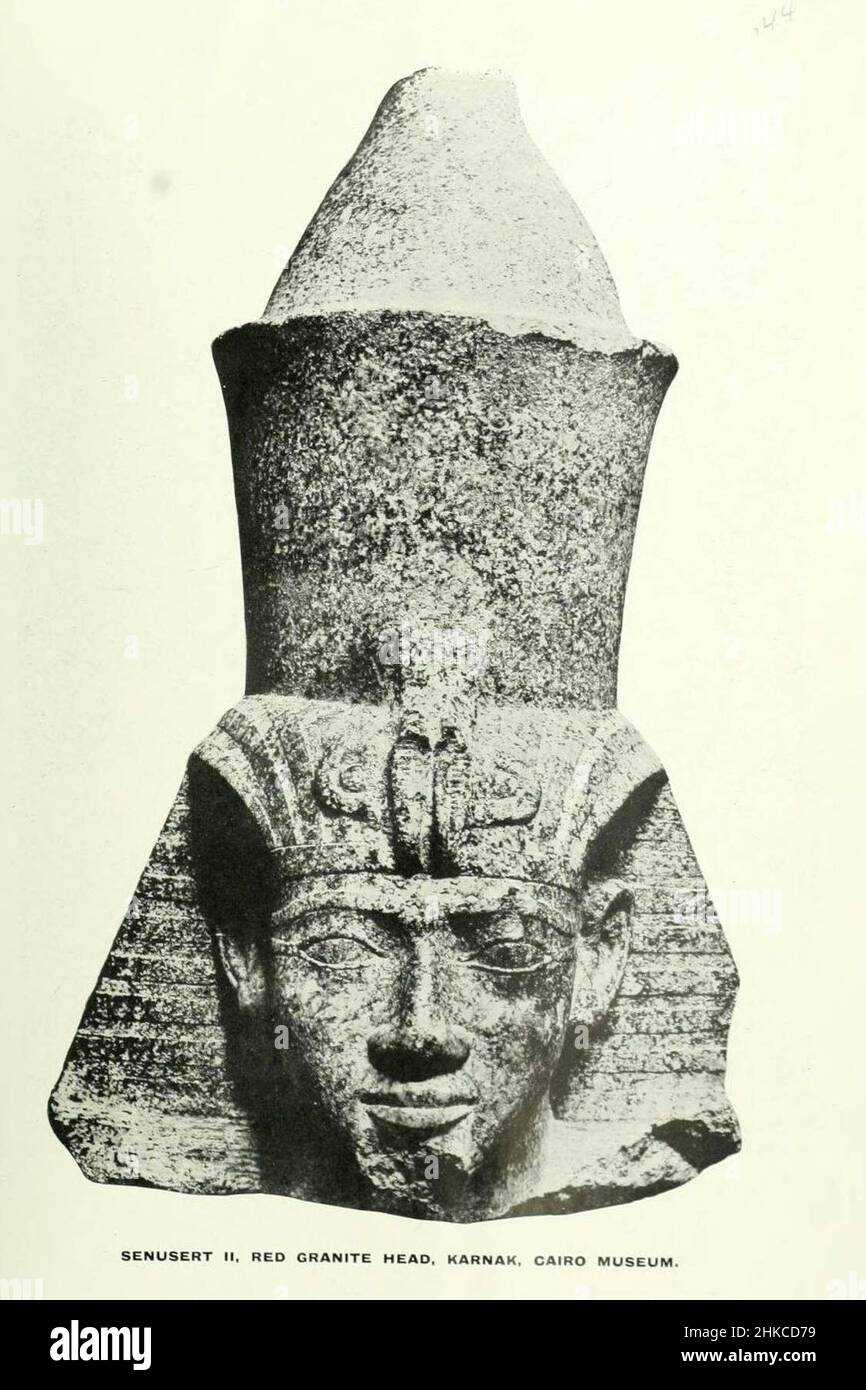 Head of a statue of Senusret II from Karnak Stock Photohttps://www.alamy.com/image-license-details/?v=1https://www.alamy.com/head-of-a-statue-of-senusret-ii-from-karnak-image459421853.html
Head of a statue of Senusret II from Karnak Stock Photohttps://www.alamy.com/image-license-details/?v=1https://www.alamy.com/head-of-a-statue-of-senusret-ii-from-karnak-image459421853.htmlRM2HKCD79–Head of a statue of Senusret II from Karnak
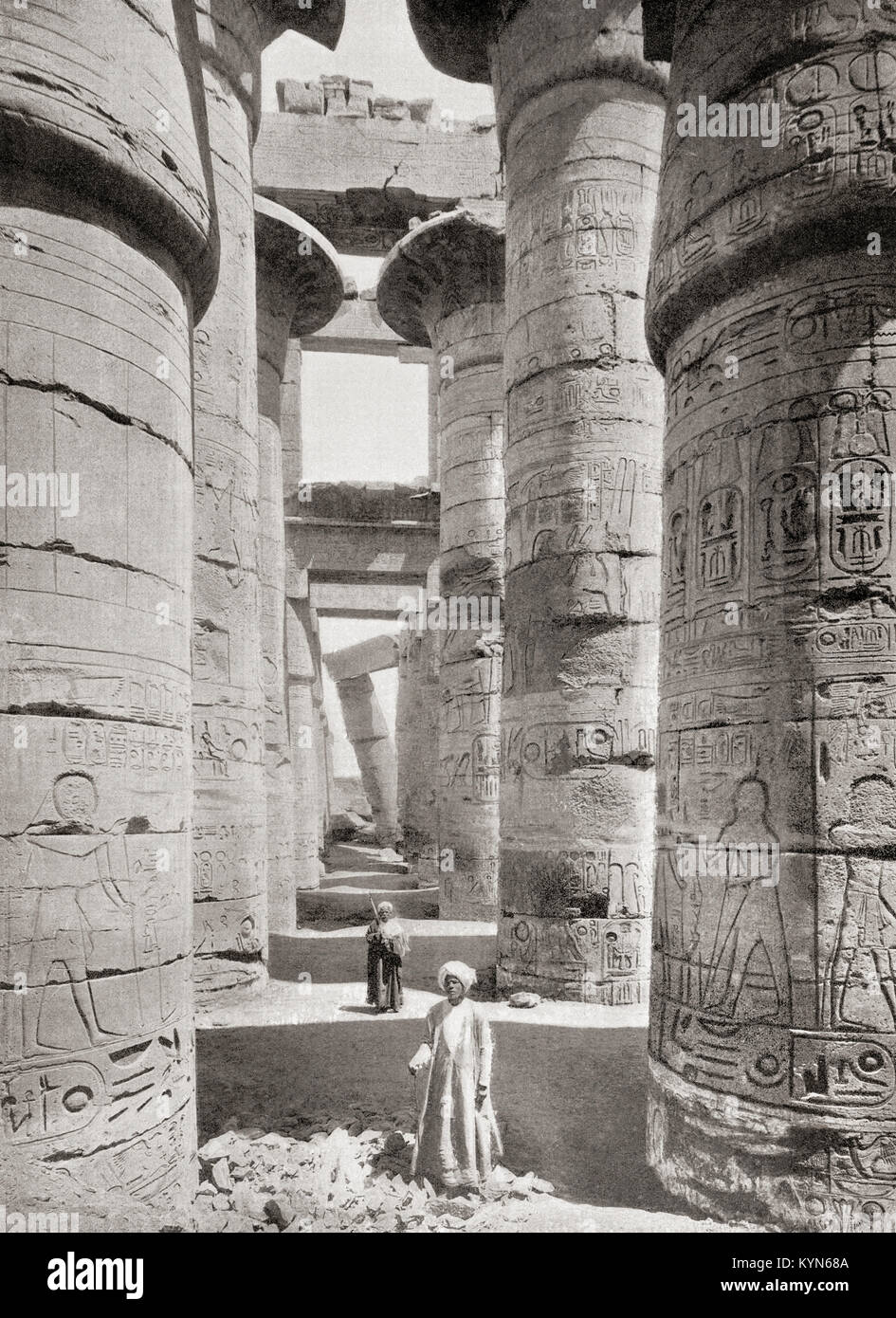 Pillars of the Great Hypostyle Hall from the Precinct of Amun-Re in the Great Temple at Karnak, Egypt. From The Wonders of the World, published c.1920. Stock Photohttps://www.alamy.com/image-license-details/?v=1https://www.alamy.com/stock-photo-pillars-of-the-great-hypostyle-hall-from-the-precinct-of-amun-re-in-171954954.html
Pillars of the Great Hypostyle Hall from the Precinct of Amun-Re in the Great Temple at Karnak, Egypt. From The Wonders of the World, published c.1920. Stock Photohttps://www.alamy.com/image-license-details/?v=1https://www.alamy.com/stock-photo-pillars-of-the-great-hypostyle-hall-from-the-precinct-of-amun-re-in-171954954.htmlRMKYN68A–Pillars of the Great Hypostyle Hall from the Precinct of Amun-Re in the Great Temple at Karnak, Egypt. From The Wonders of the World, published c.1920.
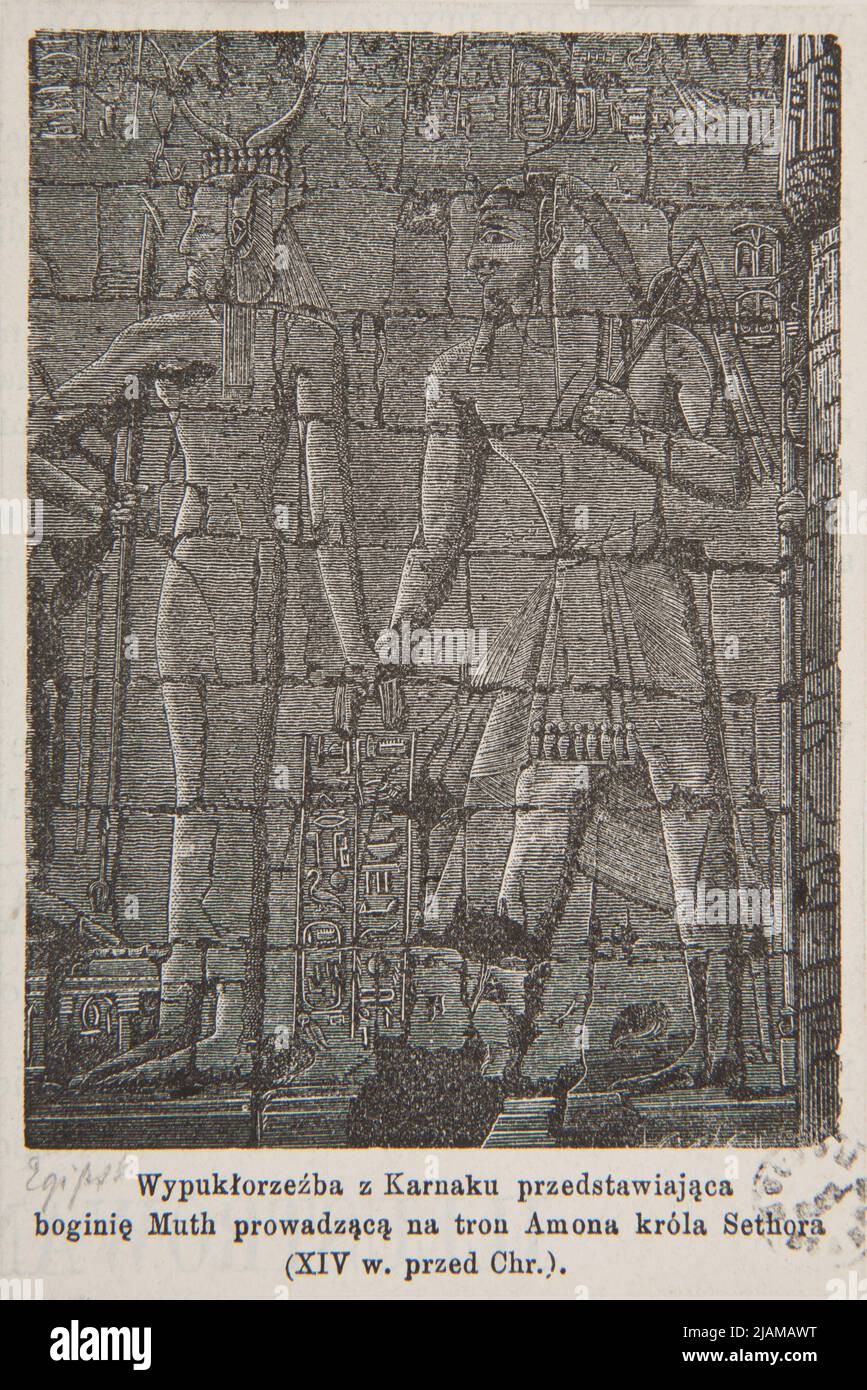 A convex from Karnak depicting the goddess Muth leading to the throne of Amon King Sethora. unknown Stock Photohttps://www.alamy.com/image-license-details/?v=1https://www.alamy.com/a-convex-from-karnak-depicting-the-goddess-muth-leading-to-the-throne-of-amon-king-sethora-unknown-image471274100.html
A convex from Karnak depicting the goddess Muth leading to the throne of Amon King Sethora. unknown Stock Photohttps://www.alamy.com/image-license-details/?v=1https://www.alamy.com/a-convex-from-karnak-depicting-the-goddess-muth-leading-to-the-throne-of-amon-king-sethora-unknown-image471274100.htmlRM2JAMAWT–A convex from Karnak depicting the goddess Muth leading to the throne of Amon King Sethora. unknown
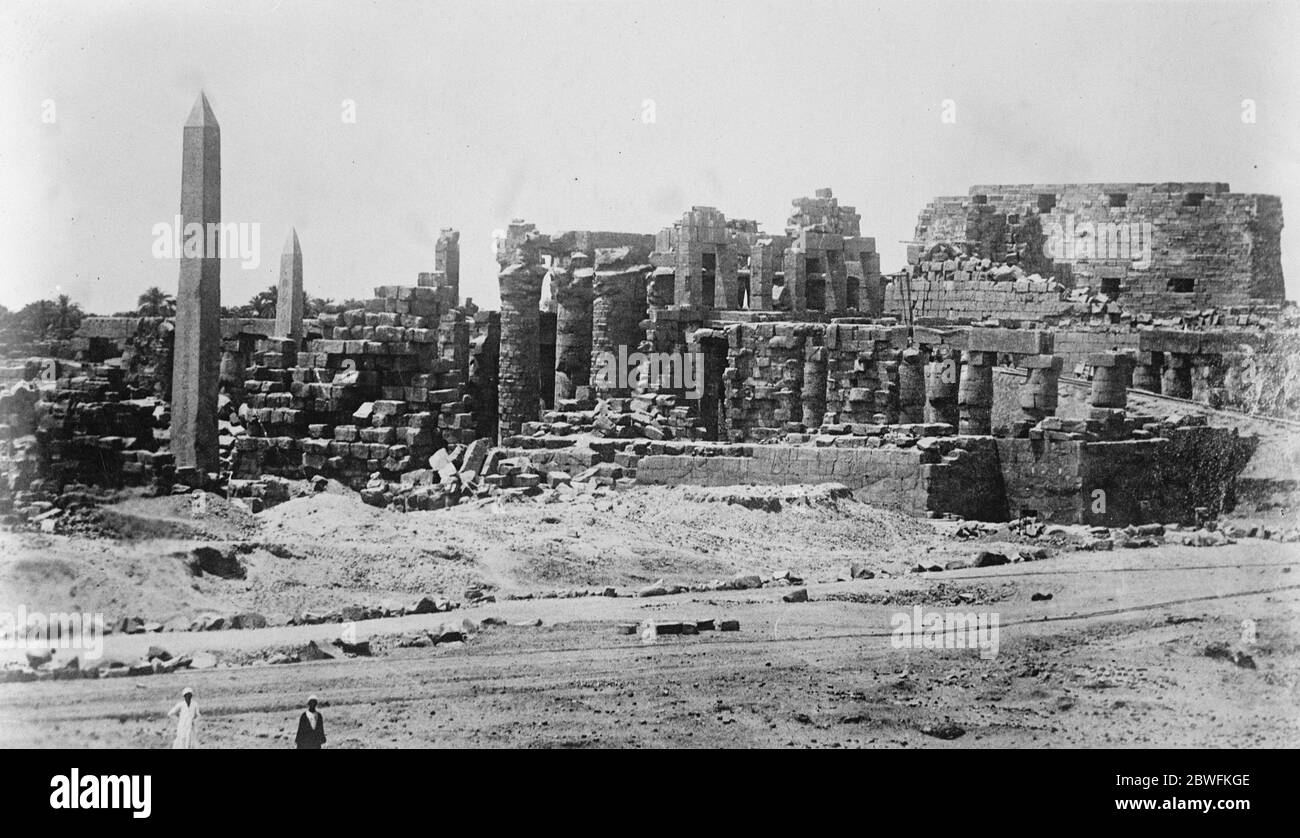 Famous temple in peril . It is reported that messages from Cairo state that the great Temple of Karnak is in grave danger on account of the infiltration of water , which is threatening the entire destruction of the monument . The Temple of Karnak . 23 March 1925 Stock Photohttps://www.alamy.com/image-license-details/?v=1https://www.alamy.com/famous-temple-in-peril-it-is-reported-that-messages-from-cairo-state-that-the-great-temple-of-karnak-is-in-grave-danger-on-account-of-the-infiltration-of-water-which-is-threatening-the-entire-destruction-of-the-monument-the-temple-of-karnak-23-march-1925-image359918398.html
Famous temple in peril . It is reported that messages from Cairo state that the great Temple of Karnak is in grave danger on account of the infiltration of water , which is threatening the entire destruction of the monument . The Temple of Karnak . 23 March 1925 Stock Photohttps://www.alamy.com/image-license-details/?v=1https://www.alamy.com/famous-temple-in-peril-it-is-reported-that-messages-from-cairo-state-that-the-great-temple-of-karnak-is-in-grave-danger-on-account-of-the-infiltration-of-water-which-is-threatening-the-entire-destruction-of-the-monument-the-temple-of-karnak-23-march-1925-image359918398.htmlRM2BWFKGE–Famous temple in peril . It is reported that messages from Cairo state that the great Temple of Karnak is in grave danger on account of the infiltration of water , which is threatening the entire destruction of the monument . The Temple of Karnak . 23 March 1925
 A Statue of Amun from Karnak Stock Photohttps://www.alamy.com/image-license-details/?v=1https://www.alamy.com/a-statue-of-amun-from-karnak-image490888090.html
A Statue of Amun from Karnak Stock Photohttps://www.alamy.com/image-license-details/?v=1https://www.alamy.com/a-statue-of-amun-from-karnak-image490888090.htmlRF2KEHTNE–A Statue of Amun from Karnak
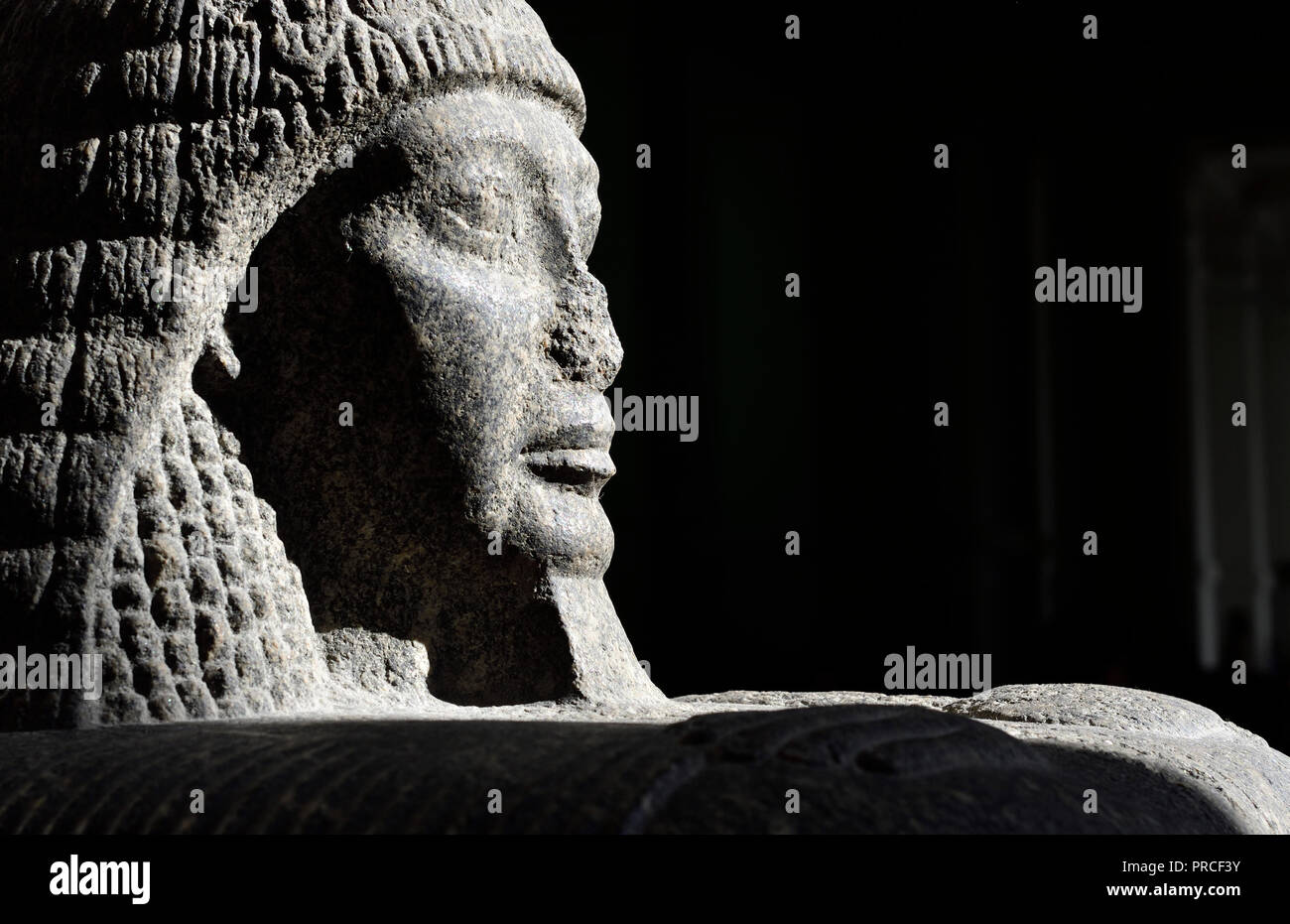 Statue of Roy - high priest of Amun-Ra in Thebes. British Museum, Bloomsbury, London, England, UK. 19th Dynasty, c1220-1200BC from Karnak, Temple of M Stock Photohttps://www.alamy.com/image-license-details/?v=1https://www.alamy.com/statue-of-roy-high-priest-of-amun-ra-in-thebes-british-museum-bloomsbury-london-england-uk-19th-dynasty-c1220-1200bc-from-karnak-temple-of-m-image220936799.html
Statue of Roy - high priest of Amun-Ra in Thebes. British Museum, Bloomsbury, London, England, UK. 19th Dynasty, c1220-1200BC from Karnak, Temple of M Stock Photohttps://www.alamy.com/image-license-details/?v=1https://www.alamy.com/statue-of-roy-high-priest-of-amun-ra-in-thebes-british-museum-bloomsbury-london-england-uk-19th-dynasty-c1220-1200bc-from-karnak-temple-of-m-image220936799.htmlRMPRCF3Y–Statue of Roy - high priest of Amun-Ra in Thebes. British Museum, Bloomsbury, London, England, UK. 19th Dynasty, c1220-1200BC from Karnak, Temple of M
 Relief depicting pharaoh Sety I(1314-1304 BC). Head and hand. 19th Dynasty. New Kingdom. From a wall of the great hypostyles hall. Karnak Temple. Thebes, Egypt. Museum of Mediterranean and Near Eastern Antiquities. Stockholm. Sweden. Stock Photohttps://www.alamy.com/image-license-details/?v=1https://www.alamy.com/stock-photo-relief-depicting-pharaoh-sety-i1314-1304-bc-head-and-hand-19th-dynasty-129603302.html
Relief depicting pharaoh Sety I(1314-1304 BC). Head and hand. 19th Dynasty. New Kingdom. From a wall of the great hypostyles hall. Karnak Temple. Thebes, Egypt. Museum of Mediterranean and Near Eastern Antiquities. Stockholm. Sweden. Stock Photohttps://www.alamy.com/image-license-details/?v=1https://www.alamy.com/stock-photo-relief-depicting-pharaoh-sety-i1314-1304-bc-head-and-hand-19th-dynasty-129603302.htmlRMHERX9A–Relief depicting pharaoh Sety I(1314-1304 BC). Head and hand. 19th Dynasty. New Kingdom. From a wall of the great hypostyles hall. Karnak Temple. Thebes, Egypt. Museum of Mediterranean and Near Eastern Antiquities. Stockholm. Sweden.
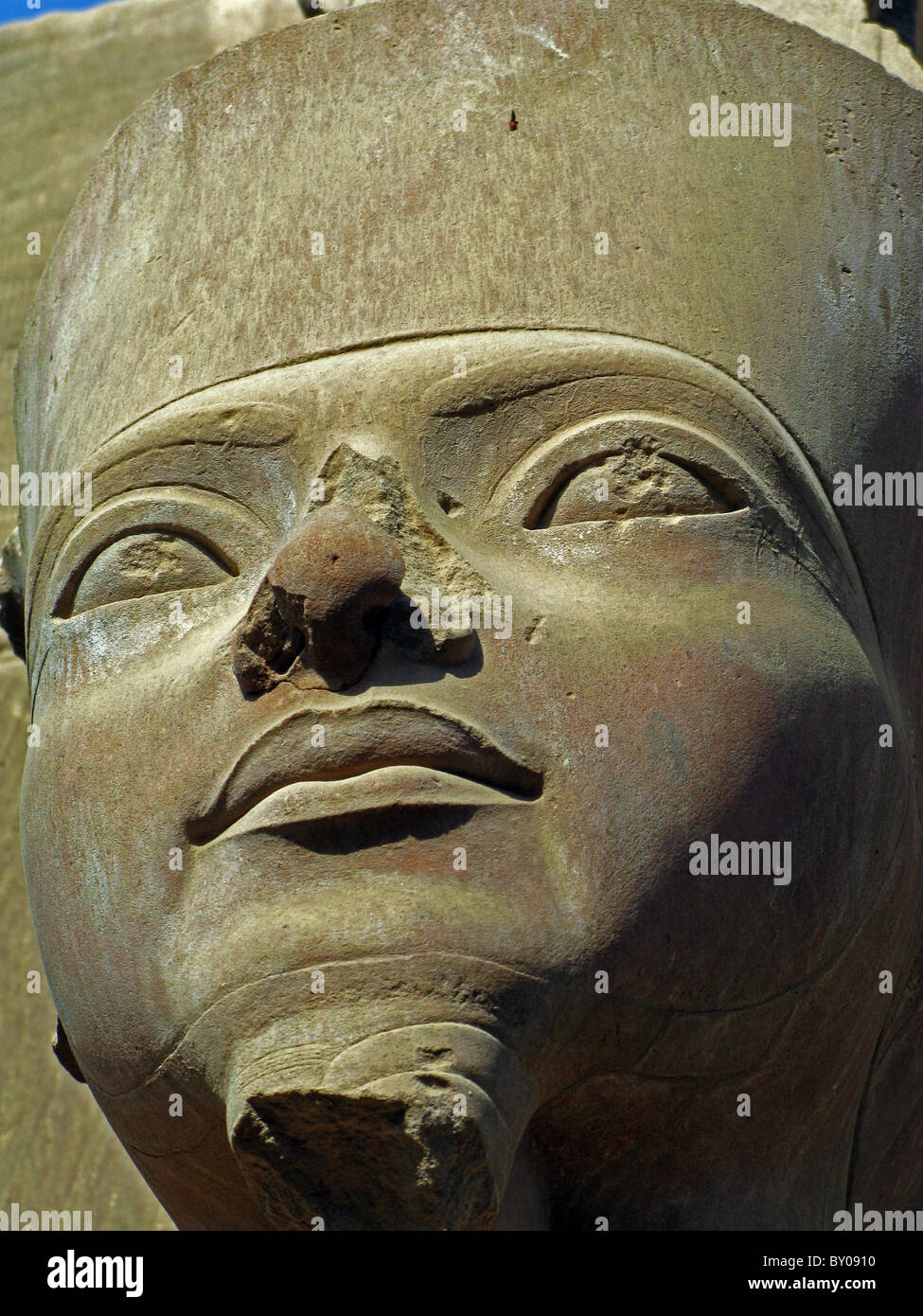 Face of a statue from Karnak Temple Stock Photohttps://www.alamy.com/image-license-details/?v=1https://www.alamy.com/stock-photo-face-of-a-statue-from-karnak-temple-33813164.html
Face of a statue from Karnak Temple Stock Photohttps://www.alamy.com/image-license-details/?v=1https://www.alamy.com/stock-photo-face-of-a-statue-from-karnak-temple-33813164.htmlRFBY0910–Face of a statue from Karnak Temple
 Egyptian antique hieroglyphs from Karnak Temple Complex Stock Photohttps://www.alamy.com/image-license-details/?v=1https://www.alamy.com/egyptian-antique-hieroglyphs-from-karnak-temple-complex-image374250130.html
Egyptian antique hieroglyphs from Karnak Temple Complex Stock Photohttps://www.alamy.com/image-license-details/?v=1https://www.alamy.com/egyptian-antique-hieroglyphs-from-karnak-temple-complex-image374250130.htmlRF2CMTFT2–Egyptian antique hieroglyphs from Karnak Temple Complex
 Black granite statues of Sekhmet in the British Museum, London. From Karnak, Thebes, Egypt 18th Dynasty, 1360 BC. The goddess Sekhmet is associated with destruction. Stock Photohttps://www.alamy.com/image-license-details/?v=1https://www.alamy.com/black-granite-statues-of-sekhmet-in-the-british-museum-london-from-image68525304.html
Black granite statues of Sekhmet in the British Museum, London. From Karnak, Thebes, Egypt 18th Dynasty, 1360 BC. The goddess Sekhmet is associated with destruction. Stock Photohttps://www.alamy.com/image-license-details/?v=1https://www.alamy.com/black-granite-statues-of-sekhmet-in-the-british-museum-london-from-image68525304.htmlRMDYDGM8–Black granite statues of Sekhmet in the British Museum, London. From Karnak, Thebes, Egypt 18th Dynasty, 1360 BC. The goddess Sekhmet is associated with destruction.
 Night scene from karnak temple, Egypt, september 2018 Stock Photohttps://www.alamy.com/image-license-details/?v=1https://www.alamy.com/night-scene-from-karnak-temple-egypt-september-2018-image376825493.html
Night scene from karnak temple, Egypt, september 2018 Stock Photohttps://www.alamy.com/image-license-details/?v=1https://www.alamy.com/night-scene-from-karnak-temple-egypt-september-2018-image376825493.htmlRF2CW1TN9–Night scene from karnak temple, Egypt, september 2018
 A statue from Karnak, British Museum, Victorian period Stock Photohttps://www.alamy.com/image-license-details/?v=1https://www.alamy.com/a-statue-from-karnak-british-museum-victorian-period-image454585710.html
A statue from Karnak, British Museum, Victorian period Stock Photohttps://www.alamy.com/image-license-details/?v=1https://www.alamy.com/a-statue-from-karnak-british-museum-victorian-period-image454585710.htmlRF2HBG4KX–A statue from Karnak, British Museum, Victorian period
 Statue of the god Amoun, from Karnak, Luxor Museum, Luxor, Egypt. Stock Photohttps://www.alamy.com/image-license-details/?v=1https://www.alamy.com/statue-of-the-god-amoun-from-karnak-luxor-museum-luxor-egypt-image628191788.html
Statue of the god Amoun, from Karnak, Luxor Museum, Luxor, Egypt. Stock Photohttps://www.alamy.com/image-license-details/?v=1https://www.alamy.com/statue-of-the-god-amoun-from-karnak-luxor-museum-luxor-egypt-image628191788.htmlRM2YE0H10–Statue of the god Amoun, from Karnak, Luxor Museum, Luxor, Egypt.